
Made to Break: Technology and Obsolescence in America
by
Giles Slade
Published 14 Apr 2006
The Status Seekers (1959) was a groundbreaking examination of America’s social and organizational dynamics, and The Waste Makers (1960) was a highly critical book-length study of planned obsolescence in contemporary American culture. At the appearance of The Hidden Persuaders, as America fell into recession, the debate over planned obsolescence exploded into a national controversy. In 1958 similar criticisms appeared in Galbraith’s Afflu nt Society. By 1959 discussions of planned obsolescence in the conservative pages of the Harvard Business Review created a surge of renewed interest in Packard’s firs book, which had contained numerous observations about planned obsolescence. With the topic now achieving national prominence, Packard wanted to return to it in a book-length study focused specifica ly on waste.
…
Although Brooks Stevens had understood planned obsolescence to mean psychological obsolescence (making consumer goods appear dated through the use of design), Waldheim’s piece, by a committed former teacher of industrial design,explicitly concerned death-dating.It was the magazine’s fina word on the subject of planned obsolescence, a term that appeared in the Design News debate for the firs and only time in Waldheim’s essay. And of course it is significan that Design News chose not to run a piece in favor of planned obsolescence by Milwaukee’s crown prince of obsolescence, Stevens himself. By 1959 planned obsolescence had become a very unpopular business strategy.
…
I am considerably indebted both for her generosity and friendship to the Library of Congress’s gifted reference librarian, Emily Howie, for patiently digging out and photocopying one of the few survival original copies of London’s firs pamphlet. In total, Bernard London wrote three essays: Ending the Depression Through Planned Obsolescence (New York:self-published,1932),2 pp.; The New Prosperity through Planned Obsolescence: Permanent Employment, Wise Taxation and Equitable Distribution of Wealth (New York: self-published, 1934),67 pp.;and Rebuilding a Prosperous Nation through Planned Obsolescence (New York: self-published, 1935), 40 pp. All are available at the Library of Congress. 38. London, Ending the Depression through Planned Obsolescence. 39. Ibid., pp. 6–7. 40. Ibid., p. 12. 41. Ibid., p. 13. 42. Aldous Huxley, Brave New World (Harmondsworth: Penguin, 1959), p. 49. 43.

A Life Less Throwaway: The Lost Art of Buying for Life
by
Tara Button
Published 8 Feb 2018
•Feeling close to nature has been shown to decrease materialism, so get out as much as possible, even if you just go into your back garden or a public park. Nature documentaries can also be a lovely way to escape from seeing ‘stuff’. * * * 2 Planned Obsolescence or Why they don’t make ’em like they used to ‘Obsolescence’ is a horrible mouthful of a word that essentially means ‘when something becomes useless’. ‘Planned obsolescence’, therefore, is when people plan for products to become useless. Deliberately. Let that sink in for a second. There are two main ways planned obsolescence happens. The first is physical, where companies design products to break before they need to. That is the subject of this chapter.
…
The other is psychological obsolescence, where people are made to feel that they no longer want the possessions they already have. We’ll look at that in the next chapter. But first I’m going to take you back to the Twenties and Thirties to discover how planned obsolescence came about. I’ll also share with you some of the shocking evidence of companies who have conspired against us to change the way we buy forever. WHO PLANNED IT? Planned obsolescence was born and brought up (to be very naughty) in America. ‘Obsolescence is the American way,’ boasted industrial designers Roy Sheldon and Egmont Arens in their 1932 book Consumer Engineering. And certainly Americans took quickly to the idea of rampantly replacing their possessions, while Europeans still held on to theirs as long as possible.
…
The stock market had crashed and the country was in the middle of what became known as the Great Depression, with millions jobless and around half of all children without decent shelter or food to eat. In these conditions we can’t blame people for clutching at ideas like planned obsolescence to solve the issues, even if we are now left to deal with the fallout. In 1932 a Russian-American called Bernard London published a grand plan entitled ‘Ending the Depression Through Planned Obsolescence’. After noticing that people held onto their products longer in a depression and this meant less money being spent on goods, he suggested that every product, from shoes to cars, houses to hats, be given a set lifespan.
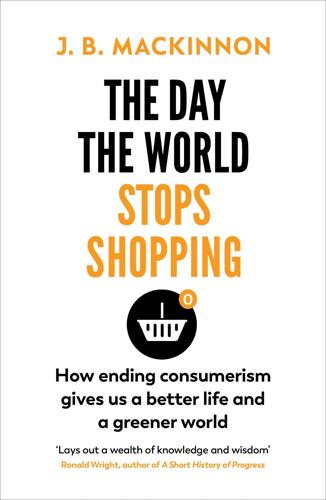
The Day the World Stops Shopping
by
J. B. MacKinnon
Published 14 May 2021
The member companies of Phoebus agreed to depress lamp life to a thousand-hour standard. More than three decades later, in 1960, muckraking journalist Vance Packard popularized the term “planned obsolescence” to describe manufacturers’ deliberate efforts to design products so that they are quickly used up, stop working, fall apart, cannot be fixed, or otherwise become stale-dated. The Phoebus cartel’s decision to shorten bulb lifespans is considered one of the earliest examples of planned obsolescence at an industrial scale. Phoebus is easily cast as a conspiracy of big-business evil-doers. It even makes an appearance as such in Thomas Pynchon’s novel Gravity’s Rainbow, in which the shadowy organization sends an agent in asbestos-lined gloves and seven-inch heels to seize die-hard bulbs that burn beyond their thousandth hour of service.
…
By the late 1920s, the repetitive sales model had become so popular that a leading financier declared obsolescence the “new god” of the American business elite. Advocates for shorter product lifespans could be found across the political spectrum. Giles Slade, in his book Made to Break, traces the term “planned obsolescence” to its roots. The earliest reference he found was in a 1932 pamphlet, “Ending the Depression through Planned Obsolescence,” that promoted short-lived products as beneficial to the working class. In 1936, a similarly themed essay in the magazine Printers’ Ink declared durable products “outmoded” and warned, “If Merchandise Does Not Wear Out Faster, Factories Will Be Idle, People Unemployed.”
…
Many of today’s clothes are not, in any case, made to last: socks and tights that fall apart in a matter of hours, shirts that lose buttons, trousers that tear, sweaters that pill, clothing that shrinks or stains or is ruined at the cleaners, T-shirts that get those tiny, mysterious holes that are a staple of internet threads. (Do I have moths? Bugs? No, you have planned obsolescence. The holes are caused by today’s thin fabrics rubbing at the belt line, against countertops, and what have you.) The ultimate in clothing turnover is the white T-shirt, which is cheaply made, stains easily, and sells poorly in second-hand stores because no one wants to wear your cheap and stained white T-shirt.

Less Is More: How Degrowth Will Save the World
by
Jason Hickel
Published 12 Aug 2020
In fact, in a growth-oriented system, the goal is quite often to avoid satisfying human needs, and even to perpetuate need itself. Once we understand this, it becomes clear that there are huge chunks of the economy that are actively and intentionally wasteful, and which do not serve any recognisable human purpose. Step 1. End planned obsolescence Nowhere is this tendency clearer than when it comes to the practice of planned obsolescence. Companies desperate to increase sales seek to create products that are intended to break down and require replacement after a relatively short period of time. The practice was first developed in the 1920s, when lightbulb manufacturers, led by the US company General Electric, formed a cartel and plotted to shorten the lifespan of incandescent bulbs – from an average of about to 2,500 hours down to 1,000 or even less.3 It worked like a charm.
…
Nylon stockings that are designed to tear after a few wears, devices with new ports that render old dongles and chargers useless – everyone has stories about the absurdities of planned obsolescence. IKEA became a multi-billion-dollar empire in large part by inventing furniture that is effectively disposable. Whole swathes of Scandinavia’s forests have been churned into cheap tables and shelving units that are designed for the dump. There’s a paradox here. We like to think of capitalism as a system that’s built on rational efficiency, but in reality it is exactly the opposite. Planned obsolescence is a form of intentional inefficiency. The inefficiency is (bizarrely) rational in terms of maximising profits, but from the perspective of human need, and from the perspective of ecology, it is madness: madness in terms of the resources it wastes, and madness in terms of the needless energy it consumes.
…
Instead of mindlessly pursuing growth in every sector, whether or not we actually need it, we can decide what kinds of things we want to grow (sectors like clean energy, public healthcare, essential services, regenerative agriculture – you name it), and what sectors need to radically degrow (things like fossil fuels, private jets, arms and SUVs). We can also scale down the parts of the economy that are designed purely to maximise profits rather than to meet human needs, like planned obsolescence, where products are made to break down after a short time, or advertising strategies intended to manipulate our emotions and make us feel that what we have is inadequate. As we liberate people from the toil of unnecessary labour, we can shorten the working week to maintain full employment, distribute income and wealth more fairly, and invest in public goods like universal healthcare, education and affordable housing.
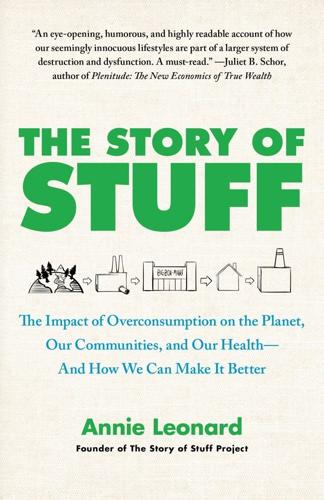
The Story of Stuff: The Impact of Overconsumption on the Planet, Our Communities, and Our Health-And How We Can Make It Better
by
Annie Leonard
Published 22 Feb 2011
And a glut would be very bad for business indeed. So the architects of the system came up with a strategy to keep consumers buying: planned obsolescence. Another name for planned obsolescence is “designed for the dump.” Brooks Stevens, an American industrial designer who is widely credited with popularizing the term in the 1950s, defined it as “instilling in the buyer the desire to own something a little newer, a little better, a little sooner than is necessary.”55 In planned obsolescence, products are intended to be thrown away as quickly as possible and then replaced. (That’s called “shortening the replacement cycle.”)
…
Today’s cell phones, for example, which have an average life span of only about a year, are pretty much never technologically obsolete when we throw them away and replace them with new ones. That’s planned obsolescence at work. The idea of planned obsolescence gained currency in the 1920s and 30s as government and businesspeople realized that our industries were making more Stuff than people cared to, or could afford to, buy. In 1932, a real estate broker named Bernard London who wanted to play his part in stimulating the economy distributed his now infamous pamphlet called Ending the Depression through Planned Obsolescence. In it London argued for creating a government agency tasked with assigning death dates to specific consumer products, at which time consumers would be required to turn the Stuff in for replacements, even if they still worked fine.
…
Now, not every lousy thing that industry has done was intentional and manipulative, but this one was. Corporate decision makers, industrial designers, economic planners, and advertising men actively, strategically promoted planned obsolescence as a way to keep the engine of the economy running. In his 1960 book The Waste Makers (one of my all time favorite reads), social critic Vance Packard documents the early debates about planned obsolescence in consumer products in the 1950s and 60s. While some individuals opposed the idea, worrying that it was unethical and jeopardized their professional credibility, others recognized it as a way to ensure never-ending markets for all the Stuff they designed, produced, and advertised—and they embraced it wholeheartedly.
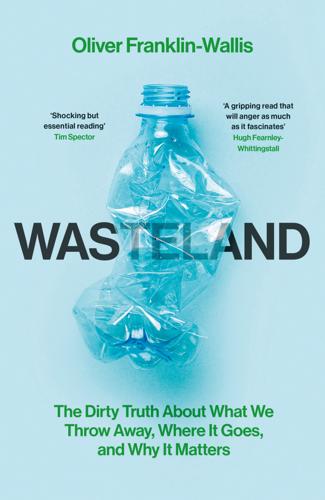
Wasteland: The Dirty Truth About What We Throw Away, Where It Goes, and Why It Matters
by
Oliver Franklin-Wallis
Published 21 Jun 2023
This is partly good old-fashioned nostalgia, but it’s also something real, intuited in our everyday lives and easily proven in any junkyard or landfill. Goods cheaply bought are cheaply made – no surprise there. But when it comes to e-waste, that sense is often followed by another, more serious allegation: that of ‘planned obsolescence’, by which industries design products with artificially short lives, so that they need to be replaced more quickly. Planned obsolescence is often treated as some kind of conspiracy, when in reality it is just a historical fact. The idea first gained traction as early as the 1920s, when manufacturers were coming up with means to convince people to upgrade to newer models.
…
CONTROL, DELETE 1 Vanessa Forti, Cornelis Peter Baldé et al., The Global E-waste Monitor 2020: Quantities, flows, and the circular economy potential, United Nations University and United Nations Institute for Training and Research, 2020. 2 Simon O’Dea, ‘Number of smartphones sold to end users worldwide from 2007 to 2021 (in million units)’, Statista, 06/05/2022 (accessed: 24/06/2022): https://www.statista.com/statistics/263437/global-smartphone-sales-to-end-users-since-2007/ 3 ‘Global PC shipments pass 340 million in 2021 and 2022 is set to be even stronger’, Canalys, 12/01/2022: https://www.canalys.com/newsroom/global-pc-market-Q4-2021 4 Saranraj Mathivanan, ‘Global Headphones Market Shipped nearly 550 million units in 2021’, Futuresource Consulting (2022): https://www.futuresource-consulting.com/insights/global-headphones-market-shipped-nearly-550-million-units-in-2021 5 Calculated using Apple, ‘Environmental Responsibility Report: 2019 Progress Report, covering fiscal year 2018’, 2019: https://www.apple.com/environment/pdf/Apple_Environmental_Responsibility_Report_2019.pdf 6 Bianca Nogrady, ‘Your old phone is full of untapped precious metals’, BBC Future, 18/10/2016: https://www.bbc.com/future/article/20161017-your-old-phone-is-full-of-precious-metals 7 Adam Minter, Junkyard Planet: Travels in the Billion-Dollar Trash Trade (New York: Bloomsbury Press), 2013, p. 175. 8 World Economic Forum, ‘A New Circular Vision for Electronics: Time For A Global Reboot’, 2019, p. 5. 9 Lauren Joseph and James Pennington, ‘Tapping the economic value of e-waste’, China Daily, 29/10/2018: http://europe.chinadaily.com.cn/a/201810/29/WS5bd64e5aa310eff3032850ac.html 10 World Economic Forum, ‘A New Circular Vision’, p. 11. 11 Or $57 billion, according to Forti, Baldé et al., The Global E-waste Monitor 2020. 12 Originally, the company was called Computer Recyclers of America, but it rebranded and relaunched in 2005 as ERI. 13 ‘Nonferrous Scrap Terminology’, Recycling Today, 15/07/2001: https://www.recyclingtoday.com/article/nonferrous-scrap-terminology/ 14 Richard Pallot, ‘Amazon destroying millions of items of unsold stock in one of its UK warehouses every year, ITV News investigation finds’, ITV News, 21/06/2021: https://www.itv.com/news/2021-06-21/amazon-destroying-millions-of-items-of-unsold-stock-in-one-of-its-uk-warehouses-every-year-itv-news-investigation-finds 15 Thomas Claburn, ‘Apple seeks damages from recycling firm that didn’t damage its devices: 100,000 iThings “resold” rather than broken up as expected’, The Register, 05/10/2020. 16 ‘Burberry burns bags, clothes and perfume worth millions’, BBC News, 19/07/2018: https://www.bbc.co.uk/news/business-44885983 17 Christine Frederick, Selling Mrs. Consumer (New York: Business Bourse), 1929, p. 246. I first read this quoted in Susan Strasser, Waste and Want (New York: Henry Holt and Company), 1999, p. 197. 18 Bernard London, Ending the Depression Through Planned Obsolescence (1932): https://upload.wikimedia.org/wikipedia/commons/2/27/London_%281932%29_Ending_the_depression_through_planned_obsolescence.pdf 19 Giles Slade, Made to Break: Technology and Obsolescence in America (Cambridge, MA: Harvard University Press), 2006, p. 32. 20 Victor Lebow, Journal of Retailing (Spring 1955), p. 7; cited in Vance Packard, The Waste Makers (New York: iG Publishing), 1960, p. 38. 21 J.
…
Corporations previously incentivised to produce high-quality products that lasted as long as possible were now lured into producing cheaper goods in ever greater volume, knowing that the consequences would fall not on their bottom line, but on the consumer. Along the way, the booming marketing industry gave us the concept of ‘planned obsolescence’, in which new products were designed to fail and thus need replacing – culminating in our modern world, where technology from smartphones to tractors can in many cases no longer be repaired without voiding the manufacturer’s warranty. Today, one third of what we throw away is something produced the same year; and between 1960 and 2010, the amount of waste the average American was creating every year tripled.17 The modern economy is built on trash.

Death Glitch: How Techno-Solutionism Fails Us in This Life and Beyond
by
Tamara Kneese
Published 14 Aug 2023
When they die from unsafe working conditions or from Covid-19 complications, their families are left without life insurance payouts or legal recourse. The tech companies that manage workers through algorithms determine what happens to people’s aggregated data and have the potential to affect postmortem legacies as well. Platforms built for real-time tracking and engagement, and devices designed with planned obsolescence, are imperfect vessels for digital immortality. Digital remains are accidentally dependent on the same platform infrastructures that are their very undoing. Memorialization thus marks a departure from the intended uses of social media. In short, death disrupts social media. This is not just a cheeky reference to Silicon Valley’s rhetoric of disruption as a way of remaking and monetizing the mundane through innovation.
…
Ray Kurzweil, the famous transhumanist who is currently a director of engineering at Google (a figurehead position but revealing of Google’s values, nonetheless), believes that AI has the ability to solve all of the earth’s problems, including climate change. The temporal patterns of the Singularity thus coincide with Silicon Valley’s race for the new—that is, the planned obsolescence of products, perpetual updates and upgrades of software packages, or the fetishization of newness. As I learned by attending the 2012 Singularity Summit in San Francisco, some transhumanists argue that physiological death itself is a disease that can and should be cured. For some futurists, transhumanism is a form of spiritual practice or an entire cosmology.76 Their belief in data exceeds their pragmatism, and they believe that when used correctly, data can enable humans to live forever.
…
As a result of this disconnect between personalized design and collective use, once they lose their smartness and use-value, obsolete high-tech objects may inconvenience kin members who cannot make sense of their preprogrammed settings.9 Smart homes facilitate routine and, in theory, allow a person’s preferences to continue in perpetuity. But the planned obsolescence of digital technologies means that once-smart objects quickly become refuse.10 Despite their ghostly resonances, digital remains cannot be separated from the material culture they are tied to. First, I delineate the history of smart technologies, particularly as they relate to home settings.
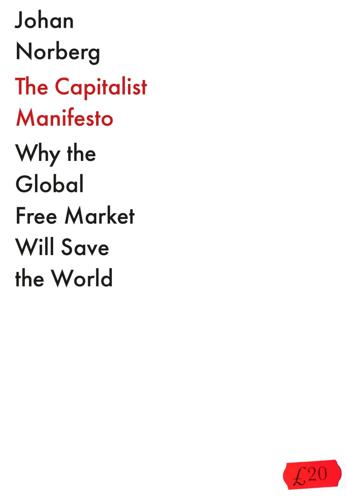
The Capitalist Manifesto
by
Johan Norberg
Published 14 Jun 2023
I don’t rule out that there are real examples of planned obsolescence, where the manufacturer actively reduces the longevity of a product, but it is more unusual than the debate suggests and the company that is exposed doing it will quickly be punished in the market. France has a law against planned obsolescence, and it has mostly shown how difficult it is to document a single case. Yes, it was heard all over the world that Apple was forced to pay a fine after older iPhones started working more slowly following a software update. But what few observed is that Apple was never considered guilty of planned obsolescence, only of not informing users of the change.
…
(Although I am embarrassed to say that books by classical liberals like Locke and Mill seem to be particularly prone to being stolen.)14 Undignified consumption Several critics of In Defence of Global Capitalism said I ignored the fact that one form of fraud underlines the entire modern consumer society. It concerns so-called ‘planned obsolescence’, companies that deliberately build in errors and shortcomings that shorten the lifespan of products and therefore force us to buy new ones. According to some critics, it is a central mechanism behind the modern growth model.15 Isn’t it strange that older iPhones suddenly started to slow down after a software update?
…
It is not commercialism – it is us: ‘I can say categorically that the people of all the cultures I have come in contact with exhibit a strong desire to have the benefits of industrial goods that are available. I am convinced that the “nonmaterialistic culture” is a myth.’18 In this consumption we can also discern a certain restlessness that is not due to planned obsolescence but because it is deeply human to get used to an item and then be attracted by something new. There is no big brand running expensive campaigns to make us tired of old personal names and buy a new, fresh one that they have patented. Still, there are extremely strong fashion trends in the names we give our children.
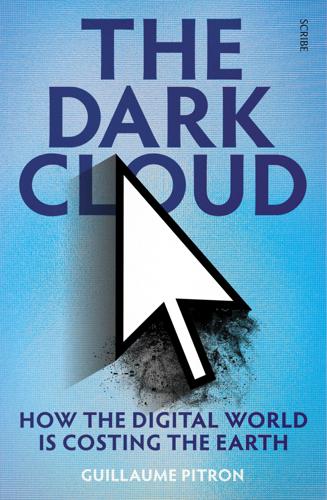
The Dark Cloud: How the Digital World Is Costing the Earth
by
Guillaume Pitron
Published 14 Jun 2023
See ‘China said to study IBM servers for bank security risks’, Bloomberg, 28 May 2014. 41 ‘US telcos ordered to “rip and replace” Huawei components’, bbc.com, 11 December 2020. 42 ‘Bouygues to remove 3,000 Huawei mobile antennas in France by 2028’, Reuters, 27 August 2020. 43 ‘The data center is dead’, Gartner, 26 July 2018. 44 ‘Sonos will stop providing software updates for its oldest products in May’, The Verge, 21 January 2020. 45 Interview with Adèle Chasson, corporate campaigner of the HOP (Stop Planned Obsolescence) association in 2020. According to research conducted in 2021 by the German institute Fraunhofer, 20 per cent of smartphones are no longer used because of software issues. Read ‘Ecodesign preparatory study on mobile phones, smartphones and tablets’, Fraunhofer for the European Commission, February 2021. 46 Frédéric Bordage, Sobriété numérique, les clés pour agir [‘Digital sobriety, the keys for action’], op. cit. 47 Frédéric Bordage, ‘Logiciel : la clé de l’obsolescence programmée du matériel informatique’ [‘Software: the key to planned obsolescence of IT equipment’], GreenIT.fr, 24 May 2010. 48 ‘White Paper on the Digital Economy and the Environment’, op. cit. 49 ‘Working with microbes to clean up electronic waste’, Next Nature Network, 8 March 2021. 50 Robert M.
…
The ecological gain is massive, considering that a third of the food produced on Earth is thrown away, representing a sizeable 8 per cent of carbon emissions. And that’s not all, since digital technologies ‘help to integrate goods into sharing systems [such as loans and cash gifts between individuals]’, ‘facilitate crowdfunding for renewables or agroecology […]’, and are ‘helping to combat planned obsolescence, such as Spareka, a platform selling spare parts connected to a community of repairers’, states the same leading report.30 In a time of fake news and alternative facts, never have we had such accurate information with which to improve our understanding of the world. This is attributable to the engineering behind digital technologies, for one smartphone alone is more powerful than all the information systems used to send a man to the Moon.31 Now multiply these tools by the number of humans on Earth, picture the legions of super calculators capable of executing billions of operations per second, and you have a new gospel: ‘Green IT’.
…
And this is not the exclusive domain of China: fearing espionage operations, the US mobilised nearly $2 billion at the end of 2020 in order to ‘rip and replace’ all communication and video-surveillance equipment installed on American soil by Chinese companies.41 Several European countries followed suit for the same reason, and announced that they, too, would rid their territory of thousands of Huawei 5G antennas.42 This junking of equipment, while the result of political decisions, remind us of manufacturing strategies of planned obsolescence, aimed at speeding up a product’s demise. Such obsolescence can be ‘material’, whereby a component of a smartphone — more often than not, its battery — stops working or is impossible to replace because it is glued fast to the rest of the device, condemning the entire smartphone to the scrap heap.
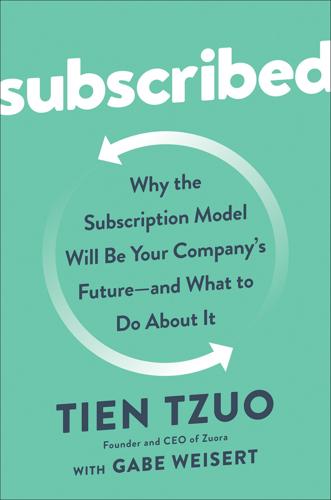
Subscribed: Why the Subscription Model Will Be Your Company's Future - and What to Do About It
by
Tien Tzuo
and
Gabe Weisert
Published 4 Jun 2018
Whether it’s GE, Amazon, or Uber, they are all succeeding because they recognized that we now live in a digital world, and in this new world, customers are different. The way people buy has changed for good. We have new expectations as consumers. We prefer outcomes over ownership. We prefer customization, not standardization. And we want constant improvement, not planned obsolescence. We want a new way to engage with business. We want services, not products. The one-size-fits-all approach isn’t going to cut it anymore. And to succeed in this new digital world, companies have to transform. THE PRODUCT ERA AND THE TYRANNY OF THE MARGIN For the past 120 or so years, we’ve been living in a product economy.
…
Model Ts came only in black because with one automobile coming off the line every three minutes, that was the only color that would dry fast enough. Then once these big companies established market share, the thinking went, they could start to gently raise their prices and make money off the difference, or margin. The margin ruled everything (and a little planned obsolescence never hurt). It’s difficult to overstate the power that big postwar American corporations had. They organized themselves around strictly delineated product divisions and didn’t have to answer to anyone. There were no call centers, no customer service reps, and, in many cases, no returns, period.
…
CHAPTER 12 SALES: THE EIGHT NEW GROWTH STRATEGIES We’ve all bought something that doesn’t work out—that gizmo that sits in the closet for a few years before it gets donated or just thrown into the trash. Maybe it looked cool in the ad. Maybe you used it once or twice, and then the novelty wore off. Maybe there’s some planned obsolescence that you can’t be bothered to fix. Or maybe there are some things that you buy automatically, that you don’t really think about, because you’ve seen the billboards and the TV ads and the display stands, and when you walk into the store some basic Madison Avenue psychology takes over, and you buy it.

Affluenza: The All-Consuming Epidemic
by
John de Graaf
,
David Wann
,
Thomas H Naylor
and
David Horsey
Published 1 Jan 2001
As women try on perfumes in an upscale department store, the narrator continues: “Our egos are best nourished by a well-placed investment in real luxury goods—what you might call discreetly conspicuous waste.”2 “Waste not, want not,” Benjamin Franklin once admonished. But the new slogan might have been Waste More, Want More. Almost overnight, the good life became the goods life. PLANNED OBSOLESCENCE “The immediate postwar period does represent a huge change in the kinds of attitudes that Americans have had about consumption,” says historian Susan Strasser, the author of Satisfaction Guaranteed.3 “Discreetly conspicuous waste” got another boost from what marketers called “planned obsolescence.” Products were made to last only a short time so that they would have to be replaced frequently (adding to sales), or they were continually upgraded, more commonly in style than in quality.
…
“We start looking at other people and saying that if they don’t give us pleasure, they are disposable. I think the trend is dangerous, and I think we need to have old values where we live in the same house as long as we can, where we keep material items as long as we can, and where we be faithful to each other.” In the use-it-once-and-throw-it-away, planned-obsolescence world of American consumer culture, it should not be surprising that attitudes formed in relation to products eventually get transferred to people as well. Out of sight, out of mind. Moreover, family life strains under the stress of excess. As both parents work full time and more to meet their swelling expectations of the good life, then rush to maintain the frenetic lifestyles those expectations demand, nerves are frayed and tempers boil.
…
Conservative economist Wilhelm Ropke feared that “we neglect to include in the calculation of these potential gains in the supply of material goods the possible losses of a non-material kind.”10 Centrist Vance Packard lambasted advertising (The Hidden Persuaders, 1957), keeping up with the Joneses (The Status Seekers, 1959) and planned obsolescence (The Waste Makers, 1960). And the liberal John Kenneth Galbraith suggested that a growing economy fulfilled needs it created itself, leading to no improvement in happiness. Our emphasis on “private opulence,” he said, led to “public squalor"—declining transit systems, schools, parks, libraries, and air and water quality.
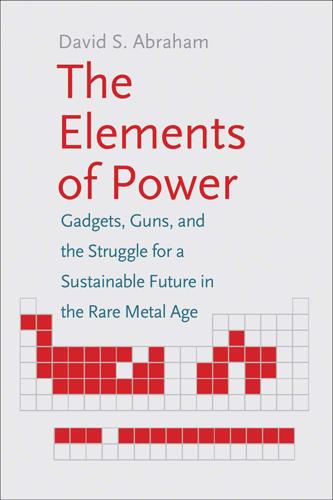
The Elements of Power: Gadgets, Guns, and the Struggle for a Sustainable Future in the Rare Metal Age
by
David S. Abraham
Published 27 Oct 2015
“Apple’s Latest ‘Innovation’ Is Turning Planned Obsolescence into Planned Failure,” iFixit Blog, January 20, 2011, accessed December 19, 2014, www.ifixit.com/blog/2011/01/20/apples-latest-innovation-is-turning-planned-obsolescence-into-planned-failure/; Apple, “iPhone Support—Screen Damage,” iPhone Screen Damage Repair, accessed May 19, 2014, https://www.apple.com/support/iphone/repair/screen-damage/; Brian Clark Howard, “Planned Obsolescence: 8 Products Designed to Fail,” Popular Mechanics, accessed December 19, 2014, www.popularmechanics.com/technology/planned-obsolescence-460210#slide-8. T-Mobile plans allow phone upgrades every six months as of January 2014.
…
See also Geopolitics Permanent magnets, 3, 18–22, 25–28, 141, 237n21, 268n14, 296n26, 297n33 Perskovites, 296n26 Personal consumption, increase in, 215 Peru, illegal mining in, 112 Philips Corporation, 110 Phillips, Jeff, 56, 61–62 Phones: iPhones, 1–3, 10 mobile phones, 120–21, 179, 187, 260n14 rare metals in, 27 recycling of, 224 smartphones, 121, 216, 218, 260n15 Pietrobono, Amber, 120 Planes, 128–31, 155–60, 168, 274n6, 279n33 Planned obsolescence, 216 Platinum group metals, 144–45, 178, 186, 249n13 PlayStation 2, 131 Political unrest, 48. See also Conflicts, funding of, from rare metals production Politico, on military supply lines, 167 Pollution, 153, 173–77, 181, 182–83. See also Carbon emissions Post-consumer recycling, 186–87 Potvin, J.

Frugal Innovation: How to Do Better With Less
by
Jaideep Prabhu Navi Radjou
Published 15 Feb 2015
The more complex its design, the more costly it is to build, sell and service a product. This in turn makes the product more expensive for the customer to buy, use and maintain. Furthermore, products are designed with planned obsolescence, forcing customers continually to upgrade – an expensive proposition at best. Mobile phones, for instance, are designed to make them hard to disassemble. This complexity and planned obsolescence is a cost to customers and increases environmental waste. Cramming cars with more microchips, for instance, makes them heavier and less fuel efficient. Similarly, American consumers typically replace their mobile phones every two years, which may cheer up Apple and mobile operators, but 125 million obsolete phones end up in landfills every year as a result.
…
Designers should always ask how they can encourage good and deter bad behaviour in users. They should also make sure that customers are repeatedly informed about how they can make better decisions. Design for longevity, not obsolescence Consumer electronics are often designed to be replaced every few months or, at most, every couple of years. Such so-called planned obsolescence is a major contributor to the 20–50 million tonnes of e-waste produced annually worldwide (a volume that is growing at 8% a year). The same applies to consumer durables such as cars, washing machines and some industrial products. To help reduce waste, R&D teams must design longer-lasting products, for which even cost-conscious customers would be willing to pay.
…
MacArthur Foundation 14 John Deere 67 John Lewis 195 Johnson & Johnson 100, 111 Johnson, Warren 98 Jones, Don 112 jugaad (frugal ingenuity) 199, 202 Jugaad Innovation (Radjou, Prabhu and Ahuja, 2012) xvii, 17 just-in-time design 33–4 K Kaeser, Joe 217 Kalanick, Travis 163 Kalundborg (Denmark) 160 kanju 201 Karkal, Shamir 124 Kaufman, Ben 50–1, 126 Kawai, Daisuke 29–30 Kelly, John 199–200 Kennedy, President John 138 Kenya 57, 200–1 key performance indicators see KPIs Khan Academy 16–17, 113–14, 164 Khan, Salman (Sal) 16–17, 113–14 Kickstarter 17, 48, 137, 138 KieranTimberlake 196 Kimberly-Clark 25, 145 Kingfisher 86–7, 91, 97, 157, 158–9, 185–6, 192–3, 208 KissKissBankBank 17, 137 Knox, Steve 145 Knudstorp, Jørgen Vig 37, 68, 69 Kobori, Michael 83, 100 KPIs (key performance indicators) 38–9, 67, 91–2, 185–6, 208 Kuhndt, Michael 194 Kurniawan, Arie 151–2 L La Chose 108 La Poste 92–3, 157 La Ruche qui dit Oui 137 “labs on a chip” 52 Lacheret, Yves 173–5 Lada 1 laser cutters 134, 166 Laskey, Alex 119 last-mile challenge 57, 146, 156 L’Atelier 168–9 Latin America 161 lattice organisation 63–4 Laury, Véronique 208 Laville, Elisabeth 91 Lawrence, Jamie 185, 192–3, 208 LCA (life-cycle assessment) 196–7 leaders 179, 203–5, 214, 217 lean manufacturing 192 leanness 33–4, 41, 42, 170, 192 Learnbox 114 learning by doing 173, 179 learning organisations 179 leasing 123 Lee, Deishin 159 Lego 51, 126 Lego Group 37, 68, 69, 144 Legrand 157 Lenovo 56 Leroy, Adolphe 127 Leroy Merlin 127–8 Leslie, Garthen 150–1 Lever, William Hesketh 96 Levi Strauss & Co 60, 82–4, 100, 122–3 Lewis, Dijuana 212 life cycle of buildings 196 see also product life cycle life-cycle assessment (LCA) 196–7 life-cycle costs 12, 24, 196 Lifebuoy soap 95, 97 lifespan of companies 154 lighting 32, 56, 123, 201 “lightweighting” 47 linear development cycles 21, 23 linear model of production 80–1 Link 131 littleBits 51 Livi, Daniele 88 Livi, Vittorio 88 local communities 52, 57, 146, 206–7 local markets 183–4 Local Motors 52, 129, 152 local solutions 188, 201–2 local sourcing 51–2, 56, 137, 174, 181 localisation 56, 137 Locavesting (Cortese, 2011) 138 Logan car 2–3, 12, 179, 198–9 logistics 46, 57–8, 161, 191, 207 longevity 121, 124 Lopez, Maribel 65–6 Lopez Research 65–6 L’Oréal 174 Los Alamos National Laboratory 170 low-cost airlines 60, 121 low-cost innovation 11 low-income markets 12–13, 161, 203, 207 Lowry, Adam 81–2 M m-health 109, 111–12 M-KOPA 201 M-Pesa 57, 201 M3D 48, 132 McDonough Braungart Design Chemistry (MBDC) 84 McDonough, William 82 McGregor, Douglas 63 MacGyvers 17–18, 130, 134, 167 McKelvey, Jim 135 McKinsey & Company 81, 87, 209 mainstream, frugal products in 216 maintenance 66, 75, 76, 124, 187 costs 48–9, 66 Mainwaring, Simon 8 Maistre, Christophe de 187–8, 216 Maker Faire 18, 133–4 Maker platform 70 makers 18, 133–4, 145 manufacturing 20th-century model 46, 55, 80–1 additive 47–9 continuous 44–5 costs 47, 48, 52 decentralised 9, 44, 51–2 frugal 44–54 integration with logistics 57–8 new approaches 50–4 social 50–1 subtractive method 48 tools for 47, 47–50 Margarine Unie 96 market 15, 28, 38, 64, 186, 189, 192 R&D and 21, 26, 33, 34 market research 25, 61, 139, 141 market share 100 marketing 21–2, 24, 36, 61–3, 91, 116–20, 131, 139 and R&D 34, 37, 37–8 marketing teams 143, 150 markets 12–13, 42, 62, 215 see also emerging markets Marks & Spencer (M&S) 97, 215 Plan A 90, 156, 179–81, 183–4, 186–7, 214 Marriott 140 Mars 57, 158–9, 161 Martin Marietta 159 Martin, Tod 154 mass customisation 9, 46, 47, 48, 57–8 mass market 189 mass marketing 21–2 mass production 9, 46, 57, 58, 74, 129, 196 Massachusetts Institute of Technology see MIT massive open online courses see MOOCs materials 3, 47, 48, 73, 92, 161 costs 153, 161, 190 recyclable 74, 81, 196 recycled 77, 81–2, 83, 86, 89, 183, 193 renewable 77, 86 repurposing 93 see also C2C; reuse Mayhew, Stephen 35, 36 Mazoyer, Eric 90 Mazzella, Frédéric 163 MBDC (McDonough Braungart Design Chemistry) 84 MDI 16 measurable goals 185–6 Mechanical Engineer Laboratory (MEL) 52 “MEcosystems” 154–5, 156–8 Medicare 110 medication 111–12 Medicity 211 MedStartr 17 MEL (Mechanical Engineer Laboratory) 52 mental models 2, 193–203, 206, 216 Mercure 173 Merlin, Rose 127 Mestrallet, Gérard 53, 54 method (company) 81–2 Mexico 38, 56 Michelin 160 micro-factories 51–2, 52, 66, 129, 152 micro-robots 52 Microsoft 38 Microsoft Kinect 130 Microsoft Word 24 middle classes 197–8, 216 Migicovsky, Eric 137–8 Mikkiche, Karim 199 millennials 7, 14, 17, 131–2, 137, 141, 142 MindCET 165 miniaturisation 52, 53–4 Mint.com 125 MIT (Massachusetts Institute of Technology) 44–5, 107, 130, 134, 202 mobile health see m-health mobile phones 24, 32, 61, 129–30, 130, 168, 174 emerging market use 198 infrastructure 56, 198 see also smartphones mobile production units 66–7 mobile technologies 16, 17, 103, 133, 174, 200–1, 207 Mocana 151 Mochon, Daniel 132 modular design 67, 90 modular production units 66–7 Modularer Querbaukasten see MQB “mompreneurs” 145 Mondelez 158–9 Money Dashboard 125 Moneythink 162 monitoring 65–6, 106, 131 Monopoly 144 MOOCs (massive open online courses) 60, 61, 112, 113, 114, 164 Morieux, Yves 64 Morocco 207 Morris, Robert 199–200 motivation, employees 178, 180, 186, 192, 205–8 motivational approaches to shaping consumer behaviour 105–6 Motorola 56 MQB (Modularer Querbaukasten) 44, 45–6 Mulally, Alan 70, 166 Mulcahy, Simon 157 Mulliez family 126–7 Mulliez, Vianney 13, 126 multi-nodal innovation 202–3 Munari, Bruno 93 Murray, Mike 48–9 Musk, Elon 172 N Nano car 119, 156 National Geographic 102 natural capital, loss of 158–9 Natural Capital Leaders Platform 158–9 natural resources 45, 86 depletion 7, 72, 105, 153, 158–9 see also resources NCR 55–6 near-shoring 55 Nelson, Simon 113 Nemo, Sophie-Noëlle 93 Nest Labs 98–100, 103 Nestlé 31, 44, 68, 78, 94, 158–9, 194, 195 NetPositive plan 86, 208 networking 152–3, 153 new materials 47, 92 New Matter 132 new technologies 21, 27 Newtopia 32 next-generation customers 121–2 next-generation manufacturing techniques 44–6, 46–7 see also frugal manufacturing Nigeria 152, 197–8 Nike 84 NineSigma 151 Nissan 4, 4–5, 44, 199 see also Renault-Nissan non-governmental organisations 167 non-profit organisations 161, 162, 202 Nooyi, Indra 217 Norman, Donald 120 Norris, Greg 196 North American companies 216–17 North American market 22 Northrup Grumman 68 Norton, Michael 132 Norway 103 Novartis 44–5, 215 Novotel 173, 174 nudging 100, 108, 111, 117, 162 Nussbaum, Bruce 140 O O2 147 Obama, President Barack 6, 8, 13, 134, 138, 208 obsolescence, planned 24, 121 offshoring 55 Oh, Amy 145 Ohayon, Elie 71–2 Oliver Wyman 22 Olocco, Gregory 206 O’Marah, Kevin 58 on-demand services 39, 124 online communities 31, 50, 61, 134 online marketing 143 online retailing 60, 132 onshoring 55 Opel 4 open innovation 104, 151, 152, 153, 154 open-source approach 48, 129, 134, 135, 172 open-source hardware 51, 52, 89, 130, 135, 139 open-source software 48, 130, 132, 144–5, 167 OpenIDEO 142 operating costs 45, 215 Opower 103, 109, 119 Orange 157 Orbitz 173 organisational change 36–7, 90–1, 176, 177–90, 203–8, 213–14, 216 business models 190–3 mental models 193–203 organisational culture 36–7, 170, 176, 177–9, 213–14, 217 efficacy focus 181–3 entrepreneurial 76, 173 see also organisational change organisational structure 63–5, 69 outsourcing 59, 143, 146 over-engineering 27, 42, 170 Overby, Christine 25 ownership 9 Oxylane Group 127 P P&G (Procter & Gamble) 19, 31, 58, 94, 117, 123, 145, 195 packaging 57, 96, 195 Page, Larry 63 “pain points” 29, 30, 31 Palmer, Michael 212 Palo Alto Junior League 20 ParkatmyHouse 17, 63, 85 Parker, Philip 61 participation, customers 128–9 partner ecosystems 153, 154, 200 partners 65, 72, 148, 153, 156–8 sharing data with 59–60 see also distributors; hyper-collaboration; suppliers Partners in Care Foundation 202 partnerships 41, 42, 152–3, 156–7, 171–2, 174, 191 with SMBs 173, 174, 175 with start-ups 20, 164–5, 175 with suppliers 192–3 see also hyper-collaboration patents 171–2 Payne, Alex 124 PE International 196 Pearson 164–5, 167, 181–3, 186, 215 Pebble 137–8 peer-to-peer economic model 10 peer-to-peer lending 10 peer-to-peer sales 60 peer-to-peer sharing 136–7 Pélisson, Gérard 172–3 PepsiCo 38, 40, 179, 190, 194, 215 performance 47, 73, 77, 80, 95 of employees 69 Pernod Ricard 157 personalisation 9, 45, 46, 48, 62, 129–30, 132, 149 Peters, Tom 21 pharmaceutical industry 13, 22, 23, 33, 58, 171, 181 continuous manufacturing 44–6 see also GSK Philippines 191 Philips 56, 84, 100, 123 Philips Lighting 32 Picaud, Philippe 122 Piggy Mojo 119 piggybacking 57 Piketty, Thomas 6 Plan A (M&S) 90, 156, 179–81, 183–4, 186–7, 214 Planet 21 (Accor) 174–5 planned obsolescence 24, 121 Plastyc 17 Plumridge, Rupert 18 point-of-sale data 58 Poland 103 pollution 74, 78, 87, 116, 187, 200 Polman, Paul 11, 72, 77, 94, 203–5, 217 portfolio management tools 27, 33 Portugal 55, 103 postponement 57–8 Potočnik, Janez 8, 79 Prabhu, Arun 25 Prahalad, C.K. 12 predictive analytics 32–3 predictive maintenance 66, 67–8 Priceline 173 pricing 81, 117 processes digitising 65–6 entrenched 14–16 re-engineering 74 simplifying 169, 173 Procter & Gamble see P&G procurement priorities 67–8 product life cycle 21, 75, 92, 186 costs 12, 24, 196 sustainability 73–5 product-sharing initiatives 87 production costs 9, 83 productivity 49, 59, 65, 79–80, 153 staff 14 profit 14, 105 Progressive 100, 116 Project Ara 130 promotion 61–3 Propeller Health 111 prosumers xix–xx, 17–18, 125, 126–33, 136–7, 148, 154 empowering and engaging 139–46 see also horizontal economy Protomax 159 prototypes 31–2, 50, 144, 152 prototyping 42, 52, 65, 152, 167, 192, 206 public 50–1, 215 public sector, working with 161–2 publishers 17, 61 Pullman 173 Puma 194 purchasing power 5–6, 216 pyramidal model of production 51 pyramidal organisations 69 Q Qarnot Computing 89 Qualcomm 84 Qualcomm Life 112 quality 3, 11–12, 15, 24, 45, 49, 82, 206, 216 high 1, 9, 93, 198, 216 measure of 105 versus quantity 8, 23 quality of life 8, 204 Quicken 19–21 Quirky 50–1, 126, 150–1, 152 R R&D 35, 67, 92, 151 big-ticket programmes 35–6 and business development 37–8 China 40, 188, 206 customer focus 27, 39, 43 frugal approach 12, 26–33, 82 global networks 39–40 incentives 38–9 industrial model 2, 21–6, 33, 36, 42 market-focused, agile model 26–33 and marketing 34, 37, 37–8 recommendations for managers 34–41 speed 23, 27, 34, 149 spending 15, 22, 23, 28, 141, 149, 152, 171, 187 technology culture 14–15, 38–9 see also Air Liquide; Ford; GSK; IBM; immersion; Renault; SNCF; Tarkett; Unilever R&D labs 9, 21–6, 70, 149, 218 in emerging markets 40, 188, 200 R&D teams 26, 34, 38–9, 65, 127, 150, 194–5 hackers as 142 innovation brokering 168 shaping customer behaviour 120–2 Raspberry Pi 135–6, 164 Ratti, Carlo 107 raw materials see materials real-time demand signals 58, 59 Rebours, Christophe 157–8 recession 5–6, 6, 46, 131, 180 Reckitt Benckiser 102 recommendations for managers flexing assets 65–71 R&D 34–41 shaping consumer behaviour 116–24 sustainability 90–3 recruiting 70–1 recyclable materials 74, 81, 196 recyclable products 3, 73, 159, 195–6 recycled materials 77, 81–2, 83, 86, 89, 183, 193 recycling 8, 9, 87, 93, 142, 159 e-waste 87–8 electronic and electrical goods (EU) 8, 79 by Tarkett 73–7 water 83, 175 see also C2C; circular economy Recy’Go 92–3 regional champions 182 regulation 7–8, 13, 78–9, 103, 216 Reich, Joshua 124 RelayRides 17 Renault 1–5, 12, 117, 156–7, 179 Renault-Nissan 4–5, 40, 198–9, 215 renewable energy 8, 53, 74, 86, 91, 136, 142, 196 renewable materials 77, 86 Replicator 132 repurposing 93 Requardt, Hermann 189 reshoring 55–6 resource constraints 4–5, 217 resource efficiency 7–8, 46, 47–9, 79, 190 Resource Revolution (Heck, Rogers and Carroll, 2014) 87–8 resources 40, 42, 73, 86, 197, 199 consumption 9, 26, 73–7, 101–2 costs 78, 203 depletion 7, 72, 105, 153, 158–9 reducing use 45, 52, 65, 73–7, 104, 199, 203 saving 72, 77, 200 scarcity 22, 46, 72, 73, 77–8, 80, 158–9, 190, 203 sharing 56–7, 159–61, 167 substitution 92 wasting 169–70 retailers 56, 129, 214 “big-box” 9, 18, 137 Rethink Robotics 49 return on investment 22, 197 reuse 9, 73, 76–7, 81, 84–5, 92–3, 200 see also C2C revenues, generating 77, 167, 180 reverse innovation 202–3 rewards 37, 178, 208 Riboud, Franck 66, 184, 217 Rifkin, Jeremy 9–10 robots 47, 49–50, 70, 144–5, 150 Rock Health 151 Rogers, Jay 129 Rogers, Matt 87–8 Romania 2–3, 103 rookie mindset 164, 168 Rose, Stuart 179–80, 180 Roulin, Anne 195 Ryan, Eric 81–2 Ryanair 60 S S-Oil 106 SaaS (software as a service) 60 Saatchi & Saatchi 70–1 Saatchi & Saatchi + Duke 71–2, 143 sales function 15, 21, 25–6, 36, 116–18, 146 Salesforce.com 157 Santi, Paolo 108 SAP 59, 186 Saunders, Charles 211 savings 115 Sawa Orchards 29–31 Scandinavian countries 6–7 see also Norway Schmidt, Eric 136 Schneider Electric 150 Schulman, Dan 161–2 Schumacher, E.F. 104–5, 105 Schweitzer, Louis 1, 2, 3, 4, 179 SCM (supply chain management) systems 59 SCOR (supply chain operations reference) model 67 Seattle 107 SEB 157 self-sufficiency 8 selling less 123–4 senior managers 122–4, 199 see also CEOs; organisational change sensors 65–6, 106, 118, 135, 201 services 9, 41–3, 67–8, 124, 149 frugal 60–3, 216 value-added 62–3, 76, 150, 206, 209 Shapeways 51, 132 shareholders 14, 15, 76, 123–4, 180, 204–5 sharing 9–10, 193 assets 159–61, 167 customers 156–8 ideas 63–4 intellectual assets 171–2 knowledge 153 peer-to-peer 136–9 resources 56–7, 159–61, 167 sharing economy 9–10, 17, 57, 77, 80, 84–7, 108, 124 peer-to-peer sharing 136–9 sharing between companies 159–60 shipping costs 55, 59 shopping experience 121–2 SIEH hotel group 172–3 Siemens 117–18, 150, 187–9, 215, 216 Sigismondi, Pier Luigi 100 Silicon Valley 42, 98, 109, 150, 151, 162, 175 silos, breaking out of 36–7 Simple Bank 124–5 simplicity 8, 41, 64–5, 170, 194 Singapore 175 Six Sigma 11 Skillshare 85 SkyPlus 62 Small is Beautiful (Schumacher, 1973) 104–5 “small is beautiful” values 8 small and medium-sized businesses see SMBs Smart + Connected Communities 29 SMART car 119–20 SMART strategy (Siemens) 188–9 smartphones 17, 100, 106, 118, 130, 131, 135, 198 in health care 110, 111 see also apps SmartScan 29 SMBs (small and medium-sized businesses) 173, 174, 175, 176 SMS-based systems 42–3 SnapShot 116 SNCF 41–3, 156–7, 167 SoapBox 28–9 social business model 206–7 social comparison 109 social development 14 social goals 94 social learning 113 social manufacturing 47, 50–1 social media 16, 71, 85, 106, 108, 168, 174 for marketing 61, 62, 143 mining 29, 58 social pressure of 119 tools 109, 141 and transaction costs 133 see also Facebook; social networks; Twitter social networks 29, 71, 72, 132–3, 145, 146 see also Facebook; Twitter social pressure 119 social problems 82, 101–2, 141, 142, 153, 161–2, 204 social responsibility 7, 10, 14, 141, 142, 197, 204 corporate 77, 82, 94, 161 social sector, working with 161–2 “social tinkerers” 134–5 socialising education 112–14 Sofitel 173 software 72 software as a service (SaaS) 60 solar power 136, 201 sourcing, local 51–2, 56 Southwest Airlines 60 Spain 5, 6, 103 Spark 48 speed dating 175, 176 spending, on R&D 15, 22, 23, 28, 141, 149, 152, 171, 187 spiral economy 77, 87–90 SRI International 49, 52 staff see employees Stampanato, Gary 55 standards 78, 196 Starbucks 7, 140 start-ups 16–17, 40–1, 61, 89, 110, 145, 148, 150, 169, 216 investing in 137–8, 157 as partners 42, 72, 153, 175, 191, 206 see also Nest Labs; Silicon Valley Statoil 160 Steelcase 142 Stem 151 Stepner, Diana 165 Stewart, Emma 196–7 Stewart, Osamuyimen 201–2 Sto Corp 84 Stora Enso 195 storytelling 112, 113 Strategy& see Booz & Company Subramanian, Prabhu 114 substitution of resources 92 subtractive manufacturing 48 Sun Tzu 158 suppliers 67–8, 83, 148, 153, 167, 176, 192–3 collaboration with 76, 155–6 sharing with 59–60, 91 visibility 59–60 supply chain management see SCM supply chain operations reference (SCOR) model 67 supply chains 34, 36, 54, 65, 107, 137, 192–3 carbon footprint 156 costs 58, 84 decentralisation 66–7 frugal 54–60 integrating 161 small-circuit 137 sustainability 137 visibility 34, 59–60 support 135, 152 sustainability xix, 9, 12, 72, 77–80, 82, 97, 186 certification 84 as competitive advantage 80 consumers and 95, 97, 101–4 core design principle 82–4, 93, 195–6 and growth 76, 80, 104–5 perceptions of 15–16, 80, 91 recommendations for managers 90–3 regulatory demand for 78–9, 216 standard bearers of 80, 97, 215 see also Accor; circular economy; Kingfisher; Marks & Spencer; Tarkett; Unilever sustainable design 82–4 see also C2C sustainable distribution 57, 161 sustainable growth 72, 76–7 sustainable lifestyles 107–8 Sustainable Living Plan (Unilever) 94–7, 179, 203–4 sustainable manufacturing 9, 52 T “T-shaped” employees 70–1 take-back programmes 9, 75, 77, 78 Tally 196–7 Tarkett 73–7, 80, 84 TaskRabbit 85 Tata Motors 16, 119 Taylor, Frederick 71 technical design 37–8 technical support, by customers 146 technology 2, 14–15, 21–2, 26, 27 TechShop 9, 70, 134–5, 152, 166–7 telecoms sector 53, 56 Telefónica 147 telematic monitoring 116 Ternois, Laurence 42 Tesco 102 Tesla Motors 92, 172 testing 28, 42, 141, 170, 192 Texas Industries 159 Textoris, Vincent 127 TGV Lab 42–3 thermostats 98–100 thinking, entrenched 14–16 Thompson, Gav 147 Timberland 90 time 4, 7, 11, 41, 72, 129, 170, 200 constraints 36, 42 see also development cycle tinkerers 17–18, 133–5, 144, 150, 152, 153, 165–7, 168 TiVo 62 Tohamy, Noha 59–60 top-down change 177–8 top-down management 69 Total 157 total quality management (TQM) 11 total volatile organic compounds see TVOC Toyota 44, 100 Toyota Sweden 106–7 TQM (total quality management) 11 traffic 108, 116, 201 training 76, 93, 152, 167, 170, 189 transaction costs 133 transparency 178, 185 transport 46, 57, 96, 156–7 Transport for London 195 TrashTrack 107 Travelocity 174 trial and error 173, 179 Trout, Bernhardt 45 trust 7, 37, 143 TVOC (total volatile organic compounds) 74, 77 Twitter 29, 62, 135, 143, 147 U Uber 136, 163 Ubuntu 202 Uchiyama, Shunichi 50 UCLA Health 202–3 Udacity 61, 112 UK 194 budget cuts 6 consumer empowerment 103 industrial symbiosis 160 savings 115 sharing 85, 138 “un-management” 63–4, 64 Unboundary 154 Unilever 11, 31, 57, 97, 100, 142, 203–5, 215 and sustainability 94–7, 104, 179, 203–4 University of Cambridge Engineering Design Centre (EDC) 194–5 Inclusive Design team 31 Institute for Sustainability Leadership (CISL) 158–9 upcycling 77, 88–9, 93, 159 upselling 189 Upton, Eben 135–6 US 8, 38, 44, 87, 115, 133, 188 access to financial services 13, 17, 161–2 ageing population 194 ageing workforce 13 commuting 131 consumer spending 5, 6, 103 crowdfunding 137–8, 138 economic pressures 5, 6 energy use 103, 119, 196 environmental awareness 7, 102 frugal innovation in 215–16, 218 health care 13, 110, 208–13, 213 intellectual property 171 onshoring 55 regulation 8, 78, 216 sharing 85, 138–9 shifting production from China to 55, 56 tinkering culture 18, 133–4 user communities 62, 89 user interfaces 98, 99 user-friendliness 194 Utopies 91 V validators 144 value 11, 132, 177, 186, 189–90 aspirational 88–9 to customers 6–7, 21, 77, 87, 131, 203 from employees 217 shareholder value 14 value chains 9, 80, 128–9, 143, 159–60, 190, 215 value engineering 192 “value gap” 54–5 value-added services 62–3, 76, 150, 206, 209 values 6–7, 14, 178, 205 Vandebroek, Sophie 169 Vasanthakumar, Vaithegi 182–3 Vats, Tanmaya 190, 192 vehicle fleets, sharing 57, 161 Verbaken, Joop 118 vertical integration 133, 154 virtual prototyping 65 virtuous cycle 212–13 visibility 34, 59–60 visible learning 112–13 visioning sessions 193–4 visualisation 106–8 Vitality 111 Volac 158–9 Volkswagen 4, 44, 45–6, 129, 144 Volvo 62 W wage costs 48 wages, in emerging markets 55 Waitrose, local suppliers 56 Walker, James 87 walking the walk 122–3 Waller, Sam 195 Walmart 9, 18, 56, 162, 216 Walton, Sam 9 Wan Jia 144 Washington DC 123 waste 24, 87–9, 107, 159–60, 175, 192, 196 beautifying 88–9, 93 e-waste 24, 79, 87–8, 121 of energy 119 post-consumer 9, 75, 77, 78, 83 reducing 47, 74, 85, 96, 180, 209 of resources 169–70 in US health-care system 209 see also C2C; recycling; reuse water 78, 83, 104, 106, 158, 175, 188, 206 water consumption 79, 82–3, 100, 196 reducing 74, 75, 79, 104, 122–3, 174, 183 wealth 105, 218 Wear It Share It (Wishi) 85 Weijmarshausen, Peter 51 well-being 104–5 Wham-O 56 Whirlpool 36 “wicked” problems 153 wireless technologies 65–6 Wiseman, Liz 164 Wishi (Wear It Share It) 85 Witty, Andrew 35, 35–6, 37, 39, 217 W.L.
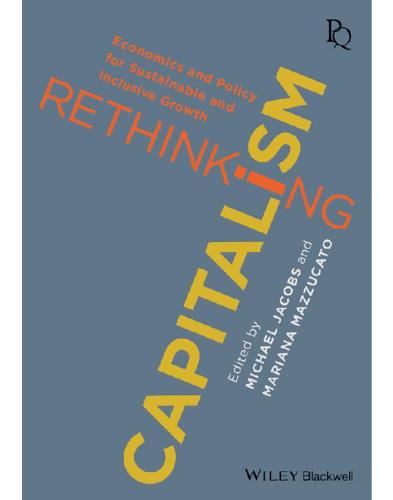
Rethinking Capitalism: Economics and Policy for Sustainable and Inclusive Growth
by
Michael Jacobs
and
Mariana Mazzucato
Published 31 Jul 2016
At the same time as this retrofitting effort, another major job-creating and export-promoting route is the design of sustainable production equipment and infrastructure adequate to the specific climatic and other conditions of the developing world, where in the past standardised equipment and processes—with inadequate scale and characteristics—have been adopted. ‘Green growth’ also supposes the return—and heightened importance—of product durability, accompanied by maintenance as a key service. Planned obsolescence and disposability were strategies for demand expansion in the face of saturated markets. The growth of the global middle classes, and of the wealthy (who buy luxury products), can amply compensate for a drop in the sales of lower-quality, disposable products, while also countering what would otherwise be an uncontrollable rise in the cost of materials.
…
This could then lead to a very active rental sector for organising second-, third- and Nth-hand markets in each country and across the world, along with the growth of disassembly, remanufacturing, recycling, reusing and other materials-saving processes. Information for 3-D printing replacement parts and the provision of regular upgrades for the maintenance of products could become standard practice. This would create a business model in which repair and reuse would take the place of planned obsolescence. With the ‘internet of things’, chips can be put on each product to provide usage histories, enabling a thriving rental and maintenance industry to assign adequate prices. In the advanced world, such a business strategy would create great quantities of jobs for displaced assembly workers in maintenance, upgrading, warehousing, parts ‘printing’, distribution and installation, while design, redesign and many other creative industries and services would employ university graduates.
…
It is being copied in the emerging economies and aspired to in the developing ones; it is hankered after by the layers of impoverished unemployed in the advanced world and rightly made the main target of attack by the environmentalists. The ICT industries, whose strategies originally evolved in the boom of the 1990s, found oil at its lowest price and abundant, extremely low-cost labour available in Asia. Unthinkingly, they were led to adopt the planned obsolescence model generalised in the 1960s to overcome the limits posed by the saturation of markets. Thus the intangible nature of information technologies did not express itself in imaginative strategies encouraging minimal use of materials and maximum upgradeability. Fortunately, that is now beginning to happen, alongside innovation in the reduction of energy use.
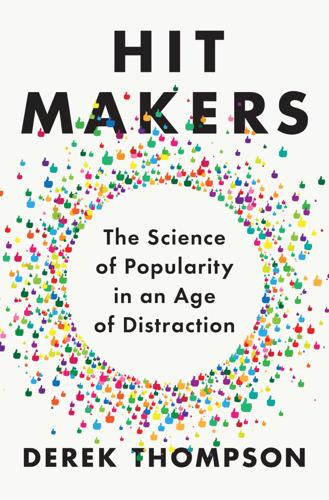
Hit Makers: The Science of Popularity in an Age of Distraction
by
Derek Thompson
Published 7 Feb 2017
Executives like Alfred Sloan, the CEO of General Motors, recognized that, by changing a car’s style and color every year, consumers might be trained to crave new versions of the same product. This insight—to marry the science of manufacturing efficiency and the science of marketing—inspired the idea of “planned obsolescence.” That means purposefully making products that will be fashionable or functional for only a limited time in order to encourage repeat shopping trips. Across the economy, companies realized that they could engineer turnover and multiply sales by constantly changing the colors, shapes, and styles of their goods.
…
Cosmopolitan magazine wrote: Raymond Loewy website, www.raymondloewy.com/about.html#7. Artisans and designers of the nineteenth century: “Up from the Egg.” It was available only in black: “The Model T Ford,” Frontenac Motor Company, www.modelt.ca/background.html. inspired the idea of “planned obsolescence”: “GM’s Role in American Life,” All Things Considered, NPR, April 2, 2009, www.npr.org/templates/story/story.php?storyId=102670076. Hekkert’s grand theory begins: Paul Hekkert, “Design Aesthetics: Principles of Pleasure in Design,” Psychology Science 48, no. 2 (2006): 157–72. “typicality, novelty and aesthetic preference”: Paul Hekkert, Dirk Snelders, and Piet C.
…
Hodges, 128–29 The Office (television series), 240 Ogle, Matt, 68–70 On Exactitude in Science (Borges), 1 OODA (Observation, Orientation, Decision, and Action), 278, 280 Page, Jimmy, 233 Pajitnov, Alexey, 58 Pandora, 37, 67–68, 130 “The Paradox of Publicity” (Kovacs and Sharkey), 143 Pareto, Vilfredo, 179–180 Pareto principle (80-20 rule), 179–180 Parker, Sean, 34 Peale, Charles Willson, 32, 32n Peretti, Jonah, 301 Phaedrus (Plato), 150 philosophers, 60 Philosophical Dictionary (Voltaire), 119–120 phonographs, 289 photo-sharing applications, 8–9 Picasso, Pablo, 57 Pietroluongo, Silvio, 81, 82 Pissarro, Camille, 22, 23, 24, 312n22 Planck, Max, 60, 71 planned obsolescence, 49, 81n Plato, 27, 146, 150 poetry, 27 politics and elections development of opinions about, 125 and ideological “burn-in,” 130 and ignorance of voters, 40–41 political parties, 38–40, 41 political rhetoric, 86–92, 283 and public relations, 37–38 Polo, Marco, 1, 14–15 pop culture, 57 Porter, Michael, 75 predictability, 116–17.

Reset
by
Ronald J. Deibert
Published 14 Aug 2020
Manufacturers of consumer electronics of all kinds take extraordinary steps to discourage users from getting too curious about what goes on “beneath the hood,” including placing “warranty void if removed” stickers on the underside, using proprietary screws and other components that require special tools, or applying glue and solder to bind components together, making it virtually impossible to open the device without causing irreparable damage.288 That smartphone you hold in your hand is what’s known in engineering as a “black box” — you can observe its inputs and outputs, but its inner workings are largely a mystery to all but a select few. Part of the reason has to do with planned obsolescence, a syndrome inherent to consumer culture. Our gadgets are built, by design, not to last. The sooner they stop working, the more likely you’ll want an upgrade to a more recent version. And when you do, you’ll need some accessories and peripherals too, or you won’t be able to enjoy all of the new features.
…
Raw sewage combined with acid wash from the e-waste dismantling processes flows directly into the Yamuna River, its shores clogged with the largest accumulation of discarded plastic water bottles I’ve ever seen in my life.381 Putting aside the squalor and demoralizing child labour, there are many things to be learned from the Seelampur recycling district. For far too long, we have lived in a culture of disposable wealth and planned obsolescence. We have become accustomed to a regular turnover of our consumer electronics, and we don’t give much thought to them once they no longer work. To be sure, some great strides have been made in recycling. Instead of simply discarding things, many of us now neatly separate our plastics, glass, paper products, and batteries and place them in blue bins.
…
Simultaneously, public education could encourage a more robust sense of personal data ownership, and a less frivolous attitude towards data consumption. Seen this way, efforts to “unplug” and “disconnect” can be linked to a deeper sentiment around conservation: aversion to over-consumption of both energy and data, and a strong distaste for planned obsolescence and other forms of waste. It is worth underscoring how efforts to tame unbridled surveillance capitalism and encourage civic virtue and self-restraint mutually reinforce each other in ways that also support environmental rescue. Environmentalism’s ideals — getting “back to nature,” conserving resources, slowing down, recognizing the value of difference, and replacing instant gratification and endless consumption with an acknowledgement of the impact of our current practices on future generations — are the sorts of qualities we will need to embrace to mitigate the harms around social media.466 Conceptualizing “transgenerational publics” in the way that environmentalists do can help us think differently about the shadow cast on future generations not only by our excessive consumption and waste, but also by the data mining to which we consent that affects other individuals down the road (such as when we relentlessly photograph and then share over social media images of children who have not yet reached the age of consent).
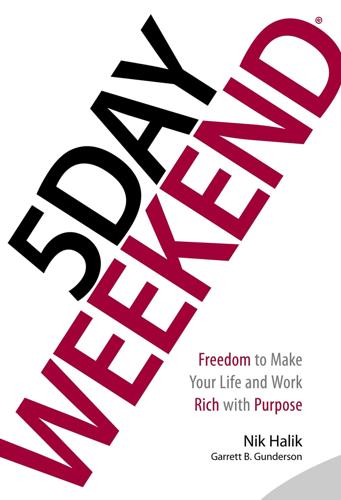
5 Day Weekend: Freedom to Make Your Life and Work Rich With Purpose
by
Nik Halik
and
Garrett B. Gunderson
Published 5 Mar 2018
Your Wealth Capture Account takes care of that. 3 Percent for Inflation: Inflation, which erodes the value of your money, generally averages about 3 percent (conservatively). 3 Percent for Technological Change: As technology improves, the costs generally fall, but we tend to buy it more frequently. 3 Percent for Propensity to Consume: What starts off as a luxury quickly becomes a necessity. For example, it wasn’t that long ago that no one had a cell phone. Now everyone does — even homeless people. Once people get used to a certain lifestyle, they rarely are willing to give it up. 3 Percent for Planned Obsolescence: Household goods and appliances break down and need to be replaced. By planning and saving for these predictable and unavoidable things, we’re able to build wealth even in spite of them. Account #2: Living Wealthy Account The purpose of this account is to save money for guilt-free spending on eating out, shopping, vacations, courtside tickets, or whatever luxury brings you value, helps you relax, or restores your energy.
…
In fact, $1 in 1913 is worth about $.03 today. After moving from the gold standard to our current fiat currency system, a $100,000 savings in 1971 only has the purchasing power of $16,667 today. In light of inflation, there are other considerations that erode your purchasing power: Planned obsolescence: Products needing to be constantly replaced Technological advances: Future purchases that don’t even exist today As a rule of thumb you should ensure that you generate a minimum return of 7 percent per year growth to combat inflation. Anyone achieving less than 7 percent is going backwards.
…
Plan patents patience, and real estate investments peace peace of mind fund Peale, Norman Vincent Penney, J.C. people-pleasing tendencies perfectionism, and productivity Pericles personal services, as entrepreneurial opportunity phone expenses, as tax deduction physical inspections, of real estate investments planned obsolescence podcasting, as entrepreneurial opportunity Poshmark Power of Attorney, and estate planning The Power of Full Engagement (Loehr and Schwartz) The Power of Habit (Duhigg) precious metals, as Momentum investment opportunity pre-IPO funds price, and lifestyle (consumptive) expenses and real estate investments private equity investments processes, adjusting documenting fine-tuning procrastination Proctor, Bob productive expenses productivity, and failure and perfectionism productivity rituals professionalism, and purpose progress, tracking property leases property taxes property values, and tax lien certificates protective expenses purpose, and adventure and distractions and freedom and generosity and goal setting and peace and perfectionism and simplicity ways to live on purpose The Pursuit of Happyness (film) put options Q Quillen, Robert R real estate investments, advantages of multi-family units and cash flow and cash flow filters down payment hurdles and economic cycles as entrepreneurial opportunity example purchases exit strategies for finding the right property fix-up costs and leverage and location managing wisely and peace of mind fund physical inspections profits in and property cycle purchasing your first property real-life success stories and return on investment six bonuses in and sweat equity tips for recession resistance, and Growth investments and storage units of tax lien certificates recessions, and economic cycles recharge rituals record keeping, and improved planning recurring revenue model relationship capital Remelski, Troy rental properties, and Active/Passive Scale See also real estate investments research, and real estate investments retail sales, and Active/Passive Scale as entrepreneurial opportunity retirement, deconstructing the cultural paradigm for and government social welfare programs retirement plans, and failure of conventional investments as source of loans and taxes vs. real estate investments Retton, Mary Lou return on investment, and Growth investments and real estate investments revenue subscriptions, as entrepreneurial opportunity Rice, Jerry Ripple risk, and diversification and entrepreneurship and Growth investments rituals RMS Titanic robotics Rockefeller Formula Rohn, Jim Roosevelt, Eleanor Roosevelt, Franklin D.
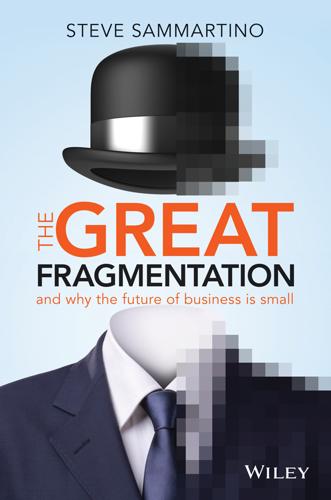
The Great Fragmentation: And Why the Future of All Business Is Small
by
Steve Sammartino
Published 25 Jun 2014
They left out the bit about keeping all the profits for themselves. This economic model worked well until we reached the point where we owned everything we needed. But now the deal has entered its final phases and the gig is up. The industrial revolution is putting itself out of business. I wonder if they had a planned-obsolescence in mind. Unlearning The methods used by corporations became so effective at generating more for less that they’re making their own era an obsolete business method. Companies that want to thrive during the technology era need to seriously revise their economic playbook. The efficiencies these corporations generated have made high-end technology disposable, or at the very least, low cost.
…
These were terms that companies would never use directly with their customers, but that form a large part of their conversations with agencies and in boardroom discussions. But the gig is up, and just in case you don’t know which terms you should banish from the boardroom, here they are with my own personal definitions in some real, human language: The planned obsolescence. We’re going to make this thing in a way that it breaks on purpose. We’re going to leave out features we’ve already made so that our customers have to buy it again and/or upgrade. The roadblock. We’re going to buy media on every single channel all at the same time when we launch this product.
…
Add to this that the ‘rivers of gold’ that flowed from classified ads are also being taken over online by single-minded competitors, and we’ve witnessed a classic ‘David’ victory. Who do you trust? Do you trust a large media organisation that survives by running advertisements for giant global brands (who may well be polluting the earth and encouraging kids to eat food that makes them sick, or who make products with planned obsolescence) to tell you the truth about the world around you? Or do you trust a passionate ‘amateur’ writing a blog about a topic of interest and passion late on a Saturday night to share some valuable information with others for no money, no payoff and no vested interest other than sharing value with other people?
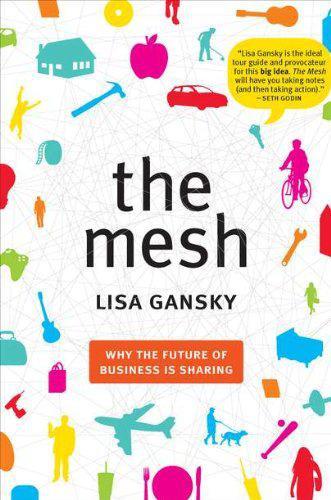
The Mesh: Why the Future of Business Is Sharing
by
Lisa Gansky
Published 14 Oct 2010
Design that reduces natural resource destruction and waste, which is ever more expensive, improves efficiency and reduces overall costs. heirloom design. or the half-life of crap. For years now, the common folklore in the West has been that the cheapest way to replace many appliances is to throw the old one away and buy a new one. “Planned obsolescence”—products designed with the expectation that they will have a short life and be replaced—has ruled the day. In contrast, the Mesh motivates designers to create timeless products that can be used over and over again. Saul Griffith, a respected physicist and inventor and a friend, has coined a name for this built-to-last practice: “heirloom design.”
…
See Loans/social lending Permission marketing Personalized products Mesh companies and product design Pet sharing, Mesh companies Phone service, Mesh companies Photo sharing, Mesh companies Population growth and growth of the Mesh in urban areas Porter, Michael Prius Privacy practices privacy-sensitive products and trust building Product design customer input, use of disposable versus heirloom modular personalization planned obsolescence shared goods, durability of standardization sustainable sustainable design waste, reusing Proprietary control, versus openness Prosper case study loan amounts dispersed by as niche business Public relations, lost trust, rebuilding Real estate Mesh companies See also Home exchange; Work-space sharing RecycleBank Recycle Now Recycling and reuse services and Geek Squad Mesh companies upcycling Walmart Share Club scenario RedesignMe REI Reinhart, James RelayRides Rent the Runway Repair services and big-box companies Mesh company possibilities Reputation.
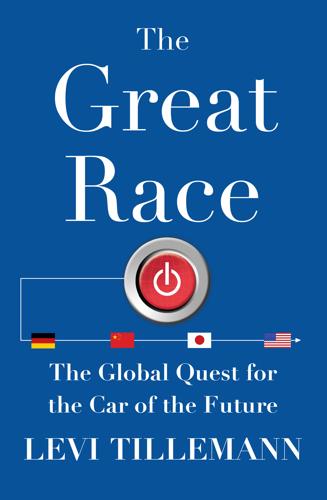
The Great Race: The Global Quest for the Car of the Future
by
Levi Tillemann
Published 20 Jan 2015
Ford’s great rival, General Motors (GM), also practiced mass production. However, GM did not do so with the same single-minded zeal as Ford. GM was originally the amalgamation of many smaller automotive nameplates, which led it toward diversified mass production, product differentiation, and eventually planned obsolescence. This strategy was dubbed “Sloanism” after the company’s managerial genius, Alfred P. Sloan Jr.7 Like oil, autos became militarily important. In World War I, new weapons like the “cistern” (eventually known as the tank), motorized troop transports, and other weaponized vehicles proved decisive to victory.8 Three decades later, during World War II, America was clearly dominating the race for motorized wheels.
…
With car sharing it is also easier to justify the cost of higher-quality vehicles. This includes systems that could make cars safer, more comfortable, more efficient and give them better performance. For instance, today cars are designed to last a couple of hundred thousand miles. The business model underlying this planned obsolescence means that there’s no good reason to invest in materials that would increase that life span. At a recent press conference the head of Nissan R&D explained that the company would not use carbon fiber because it was “too durable.”7 And in the context of individual vehicle ownership, it is hard to justify the cost or durability of carbon fiber.
…
See also Fukushima Daiichi nuclear plant (Japan) Nuclear Reform Special Task Force, Japanese, 248 Nuclear Regulatory Agency, Japan, 247 Obama (Barack) administration, 153, 167–69, 170, 171, 172, 174, 177, 181–83, 239, 252 Ohga, Kiho, 140, 194, 195 Ohno, Taiichi, 54 oil Bush administration and, 110, 111 and California’s prelude to the Great Race, 33, 38 and CARB timeline, 73 and cars in the future, 256, 257–58 Chinese demand for, 101, 115, 217–18, 252 and “death” of EV, 92 and debate about EVs, 238 and financial crisis of 2008, 163 government role in supplying, 7 and history of the global auto industry, 22, 24–25 and incentivizing demand for EVs, 11 independence from, 258 Japanese demand for, 49, 59–60, 122, 123, 126, 238 and methanol-powered cars, 72 and regulation of fuel economy, 142 Schwarzenegger’s concerns about, 143 U.S. demand for, 11, 90, 103, 109, 110, 111, 141, 183 and winning the Great Race, 254 Okuda, Hiroshi, 83 Olympics (Beijing, 2008), 203–7, 217, 225, 227, 250, 253 Organisation for Economic Co-operation and Development (OECD), 66–67 Otto Cycle, 83 Ouyang Mingao, 204, 222–23, 224, 250, 251 Ovshinsky, Iris, 25 Ovshinsky, Stanford, 24–25 ownership, car, 255, 263–65, 272 Pacific Gas and Electric, 202 Panasonic, 197–98, 215, 243 Panda Motor Corporation, 96–97 parking: of automated vehicles, 270 Partnership for a New Generation of Vehicles (PNGV), 26, 81, 82, 109, 111, 169, 170 Paulson, Henry “Hank,” 158, 161, 166 Pavley, Fran, 141–42 Pension Benefit Guaranty Corporation, 167 Peres, Shimon, 221 Persian Gulf War (1990-91): Humvee in, 29 Peugeot, 201 Phillips, Clay, 74 piston-in-cylinder architecture, 61, 62–64 pizza delivery: by automated vehicle, 266–67, 272 planned obsolescence, 22 platooning, 271 Platt Brothers, 45 “point-line system,” 251 policy and future of auto industry, 6, 7, 256, 273–74 and technology in the future, 273–74 and winning the Great Race, 253, 254 See also industrial policy; specific nation or policy politics battery standards and, 262 and California’s regulations, 32, 144–45 in China, 209, 213, 214, 249–50, 253 and debate about EVs, 238–39 environmental issues and, 32, 75 and future of auto industry, 6 and future of U.S., 254 global auto industry and, 261 and Japanese auto industry, 49, 134 and Japanese-U.S. relations, 44 U.S. auto industry and, 153, 161, 173–76, 274 and winning the Great Race, 27, 254 pollution.

The Smart Wife: Why Siri, Alexa, and Other Smart Home Devices Need a Feminist Reboot
by
Yolande Strengers
and
Jenny Kennedy
Published 14 Apr 2020
Through their disturbing exposé, Crawford and Joler show how each simple and convenient interaction with Alexa “requires a vast planetary network, fueled by the extraction of nonrenewable materials, labor, and data.” They reveal the circuitry of largely hidden impacts—from the mining of lithium batteries to planned obsolescence resulting in e-waste—that span every corner of the globe, extending far beyond the direct consumption of resources inside the home. What is concerning here is how smart wives like Alexa are deliberately designed to shield consumers from understanding and acknowledging their planetary impacts.
…
We also have a rich history to draw from that illustrates that the collapse of societies, economies, and entire civilizations can and does happen.121 On a more optimistic note, ecofeminist ideology is already being realized through the continual existence and reassertion of subsistence economies and grassroots movements as well as emerging global networks such as Wild Law, which gives nature its own legal rights.122 Other movements are holding electronics companies accountable for their troubling planetary impacts. The European Union and United States, for example, are establishing “right to repair” laws that are intended to make devices last longer and be easier to mend.123 These laws are an attempt to curtail “planned obsolescence” (whereby companies design devices to fail or stop supporting their repair in order to encourage consumers to upgrade).124 There is cause to hope, then, that these new Borg kings will have a limited reign or undergo radical transformation. Within this planetary doom and gloom, it is difficult to see what purpose the smart wife serves.
…
Catie Keck, “Right to Repair Is Less Complicated and More Important Than You Might Think,” Gizmodo, May 10, 2019, https://gizmodo.com/right-to-repair-is-less-complicated-and-more-important-1834672055?IR=T; Roger Harrabin, “EU Brings in ‘Right to Repair’ Rules for Appliances,” BBC News, October 1, 2019, https://www.bbc.com/news/business-49884827. 124. Sabine LeBel, “Fast Machines, Slow Violence: ICTs, Planned Obsolescence, and E-waste,” Globalizations 13, no. 3 (2016): 300–309. 125. Maria Mies and Shiva sum up this hypocrisy in their book Ecofeminism: “To ‘catch-up’ with the men in their society, as many women still see as the main goal of the feminist movement, particularly those who promote a policy of equalization, implies a demand for a greater, or equal share of what, in the existing paradigm, men take from nature.
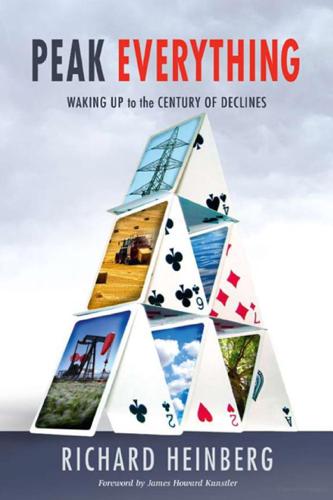
Peak Everything: Waking Up to the Century of Declines
by
Richard Heinberg
and
James Howard (frw) Kunstler
Published 1 Sep 2007
In a world where a genuine sense of mastery is elusive, and feelings of impotency abound, the well-designed product can provide a symbolism of autonomous proficiency and power.3 As industrial design progressed after World War II and into the ’50s, ’60s, ’70s, ’80s, and ’90s, style continued to evolve, as it had to in order to serve the purposes of fashion and planned obsolescence. Images and objects became more frankly seductive and more directly suggestive of the very qualities of which the lives of human beings were in fact being systematically drained — autonomy and creativity. In hindsight, it appears that Deco was the last hiccup of design originality for the hydrocarbon age.
…
Previously cheap petrochemical-based materials (such as plastics) will gradually disappear, necessitating the use of natural materials; however, many of the latter (such as wood) will also become more rare and expensive (as is already happening). Thus workers will inevitably develop more respect for natural materials. 5. Because buildings and objects being produced will require more hand labor and scarce raw materials, the throwaway mentality and the phenomenon of planned obsolescence will disappear. Durability will be a required attribute of all products. 6. For the same reasons, reparability will also be requisite: the average person will need to be able to fix anything that breaks. 7. Since products themselves will need to be durable and reparable, continued rapid changes of fashion and style will seem nonsensical and counterproductive.

Ours to Hack and to Own: The Rise of Platform Cooperativism, a New Vision for the Future of Work and a Fairer Internet
by
Trebor Scholz
and
Nathan Schneider
Published 14 Aug 2017
Fourth, open cooperatives are able to make use of open designs to produce sustainable goods and services. For-profit enterprises often aim to achieve planned obsolescence in products that would wear out prematurely. In that way, they would maintain tension between supply and demand and maximize their profits; obsolescence is a feature, not a bug. In contrast, open design communities, such as these of the Wikispeed car, the Wikihouse, and the RepRap 3D printer, do not have the same incentives, so the practice of planned obsolescence is alien to them. Fifth, and relatedly, open cooperatives reduce waste. The lack of transparency and penchant for antagonism among closed enterprises means they will have a hard time creating a circular economy—one in which the output of one production process is used as an input for another.
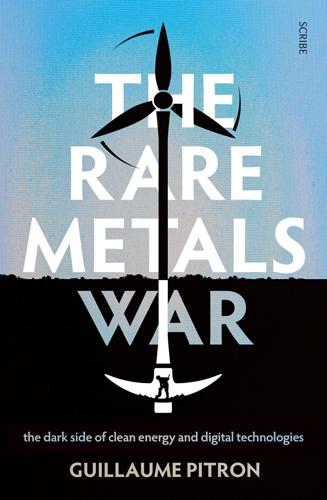
The Rare Metals War
by
Guillaume Pitron
Published 15 Feb 2020
Because we would not want to live like the Chinese, we would pile pressure onto our governments to ban even the smallest release of cyanide, and to boycott companies operating without the full array of environmental accreditations. We would protest en masse against the disgraceful practice of the planned obsolescence of products, which results in more rare metals having to be mined, and we would demand that billions be spent on research into making rare metals fully recyclable. Perhaps we would also use our buying power more responsibly, and spend more on eco-friendlier mobile phones, for instance. In short, we would be so determined to contain pollution that we would make astounding environmental progress and wind back our rampant consumption.
…
‘Environmental Responsibility Report, 2019 Progress Report, Covering Fiscal Year 2018’, Apple Inc, 2019. ‘Environmental Impact Report’, Tesla Motors, Inc., 2019. To give just one example, read ‘Time to Recharge: corporate action and inaction to tackle abuses in the cobalt supply chain’, Amnesty International, 2017. ‘The Fairphone, a No-conflict Smartphone without Planned Obsolescence’, World Forum for a Responsible Economy, 28 July 2017. ‘The “Right to Repair” Movement Wants You to Be Able to Fix Your Own Stuff’, Public Radion International, 24 December 2018. Visit The Restart Project website. ‘Meet the $21 Million Company that Thinks a New iPhone Is a Total Waste of Money’, Inc, April 2017.
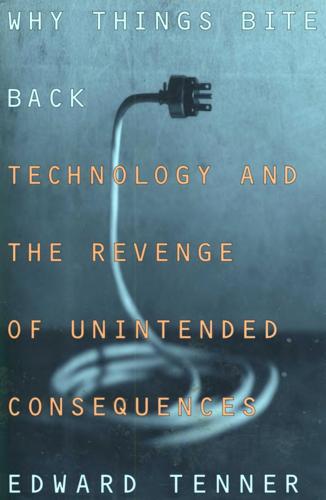
Why Things Bite Back: Technology and the Revenge of Unintended Consequences
by
Edward Tenner
Published 1 Sep 1997
But the industry is discovering that new products, too, can have disappointingly short useful lives. Promotion of one new antibiotic, Ciprofloxacin, destroyed much of its greatest asset— inexpensive protection against hospital-based infections—within a few years of its U.S. introduction. One critic of industry promotion, Dr. Calvin Kunin, has compared resistance to the planned obsolescence of automobiles, but others fear that pharmaceutical companies have lost interest in developing new antibiotics even as the old ones lose their power. The U.S. National Institutes of Health, concentrating funds on AIDS, also have cut back. Only five new antimicrobials were approved in 1991 and only two in 1990.
…
Meanwhile, business travelers who at first demanded smaller and lighter notebook computers can now add portable printers (with batteries good for only about thirty pages), wireless transmitters, CD-ROM drives, and speakers, bringing total weight and price back up to the days of the original Compaq luggables and beyond. 2 3 The huge investment in computing in the 198os and early 1990s, then reflected one of the great cultural inversions of our time: North American and European corporations, and millions of professionals, small businesspeople, academics, and students, learned to stop worrying and love planned obsolescence. If the watchword of the 1970s was "survival," that of the 1980s was "empowerment." People felt autonomous, in control, more powerful, and absolutely more productive. But toward the end of the 1980s, the sentiment grew that something was not right. Throughout the decade, scholars like the sociologist Rob Kling and the political scientist Langdon Winner were pointing out that computerization was a movement that reflected social conflict and organizational infighting as much as technical change.
…
The inflation of code, also reflected in 25megabyte application programs, illustrates a chronic problem of computing that contributes to the productivity paradox: as swiftly as resources grow, the demands of software tend to expand even faster. Programmers and developers are understandably working for the future, preparing for the next generation of machines. Most users are living in the past because either their budgets or their bosses won't let them upgrade hardware to the current standard. Meanwhile the planned obsolescence of software means that earlier versions of major programs may no longer be supported. Computer managers are moving users to Windows without always giving them the processor power, memory, or disk space to work effectively. For many users, computer software seems related to hardware as Thomas Malthus believed population responded to food resources: software does not just match but eventually outstrips hardware in their respective rates of growth.
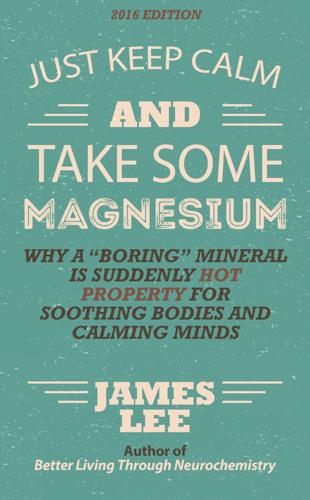
Just Keep Calm & Take Some Magnesium - Why a "Boring" Mineral Is Suddenly Hot Property for Soothing Bodies and Calming Minds
by
James Lee
Published 10 Feb 2014
If there was an inverse relationship between longevity and fertility, breeding an animal for increased longevity should result in decreased fertility. However, as an example, an experiment using fruit flies found that the specimens bred for longer life actually become more fertile, not less. To take this concept one step further, many have argued that we are indeed set up like printer cartridges are for planned obsolescence. Like a printer cartridge only has so many pages in it before the manufacturer has built in a kind of self-destruct function to boost sales, animals including humans appear to have our own self-destruct built in. This is in the form of various aging processes and diseases that target the elderly.

Makers
by
Chris Anderson
Published 1 Oct 2012
But as we enter the electric age, the complexity becomes mostly in the bits, not in the atoms. And there’s no reason a smart community can’t do that faster, better, and cheaper than any single company. How might that change things? Well, for starters it can create an alternative to the notion of planned obsolescence and disposability. As products like cars become more about their software than their hardware, it becomes possible to reverse the arrow of time—they can get better after you buy them, not worse, because they can get software updates. Think of how a website improves as the site’s developers add new features and improve its design.
…
Cars are, after all, increasingly driven “by wire,” not by mechanical linkages (if you have a new car, odds are neither your pedals nor your steering wheel is physically connecting to the engine or wheels; they’re essentially just joysticks that instruct software to actually move the vehicle). So why doesn’t the car company constantly update that software to improve the car’s performance, the way your computer Web browser is regularly updated? The cynical answer is that the car company would rather you bought a new car. But a community-created product places no such premium on planned obsolescence. If people want to give older products new life, they can and do. New bits can bring new life to old atoms. Ford, for one, is already paying attention. In early 2012, it worked with TechShop to bring one of the shared Making facilities to its home city. The Detroit TechShop is huge, at 17,000 square feet, and is stocked with $750,000 worth of laser cutters, 3-D printers, and CNC machine tools.
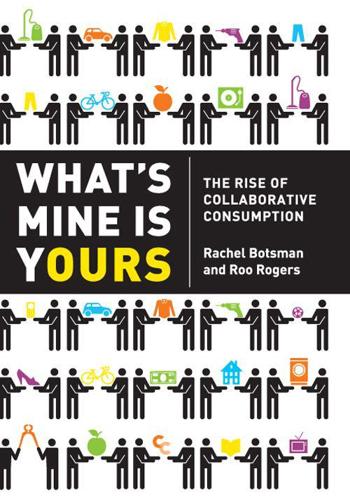
What's Mine Is Yours: How Collaborative Consumption Is Changing the Way We Live
by
Rachel Botsman
and
Roo Rogers
Published 2 Jan 2010
Willy was experiencing the pains of “death dating,” the idea of deliberately building into the product different ways to shorten its life, carefully controlled by the manufacturer. Planned obsolescence was a concept first suggested not by an economist, a manufacturer, or even an advertiser, but by a Manhattan real estate broker. In 1932, Bernard London wrote a twenty-page pamphlet called “Ending the Depression Through Planned Obsolescence.” London proposed starting a government agency that would determine the “lease of life” of every manufactured product, be it a car, a hair comb, a ship, or even a building.
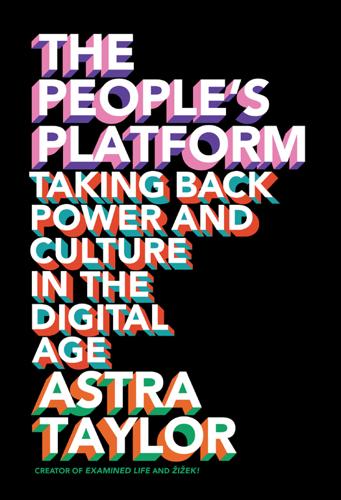
The People's Platform: Taking Back Power and Culture in the Digital Age
by
Astra Taylor
Published 4 Mar 2014
While I may lust after my grandmother’s library, my grandchildren will not care to inherent an antique Kindle or an iPad any more than I want last decade’s clunky desktop. Some may protest that this is the nature of technological innovation, but much of our consumption is driven not by advances in engineering but by planned obsolescence. Products “designed for the dump,” as people in the business call them—made to break and engineered to be difficult or impossible to fix—ensure a steady revenue stream. Thus a company such as Apple, seeking to shorten the replacement cycle of their wares, makes it easier and more affordable for consumers to buy a new gadget than change the battery in an old one.
…
You’ll know it’s there, so you’re going to use a beautiful piece of wood on the back. For you to sleep well at night, the aesthetic, the quality, has to be carried all the way through.” But Jobs’s masterpieces, if they can be called that, were designed to expire—to appear, suddenly, used up and outmoded, and, more important, replaceable. He made planned obsolescence so irresistible, it has ceased to be shocking. Marketers play their part to encourage the perception of datedness. Apple, to stick with one company, spent almost $1 billion on advertising in 2012, pushing new and improved versions of goods many people already possess. Our laptops and handheld devices may work as well as ever, but they begin to look démodé in a matter of months, so we send our barely used machines to the dump and get something up-to-date, something second generation instead of first—a source of fleeting satisfaction, a symbol of our allegiance to innovation and progress.
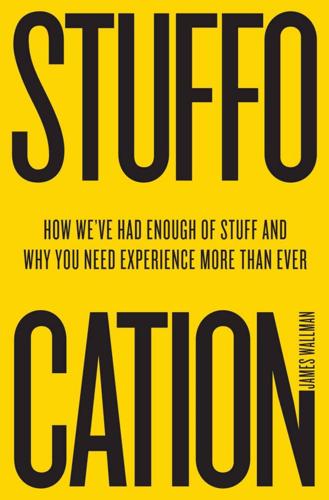
Stuffocation
by
James Wallman
Published 6 Dec 2013
Would any change in the goods or the habits of people speed up their consumption? Can they be displaced by newer models? Can artificial obsolescence be created? Consumer engineering does not end until we can consume all we can make.” In the same year, a real estate agent in New York called Bernard London, in a pamphlet called Ending the Depression Through Planned Obsolescence, suggested that the government stimulate demand by defining the time any product was allowed to be used. It would work like the use-by date that comes with food. After a time, in London’s vision, the product you had bought would be “legally dead”. You would have to trade it in or get rid of it – and buy a new one.
…
Christine Frederick For more on Christine Frederick, read Christine McGaffey Frederick, Selling Mrs. Consumer (New York: Business Borse, 1929); also Janice Rutherford, Selling Mrs. Consumer: Christine Frederick and the Rise of Household Efficiency (Athens, Georgia: University of Georgia Press, 2003). Bernard London Find Bernard London, Ending the Depression Through Planned Obsolescence (1932) on Wikimedia.org. Henry Ford’s resistance to obsolescence. “We want the man who buys one of our cars never to have to buy another,” he had stated in 1922. “We never make an improvement that renders any previous model obsolete.” Source: The Henry Ford (www.thehenryford.org). Richard Nixon in the Kitchen and The Best Idea of the 20th Century Sources for the story of Nixon, Khrushchev and the kitchen include William Safire, “The Cold War’s Hot Kitchen”, New York Times, 23 July 2009; also, various articles in BBC.co.uk, New York Times archives, History.com, and old newscasts on YouTube.com.
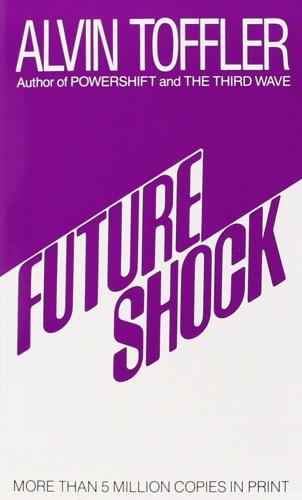
Future Shock
by
Alvin Toffler
Published 1 Jun 1984
For the fear of product obsolescence drives businessmen to innovation at the same time that it impels the consumer toward rented, disposable or temporary products. The very idea of obsolescence is disturbing to people bred on the ideal of permanence, and it is particularly upsetting when thought to be planned. Planned obsolescence has been the target of so much recent social criticism that the unwary reader might be led to regard it as the primary or even exclusive cause of the trend toward shorter relational durations. There is no doubt that some businessmen conspire to shorten the useful life of their products in order to guarantee replacement sales.
…
The new computers are infinitely faster and cheaper to operate than the antique models of the early 1960's. This is obsolescence due to substantive technological advance. But obsolescence also occurs when the needs of the consumer change, when the functions to be performed by the product are themselves altered. These needs are not as simply described as the critics of planned obsolescence sometimes assume. An object, whether a car or a can opener, may be evaluated along many different parameters. A car, for example, is more than a conveyance. It is an expression of the personality of the user, a symbol of status, a source of that pleasure associated with speed, a source of a wide variety of sensory stimuli—tactile, olfactory, visual, etc.
…
Often, without even having a clear idea of what needs he wants served, the consumer has a vague feeling that he wants a change. Advertising encourages and capitalizes on this feeling, but it can hardly be credited with having created it single-handedly. The tendency toward shorter relational durations is thus built more deeply into the social structure than arguments over planned obsolescence or the manipulative effectiveness of Madison Avenue would suggest. The rapidity with which consumers' needs shift is reflected in the alacrity with which buyers abandon product and brand loyalty. If Assistant Attorney General Donald F. Turner, a leading critic of advertising, is correct, one of the primary purposes of advertising is to create "durable preferences."

Global Spin: The Corporate Assault on Environmentalism
by
Sharon Beder
Published 1 Jan 1997
What was needed was strategies that would make Americans in large numbers into voracious, wasteful, compulsive consumers. . .4 Packard outlined some of the strategies used for this purpose, including the production of throwaway single-use items, the introduction of credit, the manipulation of the consumer through ‘bargains’, ‘sales’ and ‘trade-ins’ and the introduction of planned obsolescence: when an item breaks in a short period of time, when new models outperform old ones, or when fashion changes make perfectly serviceable and functional items undesirable. ‘Loyal’ Americans were again being asked to spend money in mid-1990 to get the US out of recession. Today, as in the 1950s, sales figures over the Christmas period are a major indicator of economic buoyancy that are reported in national news programmes.
…
It spends $40 million per year on image ads.96 GE likes to portray itself as a good citizen providing ‘the good things in life’, giving large donations for schools, scholarships for the underprivileged and local community projects. However its history reveals its priority remains with corporate profits. During the Depression, GE introduced planned obsolescence into the life of light bulbs so as to boost sales, and during the War that followed GE was found guilty by the courts of collaborating with a key German company, Krupp. After the war it was found guilty of price-fixing and bid-rigging (in 1961 and again in 1978) and recently (in 1985 and again in 1988, 1990 and 1991) it has also been caught defrauding the US government in defense contracts.
…
Index Abramsky, Sasha ref1–ref2 Accuracy in Media (AIM) ref1 acid rain ‘benefits’ of ref1 corporate responsibility ref1 debunking ref1, ref2, ref3 activism corporate ref1, ref2–ref3, ref4–ref5, ref6–ref7, ref8–ref9 employee ref1–ref2, ref3, ref4 environmental ref1, ref2–ref3, ref4, ref5, ref6–ref7, ref8, ref9 Adatto, Kiko ref1–ref2 Adler, Jonathan ref1 The Advancement of Sound Science Coalition (TASSC) ref1 advertising advocacy ref1–ref2, ref3–ref4 brand loyalty ref1, ref2 campaigns ref1–ref2, ref3–ref4, ref5–ref6, ref7–ref8 children targeted ref1–ref2 complaints ref1, ref2–ref3, ref4–ref5 consumerism as result of ref1–ref2, ref3–ref4, ref5–ref6 corporate bias ref1–ref2, ref3–ref4 corporate sponsorship ref1, ref2–ref3, ref4, ref5 environmentalism ref1–ref2, ref3–ref4, ref5–ref6 green ref1–ref2, ref3–ref4 influence of ref1, ref2–ref3, ref4 the ‘infomercial’ ref1–ref2 on the internet ref1–ref2 misleading ref1–ref2 in newspapers ref1–ref2, ref3, ref4 Procter & Gamble ref1–ref2 pseudo-environmentalism ref1–ref2, ref3 regulation of ref1, ref2–ref3, ref4, ref5 research ref1 revenue ref1 in schools ref1–ref2, ref3–ref4 soap operas ref1, ref2 strategies ref1–ref2 TV programs influenced ref1, ref2–ref3, ref4, ref5–ref6 Advertising Age ref1 Advertising Standards Authority (ASA) ref1, ref2–ref3, ref4 advocacy advertising ref1–ref2, ref3–ref4 AEI see American Enterprise Institute aerosol industry ref1–ref2 Agent Orange ref1 Agricultural Chemical Association ref1 agricultural industry ref1, ref2 air pollution ref1, ref2, ref3, ref4 Alliance for Responsible CFC Policy ref1 Alliance for the Responsible Use of Chlorine Chemistry (ARCC) ref1, ref2, ref3–ref4, ref5 Alterman, Eric ref1 Alton, David ref1–ref2 American Automobile Manufacturers Association ref1 American Coal Foundation ref1 American Council on Science and Health ref1, ref2 American Electric Power ref1 American Enterprise Institute (AEI) ref1, ref2, ref3, ref4, ref5, ref6 American Farm Bureau Federation ref1 American Freedom Coalition (AFC) ref1 American Nuclear Society ref1, ref2 American Paper Institute ref1 American Petroleum Institute (API) ref1, ref2, ref3 American Public Health Association ref1 American Society of Mechanical Engineers ref1 Amway ref1 Anderson, Paul ref1–ref2 Anderson, Terry ref1, ref2, ref3 Angel, Jeff ref1 animal testing ref1–ref2, ref3, ref4, ref5, ref6–ref7, ref8, ref9 anti-climate treaty campaign ref1–ref2 anti-environmentalism ref1–ref2, ref3–ref4, ref5–ref6, ref7–ref8, ref9 Apple Computers ref1, ref2 Arizona Republic ref1 Arnold, Ron ref1–ref2, ref3–ref4, ref5–ref6, ref7–ref8, ref9, ref10, ref11 Artzt, Edward ref1 ASA see Advertising Standards Authority Associated Newspapers ref1 ‘astroturf ’ ref1 Atomic Energy Commission ref1 Audubon Society ref1, ref2, ref3 Australia advertising ref1, ref2, ref3, ref4 anti-environmentalism ref1, ref2 community advisory panels ref1 conservatism ref1–ref2 corporate activism ref1–ref2 corporate funding ref1, ref2 dioxin ref1, ref2, ref3, ref4–ref5 education ref1, ref2, ref3, ref4 environmentalism ref1, ref2, ref3 front groups ref1 government influence ref1, ref2–ref3 greenhouse gas emissions ref1, ref2, ref3 influence of economists in ref1–ref2 lawsuits ref1, ref2–ref3, ref4 the media ref1 MPs’ financial interests ref1 ‘New Right’ ref1–ref2 PR industry ref1, ref2, ref3, ref4–ref5, ref6–ref7, ref8–ref9 propaganda ref1–ref2 public opinion ref1, ref2, ref3 ‘revolving door’ syndrome ref1, ref2, ref3 think-tanks ref1–ref2, ref3, ref4, ref5, ref6, ref7, ref8 trade associations ref1 Australian Broadcasting Corporation (ABC) ref1, ref2, ref3 Australian Bureau of Agricultural and Resource Economics (ABARE) ref1 Australian Business Roundtable ref1–ref2 Australian Centre for Independent Journalism ref1 Australian Chamber of Commerce ref1 Australian Conservation Foundation ref1 Australian Defence Industries (ADI) ref1 Australian Institute of Petroleum ref1 Australian Institute of Public Affairs (IPA) ref1 Australian Petroleum Exploration Association ref1 automobile industry ref1, ref2, ref3, ref4, ref5 automobiles ref1 Bagdikian, Ben ref1, ref2, ref3 Bailar, John ref1 Bailey, Ronald ref1, ref2, ref3 Baird, Bruce ref1, ref2, ref3 Baker, Dean ref1 Baliunas, Sallie ref1 Balling, Robert ref1 BANANA ref1 Bandow, Doug ref1 Barnett, Steve ref1 BASF ref1, ref2–ref3 BBC ref1–ref2 BC Council of Forest Industries ref1 Beder, Sharon ref1–ref2, ref3 Beef Industry Council ref1 Bell, Karla ref1, ref2, ref3, ref4 Bell Potinger Communications ref1 Bennett, Lance ref1 Berlusconi, Silvio ref1 Bernays, Edward ref1, ref2 Beutler, Warwick ref1 Bevins, Anthony ref1 BGH ref1 BHP ref1, ref2, ref3, ref4, ref5, ref6 Biodiversity treaty ref1 Birnbaum, Linda ref1, ref2 Blackburn, Thomas ref1 Bland, Michael ref1, ref2, ref3–ref4 Block, Walter ref1 Blue Ribbon Coalition ref1, ref2 Blyskal, Jeff and Marie ref1, ref2 Bode, Thilo ref1, ref2, ref3 Body Shop ref1, ref2–ref3 Body Shop International ref1 Boff, Richard Du ref1 Bolivia ref1 Bonner, Jack ref1–ref2 Boren, Frank ref1 boycotts, consumer ref1–ref2, ref3, ref4, ref5 BP Australia ref1 BP Company plc ref1, ref2, ref3 Brady, John ref1 Brent Spar ref1, ref2 Britain advertising ref1, ref2, ref3–ref4, ref5–ref6 anti-environmentalism ref1 corporate funding ref1–ref2 dioxin ref1, ref2–ref3 education ref1 environmental legislation ref1, ref2 environmentalism ref1 lawsuits ref1, ref2–ref3 the media ref1 media ownership ref1–ref2 MPs’ financial interests ref1–ref2 political alienation ref1 political coverage ref1 political donations ref1 PR industry ref1, ref2–ref3 ‘revolving door’ syndrome ref1 SLAPPs ref1–ref2 think-tanks ref1–ref2, ref3, ref4, ref5–ref6, ref7, ref8–ref9 British Nuclear Fuels ref1–ref2 British Plastics Federation ref1, ref2–ref3 Brody, Bill ref1 Brookings Institution ref1, ref2 Browner, Carol ref1 Browning-Ferris Industries ref1 Brunton, Ron ref1 Brzezinski, Zbigniew ref1 BSMG Workwide (UK) ref1 Buchanan, Pat ref1 Bulgaria ref1 Burger King ref1 Burson, Harold ref1 Burson-Marsteller ref1–ref2, ref3, ref4–ref5, ref6, ref7, ref8–ref9, ref10, ref11, ref12 Burton, Bob ref1 Bush, George ref1, ref2, ref3, ref4, ref5, ref6 Bush, George (Jnr) ref1 Business Council for Sustainable Development ref1–ref2 Business Council of Australia ref1 Business Roundtable ref1, ref2, ref3, ref4 Business Week ref1–ref2 Button, John ref1 Cable News Network see CNN Caldicott, Helen ref1 Campaign for Nuclear Disarmament Cymru ref1–ref2 campaigns advertising ref1–ref2, ref3–ref4, ref5–ref6, ref7–ref8 fax ref1, ref2 letter-writing ref1, ref2–ref3, ref4–ref5, ref6, ref7, ref8 litter ref1, ref2 media ref1, ref2–ref3, ref4 public relations ref1–ref2, ref3–ref4, ref5–ref6, ref7, ref8–ref9, ref10, ref11 telephone ref1, ref2, ref3, ref4, ref5 by think-tanks ref1 Wise Use Movement ref1–ref2, ref3, ref4 Canada advertising ref1, ref2 education ref1, ref2 environmentalism ref1 front groups ref1–ref2 grassroots organisations ref1–ref2, ref3 greenhouse gas emissions approval for ref1 lawsuits ref1, ref2, ref3–ref4 PR industry ref1–ref2 public opinion ref1–ref2 Share Movement ref1, ref2 think-tanks ref1 Wise Use Movement ref1, ref2 Canadian Nuclear Association ref1, ref2 Canan, Penelope ref1, ref2, ref3, ref4 CAP see Civic Action Program capitalism ref1–ref2, ref3, ref4 see also free enterprise carbon dioxide ref1, ref2, ref3 career opportunities for green leaders ref1–ref2 Carey, Alex ref1, ref2–ref3 Carlo, George ref1, ref2 Carmody, Kevin ref1 Carothers, Andre ref1–ref2 Cartmel, Robert ref1, ref2 cars see automobiles Carson, Rachel ref1 Cass, Penny ref1–ref2 Cato Institute ref1–ref2, ref3–ref4, ref5, ref6, ref7, ref8, ref9, ref10, ref11 CEI see Competitive Enterprise Institute cement industry ref1 Center for Disease Control (CDC) ref1 Center for Strategic and International Studies ref1, ref2 Center for the Defense of Free Enterprise ref1, ref2, ref3–ref4, ref5–ref6, ref7 Center for the Study of Carbon Dioxide and Global Change ref1 Central Newspapers ref1 Centre for Independent Studies (CIS) ref1–ref2, ref3 Centre for Policy Studies (CPS) ref1, ref2 CFCs ref1, ref2, ref3, ref4, ref5–ref6, ref7, ref8 CFE see Citizens for Full Evaluation Chamber of Commerce and Industry of Western Australia ref1 Chamber of Commerce (US) ref1, ref2, ref3, ref4, ref5, ref6 Channel One ref1–ref2, ref3 chemical industry ref1, ref2, ref3–ref4, ref5, ref6, ref7, ref8 Chemical Manufacturers Association ref1, ref2, ref3, ref4, ref5, ref6 Chemistry and Industry ref1 Chevron Corporation ref1, ref2, ref3 Chicago Tribune ref1 children advertising targets ref1–ref2 brand loyalty ref1, ref2 consumerism ref1–ref2, ref3, ref4–ref5 environmental education ref1–ref2 green toys ref1 internet users ref1–ref2 television ref1 chloracne ref1, ref2, ref3, ref4, ref5 chlorine ref1 banning ref1–ref2, ref3, ref4, ref5, ref6 ‘benefits’ of ref1–ref2 defence of ref1–ref2 and dioxin ref1–ref2, ref3, ref4–ref5, ref6–ref7 industry ref1, ref2–ref3, ref4–ref5 in paper industry ref1, ref2, ref3, ref4 PR defence ref1–ref2 products ref1, ref2–ref3 toxicity of ref1 Chlorine Chemistry Council ref1, ref2, ref3–ref4, ref5–ref6, ref7 Chlorine Institute ref1–ref2, ref3 Chlorophiles ref1, ref2, ref3 Chomsky, Noam ref1, ref2, ref3 Christian Science Monitor ref1 Ciba-Geigy AG ref1 Citigate Dewe Rogerson ref1 Citizen’s Advisory Council ref1 Citizen’s Clearinghouse for Hazardous Waste ref1–ref2 Citizens for Full Evaluation (CFE) ref1 Civic Action Program (CAP) ref1, ref2 Claney, Stephen ref1 Clean Air Act (1968) ref1 Clean Air Act (1990) ref1, ref2, ref3, ref4, ref5, ref6, ref7 Clean Water Act ref1, ref2 Clean Water Act (1973) ref1 Clearinghouse on Environmental Advocacy and Research (CLEAR) ref1 climate change ref1, ref2 Clinton, Bill ref1, ref2, ref3, ref4, ref5 Clorox Corporation ref1 CNN ref1, ref2 CO2 see carbon dioxide coal industry ref1, ref2, ref3, ref4 Coalition for Environmentally Responsible Economies (CERES) ref1 Coalition for Vehicle Choice ref1 Cockett, Richard ref1 Code of Advertising and Sales Promotion ref1, ref2 Cohen, Jeff ref1–ref2, ref3 Coles Supermarkets ref1 commercialism ref1–ref2, ref3–ref4 Committee for Economic Development in Australia (CEDA) ref1 Committee to Preserve American Security and Sovereignty (COMPASS) ref1–ref2 Commoner, Barry ref1 communications industry ref1 communism ref1, ref2, ref3 Community Advisory Panels ref1–ref2 Community Projects Ltd ref1–ref2 Competitive Enterprise Institute (CEI) ref1, ref2, ref3–ref4, ref5, ref6, ref7, ref8, ref9, ref10, ref11 computers see information technology Congress Watch ref1 Connor, Desmond ref1–ref2 Conservation Foundation ref1 conservatism anti-environmentalism ref1–ref2 in Australia ref1–ref2 in education ref1–ref2 in the media ref1–ref2, ref3–ref4 in the 70s ref1–ref2 think-tanks ref1–ref2, ref3, ref4–ref5 Conservative party (Britain) ref1, ref2, ref3, ref4–ref5, ref6 Consumer Alert ref1 consumer boycotts ref1, ref2–ref3, ref4, ref5, ref6, ref7 Consumer Reports ref1 consumerism advertising results in ref1–ref2, ref3–ref4, ref5–ref6 of children ref1–ref2, ref3, ref4–ref5 planned obsolescence ref1–ref2, ref3 in USA ref1–ref2 Contract with America ref1, ref2, ref3 Control of Pollution Act (1974) ref1 Convention on Climate Change ref1 Cooler Heads Coalition ref1, ref2, ref3, ref4 Cooper, Mario ref1–ref2 Coors, Joseph ref1, ref2 corporate activism ref1, ref2–ref3, ref4–ref5, ref6–ref7, ref8–ref9 corporate culture ref1 corporate mergers ref1 Corporate Television Networks (CTN) ref1 corporations, government funded ref1, ref2, ref3–ref4, ref5 cosmetics industry ref1–ref2 cost benefit analysis ref1–ref2, ref3, ref4 Costantini, Edmond ref1 Cotton Australia ref1 Coulter, Jane ref1 Council for Wildlife Conservation and Education ref1 Council on Economic Priorities ref1–ref2, ref3 Council on Foreign Relations ref1 Countrywide Porter Novelli ref1 see also Porter/Novelli Courier Mail ref1 Cox, Hank ref1 CPS see Centre for Policy Studies Criminal Justice and Public Order Act (1994) ref1 Croatia ref1 Cronkite, Walter ref1 ‘cross-pollination’ ref1 Crowley, Chris ref1 Cushman, Charles ref1, ref2–ref3, ref4 Czech Republic ref1 Dadd, Debra Lynn ref1–ref2 Daily Herald ref1 Daily Sketch ref1 Daimler-Chrysler ref1 Daly, Fred ref1 Davies, John ref1, ref2 Davis, Stanley Clinton ref1 Dawkins, Maurice ref1 DDT ref1, ref2 Dearing, Sir Ron ref1 democracy ref1–ref2 Democratic party (US) ref1, ref2 Desai, R. ref1 Detjen, Jim ref1 Detroit News ref1 Diesendorf, Mark ref1 Dillon, John ref1–ref2 dioxin Agent Orange ref1 ‘benefits’ of ref1 chloracne ref1, ref2, ref3, ref4, ref5 and chlorine ref1–ref2, ref3, ref4–ref5, ref6–ref7 defence of ref1, ref2–ref3, ref4–ref5, ref6–ref7, ref8–ref9 effects of ref1–ref2, ref3, ref4 in the environment ref1–ref2, ref3, ref4 environmental opposition ref1–ref2 EPA assessment ref1, ref2–ref3 experiments ref1–ref2, ref3, ref4, ref5, ref6–ref7 in the food chain ref1–ref2 lawsuits ref1, ref2, ref3–ref4 media defence ref1, ref2–ref3, ref4 natural mimics ref1–ref2 PR campaigns ref1, ref2–ref3 research ref1–ref2, ref3, ref4–ref5 risk assessment ref1, ref2–ref3, ref4–ref5, ref6 safety levels ref1–ref2, ref3, ref4, ref5, ref6 scientific ‘evidence’ ref1–ref2, ref3–ref4, ref5–ref6 sources ref1 toxicity ref1–ref2, ref3, ref4, ref5–ref6 in Vietnam war ref1, ref2 Dioxin Working Group ref1 Direct Marketing ref1 Disney Corporation ref1, ref2 Dole, Bob ref1, ref2, ref3 Domino’s Pizzas ref1 Donohoe, Jenny ref1–ref2 Doolittle, John ref1 Dow Chemical Company dioxin ref1–ref2, ref3, ref4, ref5, ref6, ref7 front group funding ref1, ref2, ref3–ref4 PR campaigns ref1 pseudo-environmentalism ref1–ref2 Superfund legislation ref1 Dr Seuss ref1 Du Boff, Richard ref1 Duchin, Ronald ref1, ref2 Dumanoski, Dianne ref1 DuPont Company ref1, ref2–ref3, ref4, ref5, ref6 Durnil, Gordon ref1 Durning, Alan ref1, ref2 Dykstra, Peter ref1, ref2 E.
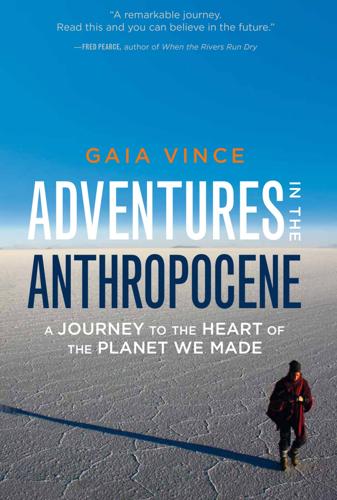
Adventures in the Anthropocene: A Journey to the Heart of the Planet We Made
by
Gaia Vince
Published 19 Oct 2014
In that way, women would need to replace them more frequently. This way of selling more products by designing in a set lifespan is known as planned obsolescence, and many politicians and economists believe it to be an economic necessity. The idea was born in the US during the 1930s depression as a way to get the economy moving again and provide employment. By the 1950s, a sophisticated advertising industry and easy credit were persuading people to shop till they dropped. Consumerism was born. The fashion industry is predicated on planned obsolescence, and other industries are following this high-turnover model and bringing out products that have cosmetic gimmicks or seasonal appeal but which will soon appear dated.
…
As a result, most of the big-name companies from Apple to Toshiba now fiercely guard their service manuals, and use copyright law to prevent people from making them public online. ‘The reason they don’t issue the manuals is to stifle the resale market, kill the repair business and to strengthen the planned obsolescence of their products,’ Kyle says. And it also enables companies to significantly mark up different models. For example, the difference between a 16 GB iPad and a 64 GB one is a chip that costs an extra $7, he says, whereas the price difference for consumers is $200. If consumers could replace the chip, or change the batteries – which are not replaceable and designed to fail in twelve to twenty-four months – then the companies would lose a lucrative high-end market.
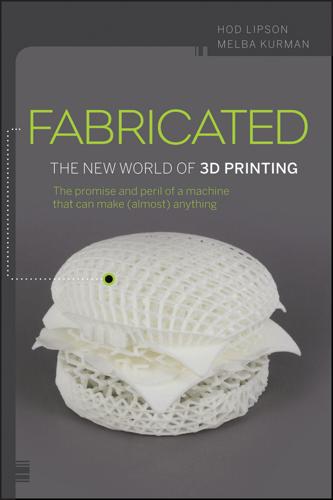
Fabricated: The New World of 3D Printing
by
Hod Lipson
and
Melba Kurman
Published 20 Nov 2012
“And food byproducts, like corn husk or wheat chaff, cost very little.” “Green 3D printing seems like an amazing direction to take. Re-purposing waste into useable objects might be a fairytale. But it’s an idea worth taking a good hard look at to see if we can make it happen,” Mark concluded. From “planned obsolescence” to “exuberant waste” One environmental hazard of 3D printing has nothing to do with the manufacturing process or raw materials. The risk is a new mindset. 3D printing gives people the power to design and make whatever physical object they can dream up. But like the old saying goes, “Nothing in life is free.”
…
A RepRap printer (full name Replicating Rapid Prototyper) is the physical version of an iterative and endless computer algorithm. Several forms of disruption could result. If a machine could make its own replacement parts, it would be difficult for any company to claim and enforce patent rights. Another widely used business strategy—planned obsolescence—would also fall by the wayside. Some industries benefit if their products break quickly, but only at the right moment in time. In these cases, engineers calculate how to best design and make a product so it survives long enough to pass out of warranty, but not much longer. It’s not your imagination that products break shortly after their warranty expires.
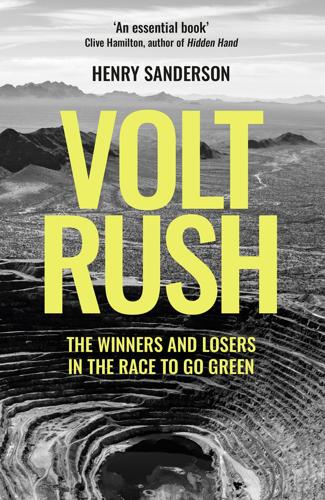
Volt Rush: The Winners and Losers in the Race to Go Green
by
Henry Sanderson
Published 12 Sep 2022
Yet most of his customers were attached to their old cars, they had been in the family for years, and they wanted to keep them in the face of tightening regulations on emissions. Quitter’s work highlighted the need to make products last longer. Much of the short lifespan of consumer electronic goods was due to the practice of ‘planned obsolescence’, which began in the 1920s when General Electric and other lightbulb makers created a cartel to shorten the lifespan of lightbulbs, so people bought more of them. It worked remarkably well. Today, the same incentive remains in place: it generally costs more to repair an item than to buy a new one.
…
Index Adkerson, Richard 178 Agrium 85 Albemarle 59, 66, 77 Allen, Matthew 152 Allende, Salvador 78, 79 Altura 64, 65 aluminium 3, 211 Amnesty International 90, 132–5, 139–40 Amoco 199 Annan, Kofi 102 Anno, Yasuo 219, 220 Apple 112, 123, 131, 133–4, 213 Arctic Circle 224–5 Arfwedson, Johan 49 Argentina 34, 51–2, 68–70 Arnstadt (Germany) 32–3 Asahi Kasei Corporation 21, 30 ASM, see mining: artisanal A&T Battery 30 Atacama Desert (Chile) 3, 57, 73–8 ATL 37–9, 42, 43 Attenborough, David 195 Audi 32, 40 Australia 5, 34, 57, 59–66, 67–8, 84 and coal 97 and copper 179 and nickel 154, 157 AVZ Minerals 68 Bacanora Lithium 48 Bachelet, Michelle 85 baitong (white copper) 155 Bajo people 166 Baros, Vanja 110 Barron, Gerard 188–90, 191, 192, 195–6 batteries 2–3, 7–8, 25–7, 34–5, 36–9, 50–1 and Edison 15–16, 17–18 and electric cars 13–14 and Europe 32–4, 218, 219–22 and Global Alliance 141 and Goodenough 27–8, 29 and history 23–5 and Japan 29–31 and LFP 245–6 and lithium-ion 19–20, 21–2 and Northvolt 222–3 and recycling 209–10, 213–17 and UK 243–4 see also cobalt; lithium; nickel Beijing, see China Belgium 135–6, 137, 184, 202–4; see also Leopold II of Belgium, King Bell Labs 37 ‘Belt and Road Initiative’ (BRI) 162–3 Berlin, Anton 226 Best, Eric 100 beta-alumina 25 BHP 154–5, 176 BHR Partners 179 Biddle, Neil 61–2, 63 Biden, Hunter 179 Biden, Joe 180 billionaires 3, 34–5, 71, 173, 178, 192, 224–5; see also Gertler, Dan; Glasenberg, Ivan; Jiang Weiping; Musk, Elon; Ponce Lerou, Julio Bitrán, Eduardo 76–7, 78, 81–2, 85, 86, 87 Bitumba, Robert 146, 147–8 BMW 32, 33, 42, 66, 140 Bobenrieth, Eduardo 81 Bolloré 220 Boscawen family 231, 240 Boskalis 199 BP (British Petroleum) 115 Braungart, Michael: Cradle to Cradle: Remaking the Way We Make Things 211 Brazil 154, 179 Brearley, Harry 155 Bringedal, Bård 153 Brinsden, Ken 62–4, 65, 67–8 Bristow, Mark 117 Brockovich, Erin 165 Brodesser, Bastian 90 Brooks, Tim 172 Broughton, David 172, 185 Brown, Steven 165, 166, 167 Bucher, Alejandro 76, 78 Büchi, Hernán 82 Buffett, Warren 41 Burma 183 Bush, George W. 105 BYD 38, 41, 129, 131, 245 Cade, John 49–50 Caesens, Elisabeth 130, 142 Calaway, James 52 Camba, Alvin 164 Cameron, James 192–3 Canada 68–9, 84 and nickel 154, 156, 157, 173, 182–3 carbon dioxide 27, 66–7, 165, 220 and deep sea 193, 196 and emissions 4, 212, 222, 224 Carlsson, Peter 218–20, 222–3 Carlyle Group 38–9 Carroll, Rory 129 cars 14, 15, 16–17, 18–19, 39–40, 212 and recycling 211, 214–16 see also electric vehicles Carson City (NV) 208–9 Carter, Assheton Stewart 135 Casement, Roger 137 Casson, Louisa 195 Castro, Fidel 78 cathodes 27, 29, 30, 31 CATL (Contemporary Amperex Technology) 32–3, 34–5, 42–6, 96, 131 and nickel 159, 164 CDM 122, 130, 132–3 Cerruti, Paolo 219 Challenger, HMS 197 Chamberlain, Matthew 141, 142 Chen, T.H. 37, 38 Chen Jinghe 186 Chen Xuehua 122, 127, 159 Chevrolet 52 ‘Chicago boys’ 72, 79, 81 child labour 90, 92, 93, 129, 139, 140–1 and Huayou 122–3, 124–5, 134–5 and Kasulo project 146, 147, 148 Chile 5, 51, 71–3, 78–81, 162 and copper 172, 175, 176, 180 see also Atacama Desert; SQM (Sociedad Química y Minera de Chile) China 2, 3, 4–5, 105, 128, 185–7 and Amnesty 139 and Argentina 68–9 and Australia 60–1, 62–6, 67–8 and BRI 162–3 and cars 39–40 and CATL 32–9 and Chile 71–2, 75 and cobalt 96, 122 and commodities boom 109, 110 and copper 170, 171, 175–7, 178–9 and deep sea 200 and DRC 143, 144 and electric cars 40–6 and Europe 221–2, 223–4 and Indonesia 154 and Jiang Weiping 83–5 and nickel 155, 158–60 and PNG 150–1, 152, 153 and pollution 244 and supply chain 92 and Tianqi Lithium 85–7 and Tsingshan 160–2, 163–4, 167 and USA 113–14 and Wang Xiaoshen 47–8 and Xinjiang 56–8 and Xinyu 52–6, 58–9 see also Huayou Cobalt China Africa-Development Fund 131 China Molybdenum 117, 178–80 Church of England 119, 120 CIA 198–9 circular economy 213 CITIC Metal 170, 186 Clarion-Clipperton-Zone 189–90, 192, 194, 200, 204 Clean Air Act (1970) 23 Climate Action 100+ 119 climate change 1, 2, 23, 27, 33, 40, 50 coal 4, 5, 11, 67, 109 and China 57, 61, 222 and Glencore 97, 119 and nickel 157, 163–4, 165 cobalt 3, 4–5, 9, 30, 34–5, 124 and deep sea 191 and DRC 92–4, 99–102, 106, 107–8, 115–18, 121–3 and electric cars 138–40 and Glencore 89–90, 95–7, 142–3 and health risks 124–5 and LME 141–2 and PNG 150–3 and prices 143–4 and recycling 209–10, 213 and Volkswagen 88–9, 90–1 see also Huayou Cobalt Cohen, Michael 110 Colby, William 198 Coldelco 74 Communist Party 34, 40, 56, 83, 84 Congo, see Congo Free State; Democratic Republic of Congo (DRC) Congo Dongfang Mining International (CDM) 122 Congo Free State 135–7 Conrad, Joseph 137 Conservation International 195 consumerism 123–4 Contesse, Patricio 76, 79 copper 3, 5, 9, 97, 173–6, 180–1 and Australia 67 and Bougainville 152 and Chile 73–5, 78–9 and China 176–7, 178–80 and Cornwall 236 and DRC 100–2, 106, 107–9, 169–73, 177–8, 183–5, 186–7 and Japan 157 Corfo 77, 79, 80, 81 Corliss, Jack 193 Cornwall 228–9, 230, 231, 232–6, 238–9 and landowners 239–41 and tin mining 236–7 corruption 72, 76, 80, 98, 142 and DRC 92–3, 104, 107 and Gertler 102–3, 110–12 Covid-19 pandemic 7, 65, 67, 167–8, 218 Crane, Lucy 235, 237, 239 Crawford, Matthew 13 Cronstedt, Axel Fredrik 155 Cultural Revolution 36, 40, 83 Daimler-Benz 23, 33 Dauvergne, Peter 123, 124, 244 deep sea 188–201, 202–6 and tailings 150, 152, 153 DeepGreen 189–90, 196 DEME 202–5 Democratic Republic of Congo (DRC) 3, 4, 34, 68, 115–17, 142–3 and Amnesty 132–5 and BRI 162 and cobalt 89, 92–4, 95–7, 121–3, 124 and copper 169–73, 177, 179–80, 183–5, 186–7 and electric cars 138–40 and Gertler 102–3, 104–5, 110–12 and health risks 124–5 and Huayou Cobalt 125–8 and Katumba Mwanke 106–7 and mining 99–102, 107–9, 117–18, 128–9 see also Congo Free State; Kolwezi Deng Pufang 186 Deng Xiaoping 161, 186 Deripaska, Oleg 227 diamond industry 103–5, 200, 203 diesel 220 Diess, Herbert 223 Dodd-Frank Act (2010) 122 Dongguan (China) 35–9 Dos Santos, Isabel 183 Double, Steve 233 DRC, see Democratic Republic of Congo (DRC) Dunlop, John 136 Earth Day 22 Edison, Thomas 10, 13, 14–16, 17–19, 21 and copper 174 and nickel 156 electric vehicles (EVs) 1–3, 4–5, 7–9, 11–14, 16–17 and Australia 62 and carbon footprint 66–7 and China 40–6, 54–6, 63, 64, 96 and cobalt 115–16, 126–7 and copper 74, 174–5, 180 and DRC 138–40 and Edison 15–16, 17–18 and Europe 220–1, 223–4 and ExxonMobil 26–7 and Ford 24–5 and Germany 32–4 and history 10 and lithium 52 and nickel 154–5, 158, 164 and outsourcing 92 and recycling 213–17 and Straubel 207–9 and SUVs 244–5 and UK 243–4 and Volkswagen 22, 88–9, 90–1 see also batteries electricity 14–15, 23–4, 174; see also electric vehicles emissions, see carbon dioxide Environmental Protection Agency 23 environmentalism 124, 126, 165–6, 167–8, 244 ERG 141 Europe 33, 218–22, 223–4, 227; see also Belgium; Germany; Sweden; United Kingdom European Battery Alliance 221 EVs, see electric vehicles ExxonMobil 22, 25, 26–7 Fadell, Tony 4 Fairphone 140 Falconbridge Nickel Mines 156 ferrite 39 Figureres, Christiana 246 fishing 151, 166 FMC 51–2, 58, 59 Foote Mineral 51 Force Publique 136 forced labour 136, 137 Ford, Henry 8, 9, 10, 14–15, 18–19, 24–5 and natural resources 210–11 Ford (company) 145 Freeport-McMoRan 176, 178, 179 Friedland, Robert 117, 173, 175, 180–7 Gait, Paul 186–7 Galvani, Luigi 23–4 Galyen, Bob 33, 42, 43, 45 Ganfeng Lithium 47–9, 52–3, 54–6, 58–60, 66 and Argentina 68–70 and Australia 64 Garrett, Nicholas 139 gas 67 Gécamines 106, 107, 108, 113, 114, 115–17 GEM Co. 96, 164, 165 General Electric 216 General Lithium 63 General Motors 8, 19 geopolitics 4, 67, 92 geothermal energy 237–8 Germany 32–4, 35; see also Volkswagen Gertler, Dan 93, 102–5, 107, 108, 110–11 and Glencore 111–12, 118 and sanctions 112–13, 114, 142 Ginting, Pius 166, 168 Glasenberg, Ivan 90, 95–9, 109, 111, 113, 117 and coal 119, 120 Glencore 89–90, 92–3, 95–7, 113–15, 117, 213 and artisanal mining 140 and coal 119–20 and cobalt 142–3 and copper 176–7 and DRC 99, 100–2, 107–9 and Gertler 102–3, 111–12, 113 and nickel 154–5, 156 and Tesla 118–19 Global Battery Alliance 141 global warming, see climate change Glomar Explorer (ship) 198–9 gold 62, 73, 117, 171, 182–3, 186 and recycling 213 and South Africa 169, 230 Goldman, Jack 25 Goldman Sachs 43, 64, 110, 223 Good Shepherd 147 Goodenough, John 21, 22, 23, 27–9, 31 Google 213 Grant, Alex 66–7, 237–8, 239 Great Wall Motor 64 Greenberger, Jim 43–4 Greenbushes (Australia) 57, 59, 64, 84, 86 greenhouse gases, see carbon dioxide Greenpeace 195, 225 Groupe Bazano 107–8 GSR (Global Sea Mineral Resources) 202–6 Guilbert, John 177 Haley, Nikki 112 Hamanaka, Yasuo 157 Hamze, Alex 107–8 Hanrui Cobalt 135 Hanwa 164 Harita Group 165 Hayes, Denis: Rays of Hope: The Transition to a Post-Petroleum World 23 Hayward, Tony 115, 119 health 49–50, 124–5, 165 Hein, James 192, 196 Heizmann, Jochem 43 Heydon, David 191 Hoekstra, Auke 245 Hong Kong 36, 37 Hoover, Herbert 62 Hu Yaobang 35 Huawei 44, 67 Huayou Cobalt 90, 93, 122–3, 125–8, 129–31, 138 and Amnesty 132–5 and Kasulo project 144–8 and nickel 159, 165 and public opinion 246 Hughes, Howard 198 Hull (UK) 243–4 hydrogen 208, 245 Icahn, Carl 178, 179 India 85, 97, 119, 181, 182 Indonesia 5, 34, 162–4, 176, 237 and nickel 154, 157, 158–60, 164–8 internal combustion engines 14, 18, 32, 33 International Energy Agency (IEA) 9 International Seabed Authority (ISA) 192, 200–2, 204, 205 iPods 4, 19–20, 37, 38 Iran 98 Iraq 11–12 Irish, Stephen 244 iron ore 17, 60–1, 62, 67 Israel 103 Ivanhoe Mines 117, 186 ivory 135, 136, 137 Japan 29–31, 37, 38, 39, 157 Jarvis, Andrew 239–40 Jasanoff, Maya 136 Jevons, William Stanley 212 Jiang Weiping 83–5 Jinchuan 129 Jobs, Steve 117, 181, 182 Johnson, Boris 233 Johnston, Bill 68 Jokowi, President 159, 160, 167 Jones, Dan 195 Kabila, Joseph 93, 102, 105, 106, 107, 112 and China 128, 177 and mining 116, 117–18 Kabila, Laurent 104–5, 106, 128, 183–4 Kama, Geoffrey 153 Kamisa, Yossi 104 Kamoa-Kakula mine (DRC) 169–73, 185, 186–7 Kanellitsas, John 48–9, 69 Kansuki (DRC) 108 kaolin 228–9 Kara, Siddharth 130 Kasulo (DRC) 121, 124, 126, 132, 144–8 Katanga Mining 113, 114 Katumba Mwanke, Augustin 106–7, 110 Kavanagh, Michael 121 Keevil, Norman 173 Kenwright, Mark 100 Kiribati 189 Kobylkin, Dmitry 225 Kolwezi (DRC) 101, 113, 116, 121–3, 129–31, 139 and Amnesty 132 and Kasulo project 144–8 Kuka 34, 55 Kummer, Joseph 24 Kumungu, Vital 130 Lagos, Ricardo 81 Landerretche, Óscar 74 Larmer, Miles 184 laterites 157 Law of the Sea 192, 195, 199, 200–1, 205 LDK Solar 54 lead-acid batteries 15–16, 17, 19, 24–5, 190 Leclanché 220 Lee, Bryce 125–6, 127, 130, 134, 135, 144–5, 146–7 Leibovitz, Chaim 105 Lempers, Monique 140 Lennon, Jim 160, 164, 165 Leopold II of Belgium, King 102, 115, 135, 136, 137 LG Chem 43, 131, 138, 145, 167 Li, Gabriel 39 Li, Steele 117 Li Changdong 159 Li Liangbin 58 Liang Shaokang 37 Liao, Anna 54–5 Lithco 51 lithium 3, 4–5, 8–9, 34, 49–51 and Argentina 68–70 and Australia 61–6, 67, 68 and Chile 71–3, 74, 75–6, 77–8, 81–2 and Cornwall 228, 229, 232, 233–6, 238–9 and geothermal energy 237–8 and iron phosphate (LFP) batteries 245–6 and prices 47–8 and producers 51–2 and recycling 209–10, 213 and Tianqi Lithium 83, 84–7 and Xinjiang 57–8 and Xinyu 52–3, 54–6, 58–9 Lithium Americas 68–9 lithium-ion battery 19–20, 21–2, 26–7, 30–1, 37–9, 42–6 Lockheed Martin 198–9, 200 Lodge, Michael 200–2 London Metal Exchange (LME) 91–2, 112, 141–2 and copper 175–6, 178 and nickel 157–8, 159 Longueira, Pablo 76 Low, Andrew 84 Lowry, Joe 48, 52, 59, 68 Luhut Binsar Pandjaitan 159–60, 167 Lukas, Wolf-Dieter 33–4 Lundin, Adolf 177–8 McCall, Bruce 13 MacDonald, Norman 183 McDonough, William: Cradle to Cradle: Remaking the Way We Make Things 211 McGregor, Ewan 214 McKibben, Bill 4 Macri, Mauricio 69 Madhavpeddi, Kalidas 179 Maersk 189 magnetics 36, 37, 39, 156 Magnitsky Act (2012) 112–13 malachite, see copper Malaysia 119, 237 Malnic, Julian 190–1 manganese 31, 197, 199, 201 Manthiram, Arumugam 27–8 Mao Zedong 83, 127, 186 Marc Rich & Co. 98–9 marine systems 150–4, 166–7 Mason, Edward 120 Mazzocco, Ilaria 41 Melin, Hans 216–17 mental health 49–50 Mercedes-Benz 32, 34 Mero, John: The Mineral Resources of the Sea 197, 199 Metallurgical Corporation of China (MCC) 153 Mexico 48, 236 MG 34 Midea 34 military, the 50 Miller, W.A. 234 mining 3–5, 8–9, 84, 90, 182 and artisanal 128–9, 130–1, 139–41 and Australia 60–2, 63–5 and Chile 74–5 and coal 119 and cobalt 91–2, 93–4 and copper 169–73, 176–8, 179–81, 184 and Cornwall 228–9, 230, 231, 232, 233–7, 238–9, 240–1 and deep sea 189–91, 194–7, 199–206 and DRC 99–103, 106–8, 116–18 and environmentalism 245 and Huayou 143–6 and Kolwezi 121–3 and lithium 50 and nickel 165–8 and PNG 150–4 and Xinjiang 56–7 Mistakidis, Aristotelis (Telis) 109, 112, 114 mobile phones 30, 37, 38, 213 Mobutu Sese Seko 95, 104, 106, 177–8 Mojon, Alex 150–3 Mongolia 173, 183 Morel, Edmund 137 Morowali Industrial Park (Indonesia) 162, 163–4, 166 Morrison, Scott 67 Motorola 38 Muller, Liz 134 Musk, Elon 2, 3, 7–9, 64, 118–19 and Indonesia 167 and nickel 154–5 and Russia 225 Mutanda (DRC) 99–102, 107–8, 113 NAATBatt 43 Namibia 200, 203 natural resources 210–13 Nauru 189 Nautilus Minerals 190, 203 Nemery, Benoit 124, 148 New Caledonia 157 Newman, Mark 30–1 nickel 3, 9, 31, 34, 97, 182–3 and deep sea 191 and Edison 17, 18 and history 155–7 and Indonesia 162–8 and PNG 150–4 and prices 157–8 and recycling 209–10 and Russia 224, 226–7 and Tesla 154–5 and Tsingshan 158–60, 161–2, 163–4 Ningbo Lygend 165 Ningde (China) 32, 33, 35, 36, 42 Nio 34 Nissan 52 Nixon, Richard 23 Nobel Prize 21 nodules 189–91, 192, 193–4, 197, 199, 204 Nokia 37, 38, 131 Norilsk Nickel (Russia) 224–7 Northvolt 218–20, 222–3 NTT Docomo 37 nuclear weapons 50, 56 Ocean Minerals Co. 199 Och-Ziff 110–11 oil 3, 4, 9, 11–12, 98 and China 34, 39, 40, 57–8, 67 and pollution 22–3, 224–5 and prices 27 and Saudi Arabia 115–16 and shortages 25 see also petrol Olenga, François 112 oligarchs 226–7 OMI 199 Organisation for Economic Co-operation and Development (OECD) 123, 140, 143 Outokumpu 159 Pacific Ocean 189–90, 194 Pakenham, Thomas 136 Pakistan 97, 119 paktung 155 Pampa Calichera 80 Papua New Guinea (PNG) 150–4, 191 Pardo, Arvid 199 Patania II (robot) 202–3, 204 Peru 176–7 petrol 1–2, 8, 11–12, 14–15, 16–17, 18–19 Philippines 157, 196 Pilbara Minerals 61–4, 65 Piñera, Sebastián 85–6 Pinochet, Augusto 51, 71, 72, 73, 79, 81, 82 Pinochet, Verónica 72, 78, 79 planned obsolescence 213, 216 Planté, Gaston 16, 24 Poldark (Graham) 229, 241 pollution 22–3, 34, 150–4, 165–6, 224–6 and China 2, 39, 40, 58, 244 polyacetylene 30 Ponce, Eugenio 79, 82 Ponce Lerou, Julio 59, 71–3, 76, 77, 78 and SQM 79–81, 82–3 and Tianqi Lithium 85, 86 potassium chloride 75 Potanin, Vladimir 224, 226–7 Potash Corp 85 Putin, Vladimir 224–5 Quadricycle 14, 15 Quitter, Matthew 214–16 Raby, Geoff 67 Ramu (PNG) 150–3 Randgold 117 Rautenbach, Billy 129–30 RCS Global 145, 146 re-use, see recycling Reagan, Ronald 27 Reagen, Kongolo Mashimango 123 recycling 126–7, 195, 209–10, 213–17 Redwood Materials 209–10 Rees-Mogg, Jacob 233 Rich, Marc 98–9, 120 Rio Tinto 152, 183 robots 34, 55, 202–3, 204–5 Rockwood 59, 84–5 Romney, Mitt 158–9 rubber 135–6, 137 Russia 154, 157, 224–7; see also Soviet Union SAE Magnetic 36 Saft 220 Samsung 43, 131, 133, 142, 213 Sangadji, Arianto 165–6, 167 Santillo, David 195 Schnitzer, Moshe 103 Schulders, Franck 89–90 sea, the 150–4; see also deep sea Seascape 193, 194 Secker, Peter 48 Šefčovič, Maroš 221, 222, 224 Shell Billiton 199 Sicomines 128 SK Innovation 142 slave labour 136, 137 smartphones, see mobile phones Smil, Vaclav 246 Smith, Paul 113 Sobotka, Benedikt 141 software 12, 13 solar power 54, 69, 73, 75, 245 and China 4–5, 45 Sony 30, 31, 38, 51, 131, 219 Sorensen, Charles 9 South Africa 97–8, 109, 157, 169, 201, 230 Soviet Union 56, 198–9 Sovocool, Benjamin 138–9 Sparenberg, Ole 197, 199 SQM (Sociedad Química y Minera de Chile) 51, 57, 58, 59, 75–8, 81–2 and Argentina 68–9 and Ponce Lerou 72–3, 79–81 and Tianqi Lithium 85–7 Srivastava, Anil 220 stainless steel 155–6, 158, 159, 161, 163–4 steam 16–17 steel 3, 4, 67, 245; see also stainless steel Stone, Greg 193 Storebrand 153 Straubel, J.B. 207–10 sulphides 157 Sun, Miles 186 Sweden 218, 219–20, 222–3 Sweeney, William 111 Taiwan 36 Takei, Takeshi 39 Talison Lithium 84–5 tantalum 61 TDK 36, 39 Tenke Fungurume (DRC) 177–8, 179–80 Tesla 1, 5, 11, 12, 48, 208–9 and Australia 62 and Carlsson 219 and China 44, 52–3, 54, 69 and cobalt 89 and Germany 33 and Glencore 112 and Model X 138 and nickel 165 see also Musk, Elon 3i Group 38 Tianqi Lithium 54, 71, 73, 83, 84–7 tin 84, 162, 213, 231, 232, 236–7 titanium 25, 26 Tonga 189 Toshiba 30 Toyota 23, 41, 211 trading, see London Metal Exchange Tregothnan estate (Cornwall) 231, 239–40 Trump, Donald 48, 113–14 Tsingshan 158–62, 163–5, 167, 246 tungsten 213 Ukraine 217 Umpula, Emmanuel 133, 147 United Kingdom (UK) 34, 200, 243–4; see also Cornwall United States of America (USA) 8–9, 14–18, 92, 198–9, 210–13 and copper 179 and corruption investigations 110–11, 112–13, 114–15 and Glencore 113–14 and gold mining 182 and lithium 48, 51–2 and pollution 22–3 and recycling 209–10 Vale 154–5, 167 Van Nijen, Kris 202–6 Van Reybrouck, David 129 Vescovo, Victor 192 Vietnam 119 Volkswagen (VW) 5, 8, 22, 33, 220, 222 and China 43 and cobalt 88–9, 90–1, 92 and DRC 145 and Glencore 112 and Huayou 131, 133 and Northvolt 223 Volta, Alessandro 24 Volvo 145 Wan Gang 40 Wang Xiaoshen 47–9, 55–6, 57, 58–9, 64, 69–70 waste 97, 150–5, 166–7, 209, 211, 213 Weaver, Phil 193 Weber, Neill 24 Wendt, Andreas 140 Wenzhou (China) 161 Whittingham, Stanley 21–2, 25–7, 55 Williams, Neil 234–5 wind power 97, 171, 174, 189, 243, 245 World Economic Forum (WEF) 141 World Trade Organization (WTO) 38, 159 Wrathall, Jeremy 228, 229–35, 236, 237, 238 Wu, Vivian 71, 84 Xi Jinping 35, 126, 162–3 Xi Zhongxun 35 Xiang Guangda 159, 160–2, 164 Xiaomi 213 Xinjiang province (China) 56–7 Xinyu (China) 47, 52–6, 58–9 Xpeng 34 Xstrata 109, 156 Xu Bu 86 Yama, Peter 152–3 Yang, Neill 44 Yantai Cash 142 Yeltsin, Boris 226 Yibin Tianyi Lithium 68 Yoshino, Akira 21, 29–30, 31 Yu Bo 178–9 Yudhoyono, Susilo Bambang 162, 163 Yuma, Albert 115–17, 143 Zahawi, Nadhim 233 Zaire, see Democratic Republic of Congo (DRC) Zambia 107, 172, 184–5 Zeng, Robin 32, 34, 35–8, 42, 43, 44, 45–6 and carbon emissions 224 Zhang Jimin 161 Zijin Mining 171, 186 A Oneworld Book First published by Oneworld Publications in 2022 This ebook edition published in 2022 Copyright © Henry Sanderson 2022 The moral right of Henry Sanderson to be identified as the Author of this work has been asserted by him in accordance with the Copyright, Designs, and Patents Act 1988 All rights reserved Copyright under Berne Convention A CIP record for this title is available from the British Library ISBN 978-0-86154-375-5 eISBN 978-0-86154-376-2 Typeset by Geethik Technologies Oneworld Publications 10 Bloomsbury Street London WC1B 3SR England
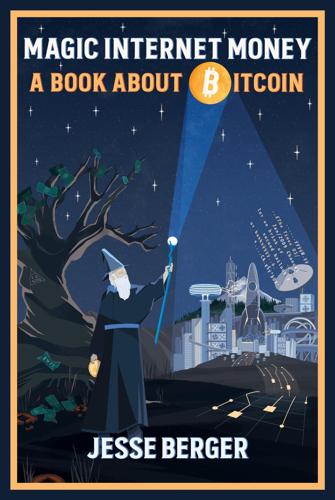
Magic Internet Money: A Book About Bitcoin
by
Jesse Berger
Published 14 Sep 2020
Considered in isolation, this perspective discounts the social gains of a Bitcoin-based monetary system, not to mention the impetus for miners to generate energy efficiencies and the complexity of the broader energy landscape. Consider for a moment the phones, tablets, and other devices that we’ve become addicted to for constant communication and entertainment. Their planned obsolescence is insidiously wasteful, and they consume enormous amounts of energy, which is far more frivolous than Bitcoin. For instance, the most popular music video of 2019 used as much energy as 40,000 US households after hitting a record of 5 billion views on YouTube.30 Meanwhile, the data centers that store and share those videos consumed 2% of worldwide electricity, and their appetite is expected to grow at least four-fold over the coming decade.

24/7: Late Capitalism and the Ends of Sleep
by
Jonathan Crary
Published 3 Jun 2013
Certainly, for much of the twentieth century, the organization of consumer societies was never unconnected with forms of social regulation and subjection, but now the management of economic behavior is synonymous with the formation and perpetuation of malleable and assenting individuals. An older logic of planned obsolescence continues to operate, propelling the demand for replacement or enhancement. However, even if the dynamic behind product innovation is still linked to the rate of profit or to corporate competition for sector dominance, the heightened tempo of “improved” or reconfigured systems, models, and platforms is a crucial part of the remaking of a subject and of the intensification of control.
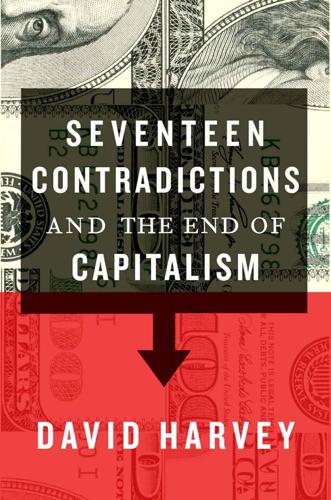
Seventeen Contradictions and the End of Capitalism
by
David Harvey
Published 3 Apr 2014
The producer has a vested interest in securing and accelerating the turnover time of consumption. One of the ways to do that is to produce steel that rusts so fast that it needs rapid replacement. Diminishing the turnover time of consumption is much easier, however, in the case of cellphones and electronic devices. Planned obsolescence, innovation, shifting fashion and the like become deeply rooted in capitalist culture. All sorts of strategies and short cuts emerge as capital desperately seeks to transcend or bypass the barriers to circulation and to smooth out and speed up its turnover time. Producers, for example, may not want to wait to sell their commodities.
…
283 Maddison, Angus 227 Maghreb 174 Malcolm X 291 Maldives 260 Malthus, Thomas 229–30, 232–3, 244, 246, 251 Manchester 149, 159 Manhattan Institute 143 Mansion House, London 201 manufacturing 104, 239 Mao Zedong 291 maquilas 129, 174 Marcuse, Herbert 204, 289 market cornering 53 market economy 198, 205, 276 marketisation 243 Marshall Plan 153 Martin, Randy 194 Marx, Karl 106, 118, 122, 142, 207, 211 and alienation 125, 126, 213 in the British Museum library 4 on capital 220 conception of wealth 214 on the credit system 239 and deskilling 119 on equal rights 64 and falling profits 107 and fetishism 4 on freedom 207, 208, 213 and greed 33 ‘industrial reserve army’ 79–80 and isolation of workers 125 labour theory of value 109 and monetary system reforms 36 monopoly power and competition 135 reality and appearance 4, 5 as a revolutionary humanist 221 and social reproduction 182 and socialist utopian literature 184 and technological innovation 103 and theorists of the political left 54 and the ‘totally developed individual’ 126–7 and world crises xiii; Capital 57, 79–80, 81, 82, 119, 129, 132, 269, 286, 291–2 The Economic and Philosophic Manuscripts of 1844 269, 286 Grundrisse 97, 212–13 Theories of Surplus Value 1 Marxism contradiction between productive forces and social relations 269 ‘death of Marxism’ xii; ecologically sensitive 263 and humanism 284, 286, 287 ‘profit squeeze’ theory of crisis formation 65 traditional Marxist conception of socialism/ communism 91 Marxists 65, 109 MasterCard Priceless 275 Mau Mau movement 291 Melbourne 141 merchants 67 and industrial capital 179 price-gouging customers 54 and producers 74–5 Mercosur 159 Mexican migrants 115, 175, 195–6 Mexico 123, 129, 174 Mexico City riots (1968) x microcredit 194, 198 microfinance 186, 194, 198, 211 Microsoft 131 Middle East 124, 230 Milanovic, Branko 170 military, the capacities and powers 4 dominance 110 and technology 93, 95 ‘military-industrial complex’ 157 mind-brain duality 70 mining 94, 113, 123, 148, 239, 257 MIT (Massachusetts Institute of Technology) 292 Mitchell, David: Cloud Atlas 264 Mitchell, Timothy 122 Modern Times (film) 103 Mondragon 180 monetarism xi monetary wealth and incomes, inequalities in (1920s) x 1071 monetisation 44, 55, 60, 61, 62, 115, 192–3, 198, 235, 243, 250, 253, 261, 262 money abandonment of metallic basis of global moneys 30, 37, 109 circulation of 15, 25, 30–31, 35 coinage 15, 27, 29, 30 commodification of 57 commodity moneys 27–31 creation of 30, 51, 173, 233, 238–9, 240 credit moneys 28, 30, 31, 152 cyber moneys 36, 109–10 electronic moneys 27, 29, 35, 36, 100 and exchange value 28, 35, 38 fiat 8, 27, 30, 40, 109, 233 gap between money and the value it represents 27 global monetary system 46–7 love of money as a possession 34 measures value 25, 28 a moneyless economy 36 oxidisation of 35 paper 15, 27, 29, 30, 31, 37, 40, 45 power of 25, 36, 59, 60, 62, 65–66, 131–6, 245, 266 quasi-money 35 relation between money and value 27, 35 represented as numbers 29–30 and social labour 25, 27, 31, 42, 55, 88, 243 and the state 45–6, 51, 173 storage of value 25, 26, 35 the US dollar 46–7 use value 28 money capital 28, 32, 59, 74, 142, 147, 158, 177, 178 money laundering 54, 109 ‘money of account’ 27–8, 30 monopolisation 53, 145 monopoly, monopolies 77 and competition 131–45, 218, 295 corporate 123 monetary system 45, 46, 48, 51 monopoly power 45, 46, 51, 93, 117, 120, 132, 133–4, 136, 137, 139, 141, 142–3 monopoly pricing 72, 132 natural 118, 132 of state over legitimate use of force and violence 42, 44, 45, 51, 88, 155, 173 see also prices, monopoly monopsony 131 Monsanto 123 Montreal Protocol 254, 259 ‘moral restraints’ 229, 233 mortgages 19, 21, 28, 32, 54, 67, 82, 239 multiculturalism 166 Mumbai 155, 159 Murdoch, Rupert xi Myrdal, Gunnar 150 N NAFTA 159 name branding 31, 139 nano-trading 243 Nation of Islam 291 national debt 45, 226, 227 National Health Service 115 National Labor Relations Board 120 National Security Administration 136 nationalisation 50 nationalism 7, 8, 44, 289 natural resources 58, 59, 123, 240, 241, 244, 246, 251 nature 56 alienation from 263 capital’s conception of 252 capital’s relation to 246–63 commodification of 59 domination of 247, 272 Heidegger on 59, 250 Polanyi on 58 power over 198 process-thing duality 73 and technology 92, 97, 99, 102 Nazis 151 neoclassical economists 109 neocolonialism 143, 201 neoliberal era 128 neoliberal ethic 277 neoliberalisation x, 48 neoliberalism xiii, 68, 72, 128, 134, 136, 176, 191, 234, 281 capitalism 266 consensus 23 counter-revolution 82, 129, 159, 165 political programme 199 politics 57 privatisation 235 remedies xi Nevada, housing in 77 ‘new economy’ (1990s) 144 New York City 141, 150 creativity 245 domestic labour in 196 income inequality 164 rental markets 22 social reproduction 195 Newton, Isaac 70 NGOs (non-governmental organisations) 189, 210, 284, 286, 287 Nike 31 Nkrumah, Kwame 291 ‘non-coincidence of interests’ 25 Nordic countries 165 North America deindustrialisation in 234 food grain exports 148 indigenous population and property rights 39 women in labour force 230 ‘not in my back yard’ politics 20 nuclear weapons 101 Nyere, Julius 291 O Obama, Barack 167 occupational safety and health 72 Occupy movement 280, 292 Ohlin Foundation 143 oil cartel 252 companies 77, 131 ‘Seven Sisters’ 131 embargo (1973) 124 ‘peak oil’ 251–2, 260 resources 123, 240, 257 oligarchy, oligarchs 34, 143, 165, 221, 223, 242, 245, 264, 286, 292 oligopoly 131, 136, 138 Olympic Games 237–8 oppositional movements 14, 162, 266–7 oppression 193, 266, 288, 297 Orwell, George 213 Nineteen Eighty-Four 202 overaccumulation 154 overheating 228 Owen, Robert 18, 184 Oxfam xi, 169–70 P Paine, Tom: Rights of Man 285 Paris 160 riots (1968) x patents 139, 245, 251 paternalism 165, 209 patriarchy 7 Paulson, Hank 47 pauperisation 104 Peabody, George 18 peasantry ix, 7, 107, 117, 174, 190, 193 revolts 202 pensions 134, 165, 230 rights 58, 67–8, 84, 134 people of colour: disposable populations 111 Pereire, Emile 239 pesticides 255, 258 pharmaceuticals 95, 121, 123, 136, 139 Philanthropic Colonialism 211 philanthropy 18, 128, 189, 190, 210–11, 245, 285 Philippines 115, 196 Picasso, Pablo 140–41, 187, 240 Pinochet, Augusto x Pittsburgh 150, 159, 258 planned obsolescence 74 plutocracy xi, xii, 91, 170, 173, 177, 180 Poland 152 Polanyi, Karl 56, 58, 60, 205–7, 210, 261 The Great Transformation 56–7 police 134 brutality 266 capacities and powers 43 powers xiii, 43, 52 repression 264, 280 surveillance and violence 264 violence 266, 280 police-state 203, 220 political economy xiv, 54, 58, 89, 97, 179–80, 182, 201, 206–9 liberal 204, 206, 209 political parties, incapable of mounting opposition to the power of capital xii political representation 183 pollutants 8, 246, 255 pollution 43, 57, 59, 60, 150, 250, 254, 255, 258 Pontecorvo, Gillo 288 Ponzi schemes 21, 53, 54, 243 population ageing 223, 230 disposable 108, 111, 231, 264 growth 107–8, 229, 230–31, 242, 246 Malthus’s principle 229–30 Portugal 161 post-structuralism xiii potlatch system 33 pounds sterling 46 poverty 229 anti-poverty organisations 286–7 and bourgeois reformism 167 and capital 176 chronic 286 eradication of 211 escape from 170 feminisation of 114 grants 107 and industrialisation 123 and population expansion 229 and unemployment 170, 176 US political movement denies assistance to the poor 292–3 and wealth 146, 168, 177, 218, 219, 243 world xi, 170 power accumulation of 33, 35 of capital xii, 36 class 55, 61, 88, 89, 97, 99, 110, 134, 135, 221, 279 computer 105 and currencies 46 economic 142, 143, 144 global 34, 170 the house as a sign of 15–16 of labour see under labour; of merchants 75 military 143 and money 25, 33, 36, 49, 59, 60, 62, 63, 65–6, 245, 266 monopoly see monopoly power; oligarchic 292 political 62, 143, 144, 162, 171, 219, 292 purchasing 105, 107 social 33, 35, 55, 62, 64, 294 state 42–5, 47–52, 72, 142, 155–9, 164, 209, 295 predation, predators 53, 54, 61, 67, 77, 84, 101, 109, 111, 133, 162, 198, 212, 254–5 price fixing 53, 118, 132 price gouging 132 Price, Richard 226, 227, 229 prices discount 133 equilibrium in 118 extortionate 84 food 244, 251 housing 21, 32, 77 land 77, 78, 150 low 132 market 31, 32 and marketplace anarchy 118 monopoly 31, 72, 139, 141 oil 251, 252 property 77, 78, 141, 150 supermarket 6 and value 31, 55–6 private equity firms 101, 162 private equity funds 22, 162 private property and the commons 41, 50, 57 and eradication of usufructuary rights 41 and individual appropriation 38 and monopoly power 134–5, 137 social bond between human rights and private property 39–40 and the state 47, 50, 58, 59, 146, 210 private property rights 38–42, 44, 58, 204, 252 and collective management 50 conferring the right to trade away that which is owned 39 decentralised 44 exclusionary permanent ownership rights 39 and externality effects 44 held in perpetuity 40 intellectual property rights 41 microenterprises endowed with 211 modification or abolition of the regime 14 and nature 250 over commodities and money 38 and state power 40–41, 42–3 underpinning home ownership 49 usufructuary rights 39 privatisation 23, 24, 48, 59, 60, 61, 84, 185, 235, 250, 253, 261, 262, 266 product lines 92, 107, 219, 236 production bourgeois 1 falling value of 107 immaterial 242 increase in volume and variety of 121 organised 2 and realisation 67, 79–85, 106, 107, 108, 173, 177, 179, 180, 221, 243 regional crises 151 workers’ dispossession of own means of 172 productivity 71, 91, 92, 93, 117, 118, 121, 125, 126, 132, 172, 173, 184, 185, 188, 220, 239 products, compared with commodities 25–6 profitability 92, 94, 98, 102, 103, 104, 106, 112, 116, 118, 125, 147, 184, 191–2, 240, 252, 253, 256, 257 profit(s) banking 54 as capital’s aim 92, 96, 232 and capital’s struggle against labour 64, 65 and competition 93 entrepreneurs 24, 104 falling 81, 107, 244 from commodity sales 71 and money capital 28 monopoly 93 rate of 79, 92 reinvestment in expansion 72 root of 63 spending of 15 and wage rates 172 proletarianisation 191 partial 175, 190, 191 ‘property bubble’ 21 property market boom (1920s) 239 growth of 50 property market crashes 1928 x, 21 1973 21 2008 21–2, 54, 241 property rights 39, 41, 93, 135 see also intellectual property rights; private property property values 78, 85, 234 ‘prosumers’ 237 Proudhon, Pierre-Joseph 183 Prozac 248 public goods 38 public utilities 23, 60, 118, 132 Q quantitative easing 30, 233 R R&D ix race 68, 116, 165, 166, 291 racial minorities 168 racialisation 7, 8, 62, 68 racism 8 Rand, Ayn 200 raw materials 16, 17, 148, 149, 154 Reagan, Ronald x, 72 Speech at Westminster 201 Reagan revolution 165–166 realisation, and production 67, 79–85, 106, 107, 108, 173, 177, 179, 180, 221, 243 reality contradiction between reality and appearance 4–6 social 27 Reclus, Elisée 140 regional development 151 regional volatility 154 Reich, Robert 123, 188 religion 7 religious affiliation 68 religious hatreds and discriminations 8 religious minorities 168 remittances 175 rent seeking 132–3, 142 rentiers 76, 77, 78, 89, 150, 179, 180, 241, 244, 251, 260, 261, 276 rents xii, 16–19, 22, 32, 54, 67, 77, 78, 84, 123, 179, 241 monopoly 93, 135, 141, 187, 251 repression 271, 280 autocratic 130 militarised 264 police-state 203 violent 269, 280, 297 wage 158, 274 Republican Party (US) 145, 280 Republicans (US) 167, 206 res nullius doctrine 40 research and development 94, 96, 187 ‘resource curse’ 123 resource scarcity 77 revolution, Fanon’s view of 288 revolutionary movements 202, 276 Ricardo, David 122, 244, 251 right, the ideological and political assault on the left xii; response to universal alienation 281 ‘rights of man’ 40, 59, 213 Rio de Janeiro 84 risk 17, 141, 162, 219, 240 robbery 53, 57, 60, 63, 72 robotisation 103, 119, 188, 295 Rodney, Walter 291 romantic movement 261 Roosevelt, Theodore 131, 135 Four Freedoms 201 Rousseau, Jean-Jacques 213, 214 Ruhr, Germany 150 rural landscapes 160–61 Russia 154 a BRIC country 170, 228 collapse of (1989) 165 financial crisis (1998) 154, 232 indebtedness 152 local famine 124 oligarchs take natural resource wealth 165 S ‘S’ curve 225, 230–31 Saint-Simon, Claude de Rouvroy, comte de 183 sales 28, 31, 187, 236 San Francisco 150 Santiago, Chile: street battles (2006–) 185 Sao Paulo, Brazil 129, 195 savings the house as a form of saving 19, 22, 58 loss of 20, 58 private 36 protecting the value of 20 Savings and Loan Crisis (USA from 1986) 18 savings accounts 5, 6 Scandinavia 18, 85, 165 scarcity 37, 77, 200, 208, 240, 246, 260, 273 Schumpeter, Joseph 98, 276 science, and technology 95 Seattle 196 Second Empire Paris 197 Second World War x, 161, 234 Securities and Exchange Commission 120, 195 security xiii, 16, 121, 122, 165, 205, 206 economic 36, 153 food 253, 294, 296 job 273 national 157 Sen, Amartya 208–11, 281 Development as Freedom 208–9 senior citizens 168 Seoul 84 serfdom 62, 209 sexual hatreds and discriminations 8 Shanghai 153, 160 share-cropping 62 Sheffield 148, 149, 159, 258 Shenzhen, China 77 Silicon Valley 16, 143, 144, 150 silver 27–31, 33, 37, 57, 233, 238 Simon, Julian 246 Singapore 48, 123, 150, 184, 187, 203 slavery 62, 202, 206, 209, 213, 268 slums ix, 16, 175 Smith, Adam 98, 125–6, 157, 185, 201, 204 ‘invisible hand’ 141–2 The Wealth of Nations 118, 132 Smith, Neil 248 social distinction 68, 166 social inequality 34, 110, 111, 130, 171, 177, 180, 220, 223, 266 social justice 200, 266, 268, 276 social labour 53, 73, 295 alienated 64, 66, 88 and common wealth 53 creation of use values through 36 expansion of total output 232 household and communal work 296 immateriality of 37, 233 and money 25, 27, 31, 42, 55, 88, 243 productivity 239 and profit 104 and value 26, 27, 29, 104, 106, 107, 109 weakening regulatory role of 109, 110 social media 99, 136, 236–7, 278–9 social movements 162–3 social reproduction 80, 127, 182–98, 218, 219, 220, 276 social security 36, 165 social services 68 social struggles 156, 159, 165, 168 social value 26, 27, 32, 33, 55, 172, 179, 241, 244, 268, 270 socialism 215 democratic xii; ‘gas and water’ 183 socialism/communism 91, 269 socialist revolution 67 socialist totalitarianism 205 society capitalist 15, 34, 81, 243, 259 civil 92, 122, 156, 185, 189, 252 civilised 161, 167 complex 26 demolition of 56 and freedom 205–6, 210, 212 hope for a better society 218 industrial 205 information 238 market 204 post-colonial 203 pre-capitalist 55 primitive 57 radical transformation of 290 status position in 186 theocratic 62 women in 113 work-based 273 world 204 soil erosion 257 South Africa 84–5, 152, 169 apartheid 169, 202, 203 South Asia labour 108 population growth 230 software programmers and developers 115, 116 South Korea 123, 148, 150, 153 South-East Asia 107–8 crisis (1997–8) 154, 232, 241 sovereign debt crises 37 Soviet Bloc, ex-, labour in 107 Soviet Union 196, 202 see also Russia Spain xi, 51, 161 housing market crash (2007–9) 82–3 spatio-temporal fixes 151–2, 153, 154, 162 spectacle 237–8, 242, 278 speculative bubbles and busts 178 stagnation xii, 136, 161–2, 169 Stalin, Joseph 70 standard of life 23, 175 starvation 56, 124, 246, 249, 260, 265 state, the aim of 156–7 brutality 266, 280 and capital accumulation 48 and civil society 156 curbing the powers of capital as private property 47 evolution of the capitalist state 42 and externality effects 44 guardian of private property and of individual rights 42 and home ownership 49–50 interstate system 156, 157 interventionism 193, 205 legitimate use of violence 42, 44, 45, 51, 88, 155, 173 loss of state sovereignty xii; and money 1, 45–6, 51, 173 ‘nightwatchman’ role 42, 50 powers of 42–5, 47–52, 57–8, 65, 72, 142, 155–9, 209, 295 and private property 47, 50, 58, 59, 146, 210 provision of collective and public goods 42–3 a security and surveillance state xiii; social democratic states 85 war aims 44 state benefits 165 state regulatory agencies 101 state-finance nexus 44–5, 46–7, 142–3, 156, 233 state-private property nexus 88–9 steam engine, invention of the 3 steel industry 120, 121, 148, 188 steel production 73–4 Stiglitz, Joseph 132–4 stock market crash (1929) x Stockholm, protests in (2013) 171, 243 strikes 65, 103, 124 sub-prime mortgage crisis 50 suburbanisation 253 supply and demand 31, 33, 56, 106 supply chain 124 supply-side remedies xi supply-side theories 82, 176 surplus value 28, 40, 63, 73, 79–83, 172, 239 surveillance xiii, 94, 121, 122, 201, 220, 264, 280, 292 Sweden 166, 167 protests in (2013) 129, 293 Sweezy, Paul 136 swindlers, swindling 45, 53, 57, 239 ‘symbolic analysts’ 188 Syntagma Square, Athens 266, 280 T Tahrir Square, Cairo 266 Taipei, Taiwan 153 Taiwan 123, 150, 153 Taksim Square, Istanbul 266, 280 Tanzania 291 tariffs 137 taxation 40, 43, 47, 67, 84, 93–4, 106, 133, 150, 155, 157, 167, 168, 172, 190 Taylor, Frederick 119, 126 Taylorism 103 Tea Party faction 205, 280, 281, 292 technological evolution 95–6, 97, 101–2, 109 technological imperatives 98–101 technological innovation 94–5 technology changes involving different branches of state apparatus 93–4 communicative technologies 278–9 and competition 92–3 constraints inhibiting deployment 101 culture of 227, 271 definition 92, 248 and devaluation of commodities 234 environmental 248 generic technologies 94 hardware 92, 101 humanising 271 information 100, 147, 158, 177 military 93, 95 monetary 109 and nature 92, 97, 99, 102 organisational forms 92, 99, 101 and productivity 71 relation to nature 92 research and development 94 and science 95 software 92, 99, 101 a specialist field of business 94 and unemployment 80, 103 work and labour control 102–11 telephone companies 54, 67, 84, 278 Tennessee 148 Teresa, Mother 284 Thatcher, Margaret (later Baroness) x, 72, 214, 259 Thatcherism 165 theft 53, 60, 61, 63 Thelluson, Peter 226, 227 think tanks 143 ‘Third Italy’ 143 Third World debt crisis 240 Toffler, Alvin 237 tolls 137 Tönnies, Ferdinand 122, 125 tourism ix, 16, 140, 141, 187, 236 medical 139 toxic waste disposal 249–50, 257 trade networks 24 trade unions xii, 116, 148, 168, 176, 184, 274, 280 trade wars 154 transportation 23, 99, 132, 147–8, 150, 296 Treasury Departments 46, 156 TRIPS agreement 242 tropical rainforest 253 ‘trust-busting’ 131 trusts 135 Turin, Italy 150 Turkey 107, 123, 174, 232, 280, 293 Tuscany, Italy 150 Tutu, Archbishop Desmond 284 Twitter 236 U unemployment 37, 104, 258, 273 benefits 176 deliberately created 65, 174 high xii, 10, 176 insurance 175 and labour reserves 175, 231 and labour-saving technologies 173 long-term 108, 129 permanent 111 echnologically induced 80, 103, 173, 274 uneven geographical developments 178, 296 advanced and underserved regional economies 149–50 and anti-capitalist movements 162 asset bubbles 243 and capital’s reinvention of itself 147, 161 macroeconomic processes of 159 masking the true nature of capital 159–60 and technological forms 219 volatility in 244 United Fruit 136 United Kingdom income inequality in 169; see also Britain United Nations (UN) 285 United States aim of Tea Party faction 280 banking 158 Bill of Rights 284 Britain lends to (nineteenth century) 153 capital in (1990s) 154 Constitution 284 consumption level 194 global reserve currency 45–6 growth 232 hostility towards state interventions 167 House of Representatives 206 human rights abuses 202 imperial power 46 indebtedness of students in 194 Indian reservations 249 interstate highway system 239 jobless recoveries after recession 172–3 liberty and freedom rhetoric 200–201, 202 Midwest ‘rust belt’ 151 military expenditures 46 property market crashes x, 21–2, 50, 54, 58, 82–3 racial issues 166 Savings and Loan Crisis (from 1986) 18 social mobility 196 social reproduction 196–7 solidly capitalist 166 steel industry 120 ‘symbolic analysts’ 188 ‘trust-busting’ 131 unemployment 108 wealth distribution 167 welfare system 176 universal suffrage 183 urbanisation 151, 189, 228, 232, 239, 247, 254, 255, 261 Ure, Andrew 119 US Congress 47 US dollar 15, 30, 45–6 US Executive Branch 47 US Federal Reserve xi, 6, 30, 37, 46, 47, 49, 132, 143, 233 monetary policy 170–71 US Housing Act (1949) 18 US Treasury 47, 142, 240 use values collectively managed pool of 36 commodification of 243 commodities 15, 26, 35 common wealth 53 creation through social labour 36 and entrepreneurs 23–4 and exchange values 15, 35, 42, 44, 50, 60, 65, 88 and housing 14–19, 21–2, 23, 67 and human labour 26 infinitely varied 15 of infrastructural provision 78 loss of 58 marketisation of 243 monetisation of 243 of money 28 privatised and commodified 23 provision of 111 and revolt of the mass of the people 60 social demand for 81 usufructuary rights 39, 41, 59 usury 49, 53, 186, 194 utopianism 18, 35, 42, 51, 66, 119, 132, 183, 184, 204, 206–10, 269, 281, 282 V value(s) commodity 24, 25 failure to produce 40 housing 19, 20, 22 net 19 production and realisation of 82 production of 239 property 21 relation between money and value 27, 35 savings 20 storing 25, 26, 35 see also asset values; exchange values; social value; use values value added 79, 83 Veblen, Thorstein: Theory of the Leisure Class 274 Venezuela 123, 201 Vietnam, labour in 108 Vietnam War 290 violence 53, 57, 72, 204–5, 286 against children 193 against social movements 266 against women 193 colonial 289–90, 291 and contemporary capitalism 8 culture of 271 of dispossession 58, 59 in a dystopian world 264 and humanism 286, 289, 291 of the liberation struggle 290 militarised 292 as the only option 290–91 political 280 in pursuit of liberty and freedom 201 racialised 291 state’s legitimate use of 42, 44, 45, 51, 88, 155, 173 of technology 271 and wage labour 207 virtual ecological transfer 256 Volcker, Paul 37 W wages 103 basic social wage 103 falling 80, 82 for housework 115, 192–3 low xii, 114, 116, 186, 188 lower bound to wage levels 175 non-payment of 72 and profits 172 reduction in 81, 103, 104, 135, 168, 172, 176, 178 rising 178 and unskilled labour 114 wage demands 150, 274 wage levels pushed up by labour 65 wage rates 103, 116, 172, 173 wage repression 158–9 weekly 71 see also income Wall Street criticised by a congressional committee 239–40 illegalities practised by 72, 77 and Lebed 195 new information-processing technologies 100 Wall Street Crash (1929) x, 47 Wall-E (film) 271 Walmart xii, 75, 84, 103, 131 war on terror 280 wars 8, 60, 229 currency 154 defined 44 monetisation of state war-making activities 44–5 privatisation of war making 235 resource 154, 260 and state aims 44 state financing of 32, 44, 48 and technology 93 trade 154 world 154 water privatisation 235 wave theory 70 wave-particle duality 70 wealth accumulation of 33, 34, 35, 157, 205 creation of 132–3, 142, 214 disparities of 164–81 distribution of 34, 167 extraction from non-productive activities 32 global 34 the house as a sign of 15–16 levelling up of per capita wealth 171 and poverty 146, 168, 177, 218, 219, 243 redistribution of 9, 234, 235 social 35, 53, 66, 157, 164, 210, 251, 265, 266, 268 taking it from others 132–3 see also common wealth weather futures 60 Weber, Max 122, 125 Weimar Republic 30 welfare state 165, 190, 191, 208 Wells Fargo 61 West Germany 153, 154, 161 Whitehead, Alfred North 97 Wilson, Woodrow 201 Wolf, Martin 304n2 Wollstonecraft, Mary: A Vindication of the Rights of Woman 285 women career versus family obligations 1–2 disposable populations 111 exploitation of 193 housework versus wage labour 114–15 oppression against 193 social struggle 168 trading of 62 violence against 193 in the workforce 108, 114, 115, 127, 174, 230 women’s rights 202, 218 workers’ rights 202 working classes and capital 80 consumer power 81 crushing organisation 81 education 183, 184 gentrified working-class neighbourhoods ix; housing 160 living conditions 292 wage repression and consumption 158–9 working hours 72, 104–5, 182, 272–5, 279 World Bank 16, 24, 100, 186, 245 World Trade Organization 138, 242 WPA programmes (1930s) 151 Wright, Frank Lloyd: Falling Water 16 Wriston, Walter 240 Y YouTube 236 Yugoslavia, former 174 Z Zola, Émile 7

Why We Drive: Toward a Philosophy of the Open Road
by
Matthew B. Crawford
Published 8 Jun 2020
My point is that our judgments of “responsibility” get clouded with aesthetic considerations that are in turn wrapped up with class-based forms of self-regard and virtue signaling. Zoning laws, as well as the informal norms of bourgeois environmentalism, serve to maintain social demarcations (and with them, wildly divergent property values). They also enforce the planned obsolescence that our economy is based on. People who work on old cars, whether as enthusiasts or out of necessity, are out of step with this regime. If we can unpack this conflict a bit, it may help illuminate some broader social tensions at the heart of our current politics and economy. OLD CARS AND THE LOGIC OF DISPOSSESSION In his outstanding book Junkyards, Gearheads and Rust, David N.
…
Probably not; it is a universal experience that punctuates contemporary life. The frustrations of “tech” are different from those presented by other material things, and we need to consider this as we contemplate turning the car into a “device.” The device has regular feeding times, dictated by the schedule of planned obsolescence. And what it demands is not just money and time; there is something more that is wanted. What this is, is hard to say, but let’s note the pattern: with the exception of those “early adopter” dolts who stand in line overnight for the latest release, at each of these moments of upgrade or update most of us rage against the machine, and then we submit.

The Millionaire Fastlane: Crack the Code to Wealth and Live Rich for a Lifetime
by
Mj Demarco
Published 8 Nov 2010
Doing Nothing Is Expected Ever wonder if those late-night get-rich infomercial products really work? Can you really make millions trading foreign currency or buying real estate with no money down? The truth is you can-but the purveyors of these infomercials don't tell you their real revenue model. They make money on planned obsolescence. Planned obsolescence is a marketer's expectation that whatever they're selling you, you won't use it. And if you don't use it, you are unlikely to ask for your money back. Doing nothing is expected. Human nature plays a powerful role in the business models of producers. Get-rich systems sold on TV take advantage of human nature because it is human nature to seek events and avoid process.
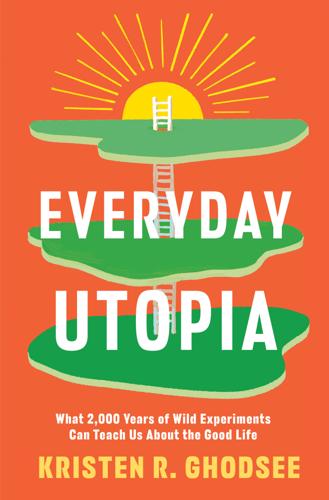
Everyday Utopia: What 2,000 Years of Wild Experiments Can Teach Us About the Good Life
by
Kristen R. Ghodsee
Published 16 May 2023
It’s harder to wrap our heads around sharing property in common or raising our children in non-nuclear families because these ways of being in the world feel unfamiliar and challenge some of our most basic assumptions about the correct way, or the “healthy” way, to organize our domestic lives. Sharing a washing machine in common with our neighbors might trigger thoughts of inconvenience before it inspires pride that one less appliance will end up in a landfill after its planned obsolescence. Raising our kids with more than one other parent might fuel fears that they won’t need us as much before it fills us with confidence that our children will ultimately benefit from growing up basked in the affections of multiple caring adults. Utopias by their definition are either a “good place” or a “no place,” and what matters most is taking the journey and considering the kinds of changes that might make our domestic lives less isolated, more flexible, and more ecologically sustainable: things like universal childcare, cooperative living, ethical education for self-reliance and critical thinking, shared property, and family expansionism.
…
It does mean that the ways we mark ourselves as different and interesting will be decoupled from how much those markers increase our value on competitive labor or marriage markets. Personal branding will be a thing of the past. Our tastes and passions will be shaped by what we truly love and not by what we think will look good on a college application, résumé, or LinkedIn page. By undermining the wasteful planned obsolescence that underpins competitive acquisitiveness, we can reduce the environmental impacts of our materialistic lifestyles. This doesn’t necessarily mean that we will enjoy access to less stuff, it just means that stuff will be useful to a wider network of people rather than sitting unused in our closets, basements, attics, and garages.
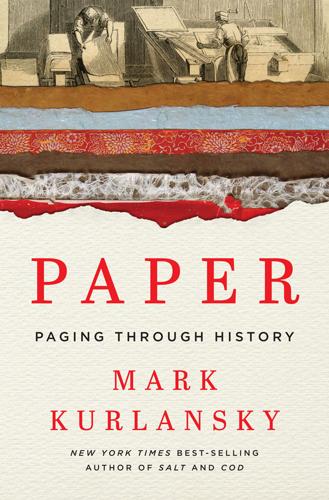
Paper: A World History
by
Mark Kurlansky
Published 3 Apr 2016
Today’s ideas, facilitated by the inventions of the Industrial Revolution, are taking as long to lead to new inventions as did the ideas of the Industrial Revolution. One of the reasons why we believe otherwise, why we imagine our times to be moving so swiftly, is that we live in an age of marketing. Electronic devices are built with planned obsolescence; that is, they are deliberately built not to last, so that everyone will have to buy another one soon. Every year new devices, only slightly different from the models that came before, come on the market and we are told that they are major new technological innovations. A similar technique was used to sell automobiles in the 1950s, before the laws of aerodynamics and fuel economy were widely understood.
…
A., 261 Milton, Mass., 213–14 Ming dynasty, 296, 300, 302, 303 Minoans, as possible inventors of moveable type, 109–10 Miró, Joan, 268 mitsumata, 309, 312 Moche, 4 molds, 33, 187–88, 221–22, 301, 302, 308–9, 311, 312, 317 wire, 72, 80–81, 83, 228 Moll Flanders (Defoe), 196 monasteries, 93–94 money, paper, see paper money Mongolia, Mongols, 27, 65, 87 Moniteur, 233 Monmouth, Battle of (1778), 221 Monte Alegre, Brazil, 285 Montecuçoma (Montezuma), 155–57, 161 Montoya, Diego de, 160 Moon Ik-jeom, 106 Moore, Gordon, 328 Moore’s Law, 328 Moriscos, 157 Morning Chronicle, 204 Morning Post, 204 Moronobu, Hishikawa, 265–66 Morris, William, 256–57 Moses (prophet), 9 Mosher, Thomas Bird, 257–58 mosques, 60 Motolinía (Toribio de Benavente), 155, 158 moveable type, see printing, with moveable type Mozi, 26 Mubashshir ibn Fatiq, al-, 180 Muhammad (prophet), 49, 51–52, 339 Muhammad VIII, sultan of Granada, 73 Mukhtar al-hikam wa mahasin al-kalim (al-Mubashshir ibn Fatiq), 180 mulberry, 10, 11, 33, 43, 45, 88, 99, 104, 149, 161, 272, 305, 306, 309, 312 Munch, Edvard, 267 Mūsá bin Nușayr, 67 music, 70, 91–92, 196 Muslims, Islam: calligraphy of, 52, 55 spread of, 49–51 Iberia conquered by, 67–68 intellectual achievements of, xix literacy of, 52 parchment used by, 56–57 Spanish persecution of, 157–58 Sunni–Shi’a schism and, 51, 60, 74 Nabu (Assyrian god), xx Nahuatl, 153, 156 Naoke, Tange, 312 Naples, Italy, 73, 134 Napoleonic Wars, 245 Nassau, Adolf von, archbishop of Mainz, 133 Nast, Thomas, 259 National Security Agency (NSA), 334 Navigation Act of 1663, 210 navigational charts, 93 Nawbakht, 50, 58 Near East, 13 Negker, Jost de, 128 Neponset River, 208 Netherlands, see Holland; Lowlands Neuchatel, 231 Newberry, John, 202 Newcomen, Thomas, 238 New England, 206, 281 New Hampshire, 211 New Haven, Conn., 218, 277 New Iberia, La., 285 New Jersey, 211 New Rochelle, N.Y., 185, 258 Newsonomics, 331 newspapers, 262, 342 advertising and, 330–31 in American colonies, 211–13, 220, 342 cartoons in, 263 in French Revolution, 233 future of, 331–32 in Great Britian, 331, 343 growing readership of, 226, 237, 247–48 in India, 331 paper and, 202–4 photography in, 258 Stamp Act and, 217 in US, 330–31 newsprint, 252, 254, 281, 286, 289, 295 declining sales of, 330 Newton, Isaac, 194–95, 231 New York, N.Y., 209–10 New York Assembly, 220 New York colony, 210, 211, 216, New Yorker, 332–33 New York Gazette, 210 New York Public Library, 255 New York state, 281 New York Times, 330–31 New York Tribune, 247 Neyroumande, Emmanuelle, 283–84 Niaux, France, cave art in, 3 Nicolson, William, 262 Niépce, Claude, 236 Niépce, Joseph Nicéphore, 236–37, 343 Nile River, 9, 12 “Ninety-Five Theses on the Power and Efficacy of Indulgences, The” (Luther), 163 Ningbo, China, 295, 296 Nolde, Emil, 267–68 Norfolk, England, 191 nori, 313–14 North Africa, xv, 52, 74 papermaking in, 71, 73–74 North Carolina, 220 Northern Renaissance, 163 North Newington Mill, 242 Norton, Charles Eliot, 257 novels, wordless, 269–70 numerals: Aztec, 152–53 base-ten system of, 58, 86 numerals (continued) Hindu-Arabic, 58, 70, 86, 87, 89, 91 Mayan, 149 Roman, 58, 77, 84, 87, 91 Nuremberg, Germany, 83, 111, 125, 126 papermaking in, 122, 340 printing industry in, 122–23 Nuremberg Chronicle (Die Schedelsche Weltchronik) (Schedel), 123 Odyssey (Homer), 17 offset printing, 263 Ogama-Machi, Japan, 311–12 Oh Sang Youl, 306 O’Kane, Helen M., 258 okra, 250 Old Man with Noose (Kollwitz), 267 Oliver Twist (Dickens), 261 Olmecs, 148 Onderdonk, Hendrick, 210 One Thousand and One Nights, 61–62, 95, 340 Ontario, Canada, 282 Open and Empty (Wang), 315 oral literature, 20–21, 60 in China, 39 in France, 234 rhythmic nature of, 17, 335 survival of, 335–36 origami, 320–21 Ortelius, Abraham, 176 Otomi people, 160 Ottoman Empire, 50 Ovid, 172 Ozu Shoten paper museum, 307 Pacioli, Luca, 91 packaging, paper for, 334 Padua, Italy, 82 Pagenstecher, Albrecht and Rudolf, 252 Paine, Roxy, 319 Paine, Thomas, 202–3, 216–17 Pakistan, 50 Palazzo Medici, 120 pamphleteering, 202–3 pamphlets, 217, 228, 230 Panckoucke, Charles-Joseph, 233 Paoli (Pablo), Giovanni, 159–60 paper, 204, 241 acid content of, 45 acid-free, 255 advantages of, over earlier recording media, 2 in architecture, 308–9, 314–15, 322 art, machine-made, 265, 269, 280 art from, 318, 320–21 blue, 190, 199 brown, 72, 121, 169, 184, 187, 189, 190–91 bureaucracy and, 32, 44–45, 52 calculations and, 119 Chinese invention of, xiv, xviii, 23, 28–31, 178, 338, 344 colored, 42, 45, 72–73, 214, 232, 264 cost of, 80, 229–30 deckle edge, 187, 258 drawing, 197 Europeans as slow to adopt, xv, xix, 73, 77, 78, 83, 85 exploding demand for, 226 fiber, 278 for guns and ammunition, 190, 220–21, 242, 278 journalism and, 202–4 laid, 197, 269, 279–80 marbling of, 191–93 as mark of civilization, xviii–xix for packaging, 334 predicted “death” of, 326–27 printing and, see printing raw (unsized), 303 recycled, 45, 291–92, 294–95 Renaissance and, 117, 118–22 science and, 194 security of, vs. online communication, 334 shortages of, 231, 285 silk-thread, 242 specialized uses of, 34, 46–47, 57, 189–91, 199, 232, 253, 271–74 as superior medium for drawing, 118–19 as superior medium for printing, 108–9, 117 US tariffs on imports of, 224–25 white, 56, 72, 137, 140, 169, 171, 183, 184, 187, 189, 199, 232, 254, 279, 342, 343 wove, 197, 222, 264, 269, 279–80, 318 paper, forerunners of: in Mesoamerica, xiv, 148–50, 152–54, 156–57 tapa, 10–11, 149, 153–54, 337 see also papyrus; parchment paper, handmade (modern), 257–58, 269, 272, 275, 293 in China, 299–305 in Japan, 299, 305, 306–13, 314–16 in Korea, 305–6 in Spain, 316–18 in US, 318–19 paper airplanes, 273 paperboard, 191, 242 papermaking, xv–xvi with bagasse, 284–88 bleaching and, 171, 239, 288, 301, 342, 343 Buddhism and, xv, xviii, 42, 44, 49, 98, 339 continuous-roll machines for, 240–41, 242, 243–44, 245–46, 255, 276, 279–84, 288, 318, 343 controversies over, 185–86, 281, 289 drop hammers in, 80, 83 energy demands of, 289, 295 environmentalism and, 282–84, 289–92, 297, 299–300 with esparto grass, 250 felting mills and, 79 impact on artists of, 198–202 Jews and, 71 with mill sweepings, 250 molds in, 33, 72, 80–81, 83, 187–88, 221–22, 228, 301, 302, 308–9, 311, 312, 317 rags in, see rags, in papermaking with red algae, 314 Schäffer’s experiments with, 249–50 single-sheet machines in, 242–43 sizing in, 33, 83, 169 specialized, 189–91, 197–98, 199, 201–2, 277–78, 286 stampers in, 142, 169–70, 214 steam power and, 239 with straw, 250 by wasps, 248–49, 343 watermarks in, 72, 81, 83, 222, 240, 277, 280, 340 waterwheels and, 55, 80, 83 papermaking (continued) wood pulp in, see wood pulp, in papermaking see also specific countries and regions Paper Mill, 282 paper money, 88, 240, 255, 277, 278 in American colonies, 209, 211, 222, 341 in China, 34, 87, 192 counterfeiting of, 222 Franklin and, 192 watermarks of, 222 paper workers: in France, 228–29 guilds of, 96, 241, 244 industrialization and, 241, 244 life expectancy of, 96, 142 papier-mâché, 190 Papyrer, Der (Amman), 188 papyrus (plant), 9, 12 papyrus (writing surface), xvi, 9–10, 12, 56, 109, 176, 337 Arabs and, 53 export of, 11, 14, 337 parchment vs., 14 scrolls of, 10 sizing on, 11 Paradiso (Dante), 84, 115 Paramonga, Peru, 285 parchment, xvi, xx, 78, 84, 93, 97, 116, 197, 226 Arabs and, 53, 54 codex and, 14 cost of, vs. paper, 80 Dante’s use of, 84 European preference for, xv, 223 invention of, 14 in North Africa, 71 papyrus vs., 14 as poor medium for printing, 117 sacred texts and, 56 Paris, France, 83, 89–90, 141, 150 book trade in, 138–39 rue Saint-Jacques in, 139 Paris World’s Fair (1937), 268 Parliament, British, 203, 204, 244 Passionate Journey (Masereel), 269, 270 pasteboard, 189–90 Payen, Anselme, 29, 252 Peasant Alphabet (Halbein), 116 pencils, 193–94 Peng Wei, 314 Pennsylvania: Council of Public Safety in, 220 German-language newspapers in, 217 as papermaking center, 208–9, 213 Pennsylvania Gazette, 212, 215 Périgueux, 141 Pérotin, 92 Pergamum, 13–14, 338 Perry, James, 204 Persia, Persians, 50, 60–61, 168, 191 Persian Gulf, 6 Peru, 4, 10, 153, 160, 285, 337 Peter the Venerable, xiii, 73, 85 Petrarch, 93, 137 Petroski, Henry, 193 Pfister, Albrecht, 125 Phaedrus (Plato), 18–19, 335 Phaistos Disc, 109–10, 109 Philadelphia, Pa., 209, 225 Philip II, king of Spain, 172–73 Philip IV, king of Spain, 142 Phillpotts, Eden, 275–76, 280–81, 307 Philo of Byzantium, 54 Phoenician alphabet, 15–16, 338 Phoenician language, 51 Phoenicians, 4, 7, 337 phoneticism, xiv, 6–7, 9, 15 phonograms, 11 photography: invention of, 236–37, 343 in newspapers and magazines, 258 Piazza San Marco, Venice, 271 Picasso, Pablo, 128, 257, 318 printmaking by, 268–69 Pico, Giovanni, count of Mirandula, 135 pictograms, 6 pictographs, xiv, 3, 12, 336 Piedra Gloriosa o de la Estatua de Nebuchadnesar, La (Menasseh Ben Israel), 175 pine tree shilling, 211 Pisa, Italy, 82 Pissarro, Camille, 264 plague, 185 planned obsolescence, 325 Planter (ship), 206 Plantin, Christophe, 172–73, 173, 174 Platner & Smith, 252 Plato, 18–19, 110, 180, 335 playing cards, 124, 141, 213–14, 232, 261, 340 Pleistocene Age, 2 Pleyden, Wilhelm, 123 Pliny the Elder, 1, 14 Poe, Edgar Allan, 264 poetry: Andalusian, 70 in Arab culture, 61 in China, 39, 40–41 oral nature of, 335 Persian, 60–61 Pollock, Jackson, 36 pollution, from papermaking, 289–90, 297, 299–300 Polo, Marco, 88 Polyglot Bible, 172–73 Pompeii, 20 Poor Richard’s Almanack, 215 Portland, Maine, 257 Pound, Ezra, 40 Prague, 133 Preston, Cuba, 285 Prince, Edward, 257 printing, xiv, xvii, 2 Buddhism and, 99–103 Chinese invention of, 99, 107, 339 early near-misses in development of, 108 etching and, 130–31 in French Revolution, 232–35 growth of reading and, 237 impact on authors of, 196 intaglio, 131 in Korea, 104 lithographic, see lithography paper as superior medium for, 108–9, 117 Stamp Act and, 217 printing, carved-block, 134 books of, 125, 263, 269 in China, 99 in Europe, 110–11, 340 in Japan, 99–100, 339 paper and, 99 playing cards and, 124, 141 on textiles, 124 see also woodcut illustrations printing, with moveable type, xiv in American colonies, 206, 207–8, 209, 211–13, 216–17, 342 Chinese invention of, xix, 104–5, 340 Chinese writing system and, 104–5 copper-plate etching and, 173–74 in England, 179–82 European alphabet and, 113–14 in France, 134, 138–41, 165 Germany as center of, 122–23, 132–33, 162, 183, 184 Gutenberg’s experiments with, 111, 113–14, 340 handwritten manuscripts imitated by, 115–16 in Holland, 167 in Italy, 134–38, 140, 147, 340, 341 in Korea, 105, 340 in Lowlands, 171–72 Luther and, 163–65 matrices for, 227–28 in Mexico, 159–60 Minoans as possible inventors of, 109–10 popular literature and, 196 Protestant Reformation and, 162–66 rivals of Gutenberg, 114–15 in Spain, 134, 141–46 and spread of ideas, 163, 164, 165, 182, 204, 216–17, 232 spread of, 133–34 woodcuts and, 125–26, 135–36, 141, 160, 171–72, 174 printing presses, xviii, 227 American-made, 218 of iron, 238–39, 343 limited-edition books and, 257 linotype, 262 offset, 263 rotary, 239, 343 steam-powered, 239, 343 printmaking: as affordable art, 268–69 in England, 201–2 etchings, 130–31, 173–74, 176, 187, 200, 201–2, 263, 341 lithography and, 235–36, 260, 263–64 mezzotints, 174, 200, 201 nineteenth-century revival of, 263–64 in twentieth century, 268 Protestant Reformation, xvii, 182, 184, 232 printing and, 162–66 Ptolemy I, king of Egypt, 13–14 Publick Occurences Both Foreign and Domestic, 211–12, 342 Puebla, Mexico, 160 Puerto Rico, 285 Punch, 260, 343 punches, 112, 113, 133, 257 Puritans, 206–7, 211 Pynson, Richard, 182 Pyrenees, 50 qaliya al-shiwa, 64–65 Qian Fo Dong (Caves of the Thousand Buddhas), 101–2 Qin dynasty, 27 Quentell, Heinrich, 122 Quenu Newsprint Paper Company, 289 Question Concerning Technology, The (Heidegger), xx Quevedo, Francisco de, 142 Quotations from Chairman Mao Tse-tung (Máo zhxi ylù), 298–99 Qur’an, 51, 53, 55, 56–57, 59, 60, 63, 340 Racine, Jean, 227–28 Ragazzo, Giovanni, 135 ragmen, 245–46 rags, in papermaking, 55–56, 73, 83, 96, 189, 190, 209, 228, 285, 289 in American Revolution, 218, 219–20 Arabs’ use of, 49, 54, 55–56, 339 bleaching of, 239, 343 Chinese as first to use, 30, 49, 177 Franklin and, 212 growing demand for, 82, 142, 167, 183 Italian use of, 74, 77, 80, 82 pulping of, 169–70, 187 quality and, xiii, 97, 137 shortage of, in American colonies, 214 shortages of, 213, 246–48, 249 sorting of, 170–71, 170, 280 “souring” of, 171 trade in, 82, 142, 183 from uniforms of dead soldiers, 245 US imports of, 247 wood pulp vs., 251–52, 254–55 rag sorters, 280 rain forest, destruction of, 283 Raleigh, Walter, 186 “Raven, The” (Poe), 264 Ravensburg, Germany, 83 Ravensburg-Constance, 141 raw cotton, 317 reading: fear of, 238 growth of, 94–95, 237 and improvements in printing, 237 reams, 79 Réaumur, René Antoine Ferchault de, 245, 248, 342 recording, as uniquely human trait, 1–2 Recuyell of the Historyes of Troye (Lefèvre), 180 recycled paper, 250 red algae, 313–14 Redon, Odilon, 264 Red Sea, 55 Rembrandt van Rijn, 174–76, 175, 177 Remington, 261 Remington Rand, 344 Remnick, David, 332–33 Remsen, Henry, 210 Renaissance: demand for books in, 110–11 paper and, 117, 118–22 Report on Manufacturers (Hamilton), 225 Reuwich, Erhard, 126 Revelation of Saint John, The (Dürer), 127 Revere, Paul, 212, 214 Rhau-Grunenberg, Johann, 163 Rhode Island, 211 Rhône River, 139 Ribot, Théodule-Armand, 263 Richelieu, Cardinal, 184 Riessinger, Sextus, 134 Rights of Man, The (Paine), 203 Rionda, Manuel, 285 Rio Palo, 288 risma (ream), 79 Rittenhouse, Claus, 209 Rittenhouse, William, 208–9, 214, 342 River Darent, 183 Robert, Nicolas-Louis, 240–41, 279, 343 Robinson Crusoe (Defoe), 196 Robles, Francisco de, 143–44 Roderic, Visigoth king, 67–68 Roger I, count of Sicily, 78 Roger II, count of Sicily, 78 Roger of Sicily (textile printer), 124 Roman alphabet, 16 Roman Catholic Church, 182 Roman type, 182 Rome, 134 Rome, ancient, 12, 14 engineering skill of, 52, 69 fall of, 87 potters’ stamps in, 108 scribes in, 109 writing in, 19–20 Rosenbach, Johann, 141 Rosenband, Leonard N., 229 rosin paper, 191 Rouault, Georges, 257 Rouget de Lisle, Claude Joseph, 234 Rousseau, Jean-Jacques, 202, 231 Royal Academy, French, 249 Royal Navy, 238 Royal Society, 191, 194, 201, 236 Rubens, Peter Paul, 173–74 Rundi, Abi Sharif al-, 66, 74 Ruskin, John, 256 Russia, 134, 341 Rustichello of Pisa, 88 Rwandan Civil War, 314 sabots, 190 Şabūr, Iran, 59 Sachs, Hans, 188 Saga prefecture, Japan, 309 Sahagún, Father, 153 St.

Automation and the Future of Work
by
Aaron Benanav
Published 3 Nov 2020
Moreover, in a world where private investment is weak, fear that public investment could displace its private equivalent as the main driver of economic activity becomes all the stronger, since so little investment is taking place overall. It is a mistake to imagine that capitalists would ever agree to their own planned obsolescence. To challenge capitalists’ control over investment decisions, even under the guise of a New Deal–style capital-labor accord, is not a compromise. As Oskar Lange pointed out in 1938, “To retain private property and private enterprise and to force them to do things different from those required by the pursuit of maximum profit would involve a terrific amount of regimentation of investment,” upsetting “the financial structure of modern capitalist industry” and encouraging firms “to use their economic power to defy the government authorities (for instance, by closing their plants, withdrawing investment, or other kinds of sabotage).”21 Facing potential insubordination from powerful actors, radical Keynesians would need to threaten firms with full socialization.
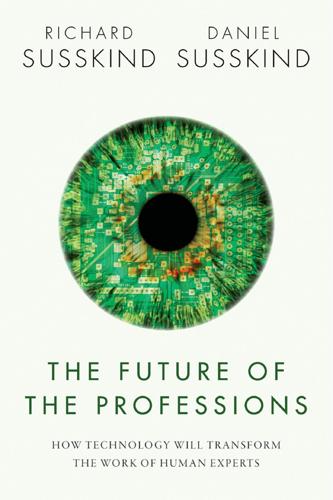
The Future of the Professions: How Technology Will Transform the Work of Human Experts
by
Richard Susskind
and
Daniel Susskind
Published 24 Aug 2015
<http://www.coursesmart.com> and <https://www.classdojo.com>. 87 ‘Feedback’, ‘individualization’, and ‘prediction’ are the three possibilities for Big Data in education, set out in Viktor Mayer-Schönberger and Kenneth Cukier, Learning with Big Data: The Future of Education (2014). 88 <http://www.wikipedia.org> (accessed 7 March 2015). 89 The Directory of Open Access Journals, <http://doaj.org> (accessed 7 March 2015). Peer review is itself being challenged, for example, by Kathleen Fitzpatrick, Planned Obsolescence: Publishing, Technology, and the Future of the Academy (2011), and others who argue for more open ‘peer-to-peer review’ by larger, online communities of scholars. 90 Susannah Locke, ‘The Gates Foundation pushes to make more academic research free and open to the public’, Vox, 24 Nov. 2014 <http://www.vox.com> (accessed 7 March 2015). 91 ‘Faculty Advisory Council Memorandum on Journal Pricing’, Harvard University Library, 17 Apr. 2012 <http://isites.harvard.edu/icb/icb.do?
…
Financial Reporting Council, ‘Key Facts and Trends in the Accountancy Profession’, Financial Reporting Council, June 2014 <https://www.frc.org.uk/Our-Work/Publications/FRC-Board/Key-Facts-and-Trends-in-the-Accountancy-Profession.pdf> (accessed 8 March 2015). Finley, Klint, ‘Was Eric Schmidt Wrong About the Historical Scale of the Internet?’ <http://readwrite.com/2011/02/07/are-we-really-creating-as-much> (accessed 23 March 2015). Fish, Stanley, Doing What Comes Naturally (Oxford: Oxford University Press, 1989). Fitzpatrick, Kathleen, Planned Obsolescence (New York: New York University Press, 2011). Floridi, Luciano, The Philosophy of Information, paperback edn. (Oxford: Oxford University Press, 2013). Floridi, Luciano, The Fourth Revolution (Oxford: Oxford University Press, 2014). Food and Drug Administration, ‘Mobile Medical Applications’, 6 Apr. 2014 <http://www.fda.gov/MedicalDevices/ProductsandMedicalProcedures/ConnectedHealth/MobileMedicalApplications/ucm255978.htm> (accessed 6 March 2015).
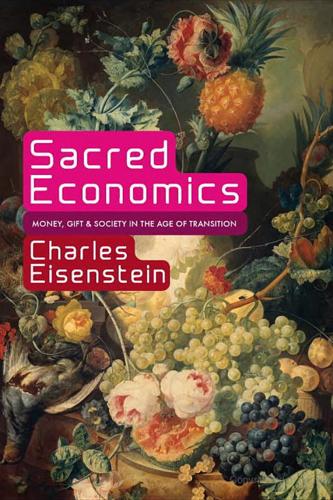
Sacred Economics: Money, Gift, and Society in the Age of Transition
by
Charles Eisenstein
Published 11 Jul 2011
With a few hours’ work a week, a typical suburban garden plot of perhaps a thousand square feet can meet most of a family’s vegetable needs; double that and it can provide substantial amounts of staples too, like potatoes, sweet potatoes, and squash. Is the vast transcontinental trucking system that brings California lettuce and carrots to the rest of the country really necessary? Does it enhance life in any way? Another type of waste comes from the shoddy construction and planned obsolescence of many of our manufactured goods. Presently there are few economic incentives, and some disincentives, to produce goods that last a long time and are easy to fix, with the absurd result that it is often cheaper to buy a new appliance than to repair an old one. This is ultimately a consequence of our money system, and it will be reversed in a sacred economy.
…
Goods would become more expensive in comparison to services, providing an economic incentive for repairing, reusing, and recycling. Gone would be the skewed economics that makes it cheaper to buy a new television set than repair an old one. Gone would be the present financial incentive for planned obsolescence. A new business model (emerging already in some industries) would blossom: extremely durable, easily repairable machines that are leased rather than sold to consumers. It was only two generations ago that appliances as humble as a toaster would be taken to repair shops. Even shoes and clothes were mended.

Design of Business: Why Design Thinking Is the Next Competitive Advantage
by
Roger L. Martin
Published 15 Feb 2009
That “like it or not” is the tip-off that De Pree was speaking as someone who had had his share of conflicts with his indispensable but demanding designers. The design-friendly culture that the De Prees championed never did take hold across the American corporate landscape. In that 1965 speech, De Pree offered this scathing assessment: “American industrial programs of planned obsolescence have set up an industrial complex geared to producing waste, and a society trained to accept it.” His vision of an industrial landscape littered with drab, uninspiring products foreshadowed the consumer-apocalypse wasteland depicted in Pixar’s Wall-E. The De Pree design model worked for Herman Miller, thanks to the commitment of the De Pree family.

Collaborative Futures
by
Mike Linksvayer
,
Michael Mandiberg
and
Mushon Zer-Aviv
Published 24 Aug 2010
These a ributes must be questioned as goods in and of themselves. It is true that digital media needs to move, to be updated, to stay relevant —but we should pause to critically reflect on why this is necessarily the case. A er all, hardware and so ware manufacturers, using the principles of “planned obsolescence” push consumers to buy new, supposedly improved devices every season. Or worse, they design them to malfunction, forcing consumers to purchase replacements, as Giles Sade's Made To Break: Technology and Obsolescence in America makes fascinatingly clear. This mindset was humorously visible early one morning as two of us walked passed an Apple Store in New York City on the way to work on this text.

Team Human
by
Douglas Rushkoff
Published 22 Jan 2019
If we go the enhancement route, we must accept that whatever it means to be human is itself a moving target. We must also believe that the companies providing us with these upgrades will be our trustworthy partners—that they wouldn’t remotely modify equipment we’ve installed into ourselves, or change the terms of service, or engineer incompatibility with other companies’ enhancements or planned obsolescence. Given the track record of today’s tech companies, that’s not a good bet. Plus, once we accept that every new technology has a set of values that goes along with it, we understand that we can’t incorporate something into ourselves without installing its affordances as well. In the current environment, that means implanting extractive, growth-based capitalism into our bloodstreams and nervous systems.
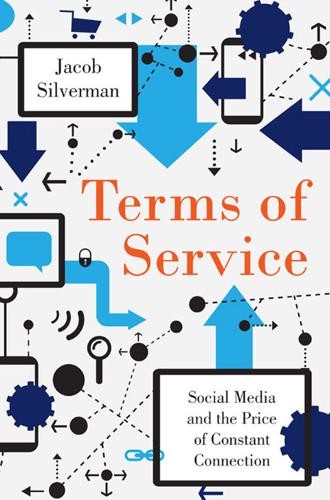
Terms of Service: Social Media and the Price of Constant Connection
by
Jacob Silverman
Published 17 Mar 2015
See cell phones; smartphones photographs blurring faces in, 357 capturing and possessing the moment, 57–58 false avatars, 350–51 filters for disguising people in, 358 of goods in grocery stores, 228–29 and Google, 309–10 as invasion of privacy, 288, 289–90 as means of consumption, 55–60 mugshots, 207–9, 210–11, 213–14, 217 of nudes, 28–29, 76 purpose of, 48–49, 55–56 tagging, 8, 291–93 triage by fractional workers, 230–31, 244 Pick the Perp game, 214 Pinterest, photos of consumer products on, 59 planned obsolescence, 266n Plan UK, 299 PleaseRobMe Web site, 140 politicians and social media, 149 Poole, Christopher, 162 pornography and Tumblr, 28–29 positive sentiments and sharing, 24–26, 27, 203–4, 305 power and banning anonymity, 179 corporate power and government power, 283 and cyber-libertarianism, xiv and influence scores, 195, 196, 197 information as, 322 and surveillance, 139 and visibility, 200 predictions for the future Ballard, 21 Big Data, 329–32 rateocracy, 191–92 Schmidt, ix predictive analytics, 216–17, 309 preliterate societies, 62–63 Premise, 228 presidential press conferences, 105 pricing and individual data, 318 privacy overview, 284–86 and Big Data, 316 as commodity, 283 and context collapse, 290–92 as cost of free service, 281–82 EU and European privacy protections, xiii, 275 evolving standards, 286–88 and Facebook, 281, 286, 287, 291–95 Google’s privacy policy across products, 18, 311–12 historical roots, 288–90 and identity, 156–57 Internet tracking, 295–98 invasion of privacy, 279–80 as legal right, 283–84 Massachusetts’s privacy legislation, 365–66 and messaging apps, 156 moral arguments for, 217, 312, 324 networked privacy model, 291–92 paying for, 282, 315 privacy of thought, 12–13, 376n protection for, 275–77, 282, 289, 315 reconstructing, 310–12 search and social functions combined, 14 social value of, 286 systematic disrespect for, 309–10 and tagging photographs, 291–93 tech companies’ view of, 285, 286–87 and Zuckerberg’s Law, 288 See also facial recognition; identity obfuscation; targeting individuals Privacy in Context (Nissenbaum), 284 Private Eye, The (Vaughan), 355–56 professional critics replaced by reviewers, 189 prosthetic masks, 357 prosumption, 270–73 pseudo-events, 104 pseudonyms, 175–78.
…
There smugglers dominate the trade, often forcing dispossessed minority groups, as well as children, to work in dangerous, illegal mines. While this situation might seem distant from the swift trade in personal data practiced by Google and Facebook, it would be irresponsible not to make these connections. Similarly, when technology companies such as Apple practice planned obsolescence, churning out newer and slightly better versions of their devices once or twice a year, they—and their enablers in the gadget-hungry tech press—are encouraging the perpetuation of these abusive labor practices. They are also ensuring the proliferation of even more e-waste—piles of electronic gadgets and junk, laden with toxic chemicals and metals, that accumulate in dumps in West Africa, India, and China, where scavengers dig through them for scraps to sell.
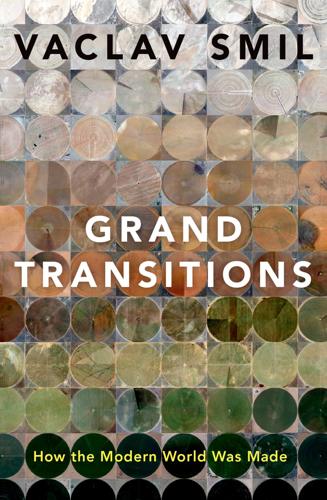
Grand Transitions: How the Modern World Was Made
by
Vaclav Smil
Published 2 Mar 2021
See information and communication Communist regimes, 154, 252–53 commuting (work-related travel), 63, 195–96 compact fluorescent lights, 140 complexifying minimalization, 295 concrete production, 189 Congo arable land, 266–67 children, desired number of, 32 Conley, D., 40 conservation areas, extent of, 221–22 construction materials, availability of, 222 consumer electronics, planned obsolescence of, 204 consumerism and consumer societies, 138, 188–93, 196, 252 continental vegetation, biomass of, 237 contraception. See fertility rates Cook, Thomas, 196 cooking oil, 96–97 copper smelting, 207 coral bleaching, 242–43 corn, 74, 82, 96, 233, 261 Cox, W., 210 Crafts, Nicholas, 158, 160 cropland and pastures, 214–17 crops.
…
See cars pastures and cropland, 214–17 peat, as energy source, 115 per capita incomes, 11–12 peroxyacetyl nitrate (PAN), 229–30 Perrot, M., 191–92 personal computers, 198 personal interactions, decline in, 204 personal mobile devices, 198, 203–4 Peru inequalities, 66 primary forests, 212 Peters, W., 293 pharmaceuticals in wastewater, 230 Philippines, pollution from plastics, 232 Phoenicians, 187 phosphorus phosphate rock, 248f phosphorus cycle, anthropogenic changes to, 233, 234–35 phosphorus fertilizers, 79 photochemical smog, 207, 229–30 photosynthesis, 293 photovoltaic (PV) cells, 134–35, 274–75 pigs and pork, 84, 85, 86, 92, 93 Piketty, Thomas, 254–55 Pimm, S. L., 255–56 Pinker, Steven, 253–54, 255–56, 258 planned obsolescence, 204 plastics, 230, 231–33, 247, 248f, 287–88 plate-glass production, 189 Plexiglass, 231–32 Poland double-cropping, 215 fertility rates, 38 mechanized field farming, transition to, 127 pigs, numbers of, 84 population declines, 265 polio vaccination, 47 pollution. See also environmental damage/degradation cities as generators of, 58 environmental pollution, 222, 228–30 indoor pollution, 114 light pollution, 225–26 plastics and synthetic materials, 13–14, 230, 231–33, 287–88 polyethylene and polyethylene films, 111, 231–32 polysterene, 231–32 polyvinylchloride, 231–32 Pomeranz, K., 2–3, 155, 191 Poor Law Act (England, 1601), 41 populations (demographics), transitions in, 25–69 aging societies, 51–53 consequences of, 42–46 explanations of, 39–42 fertility rates, 31–34 food and, possible future transitions, 263–71 future possibilities of, 263–66 global growth of, 245–46, 259–60 international migration and, 266 introduction to, 7–9, 25–30, 26f, 31–34 lifespan, 47–50 markers of, 152–53 megacities, 66–69 migrations and urbanization, 57–69 national differences in timing of, 16 population declines, 8, 34, 53–56, 54f population growth rates, 8, 27–28, 28f, 43–44 possible future transitions, 263–71 second demographic transition, 37 stages of, 26f, 34–39 urbanization, consequences of, 63–66 urbanization, pace of, 58–62 Portugal energy intensity, 150 fertility rates, 38 meat supply, 92 obesity in, 106 Poschke, M., 171 potassium fertilizers, 79 poultry, 92–93 PPP (purchasing power parities), 161 premodern world anthropogenic environmental impacts, 205–7 characteristics, 1–3 city growth, 57 diets, 86–87 economic growth in, lack of, 155–56 environmental pollution, 228 everyday goods, improvements in, 191 fertility rates, 7–8 fertility span, 32 legume consumption, 90 material abundance, 187 menarche, average age of, 31–32 mortality rates, 8, 27 prime movers, 125 water usage, 190 prime movers, 125–33.
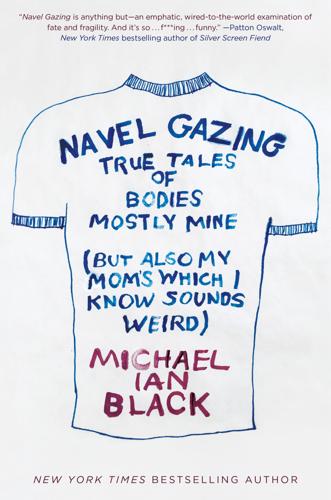
Navel Gazing: True Tales of Bodies, Mostly Mine (But Also My Mom's, Which I Know Sounds Weird)
by
Michael Ian Black
Published 5 Jan 2016
They suffer pain. They runneth over with fluids. Bodies demand recharging, not once in a while, but every single night. Moreover, they are prone to disruption and disrepair. Every body inevitably fails, as my mother’s is slowly doing fifteen hundred miles to the south. They are the very definition of planned obsolescence. Bodies are simply not designed for today’s go-go lifestyle. But what to do about it? How do we wring more usefulness out of these tetchy flesh bags? There is a doctor in Italy who claims he can transplant human heads. His method for doing so is a disarmingly simple three-step process: 1.
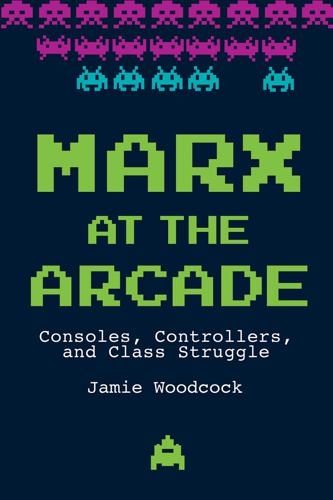
Marx at the Arcade: Consoles, Controllers, and Class Struggle
by
Jamie Woodcock
Published 17 Jun 2019
The political games made by Paolo Pedercini and published on the website Molleindustria are a good example. His Phone Story is pitched as “an educational game about the dark side of your favorite smart phone. Follow your phone’s journey around the world and fight the market forces in a spiral of planned obsolescence.”13 Designed for smartphone devices, the game “attempts to provoke a critical reflection on its own technological platform.” It is based around four mini-games, each covering a part of the supply chain, from coltan mining in the Congo, factory workers in China, e-waste in Pakistan, and consumerism in the Global North.
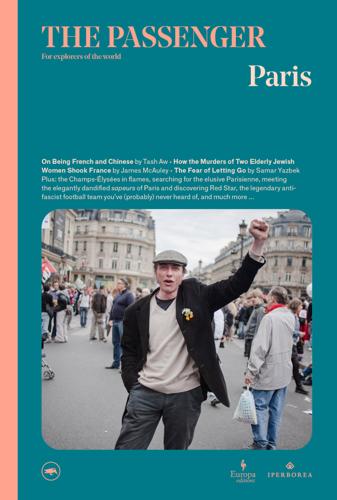
The Passenger: Paris
by
AA.VV.
Published 26 Jun 2021
They want to abolish the current tax structure by proposing the cancellation of tax rises and the reinstatement of the wealth tax, while also protesting against socially regressive indirect taxes. They challenge many lethal aberrations that are damaging to the environment, from the huge amounts of plastic waste from useless gadgets to planned obsolescence. What is emerging is clearly a blueprint for a fairer, more supportive society. ‘Minister, are you planning to destroy the Champs-Élysées?’ begins the letter addressed by the member of parliament for the France Insoumise (‘France Unbowed’) party, François Ruffin, to the minister for culture, Franck Riester.

Of a Fire on the Moon
by
Norman Mailer
Published 2 Jun 2014
If patriotism is the ability to improve a nation’s morale, then Von Braun was a patriot. It was plain that some of these corporation executives loved him. In fact, they revered him. He was the high priest of their precise art—manufacture. If many too many an American product was accelerating into shoddy these years since the war, if planned obsolescence had often become a euphemism for sloppy workmanship, cynical cost-cutting, swollen advertising budgets, inefficiency and general indifference, then in one place at least, and for certain, America could be proud of a product. It was high as a castle and tooled more finely than an exquisite watch.
…
When they mouthed their portions of rhetoric, when they spoke, lo! their mouths poured forth cement—when they talked about poverty and how poverty could be solved by the same methods and discipline and effort devoted to space, he would have liked to say to them: Solve your food vendors first! Solve your shoddy appliances first! your planned obsolescences!—then you may begin to think of how to attack the poverty of others. He was in a fury at the complacency of their assumption that they could solve the problems of the poor. His favorite man, Lyndon Johnson, was telling Walter Cronkite on television, “There’s so much that we have yet to do—the hunger in the world, the sickness in the world.
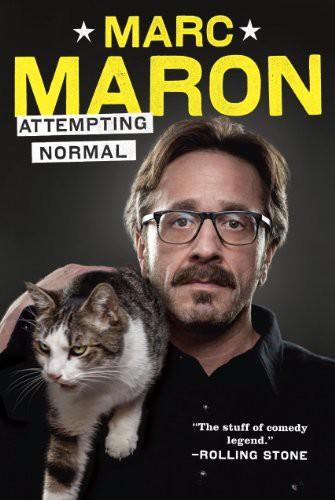
Attempting Normal
by
Marc Maron
Published 28 Apr 2013
I don’t buy Levi’s that often but when I was a kid it seemed like they were the only pants. You had your Lees, your Wranglers, and then the Calvin Klein invasion, but Levi’s represented something with integrity, something American, but American in the best way possible. Something of value that lasted. Now everything turns to garbage inside a couple of years. Planned obsolescence has forever denied us the ability to believe in workmanship, institutions, and lifetime guarantees. This is true with everything from pants to marriages. And obviously life itself. When I was a kid and my mom bought me Levi’s they were stiff and uncomfortable for weeks. Then over time and multiple washings, they’d fade the way you wanted them to and start to contour themselves to your body.
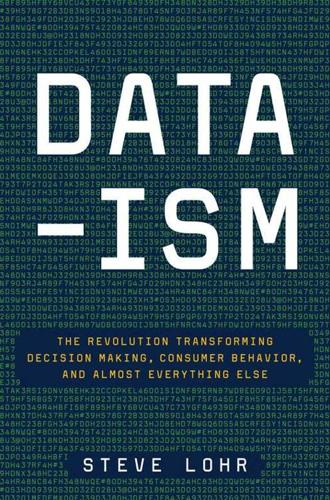
Data-Ism: The Revolution Transforming Decision Making, Consumer Behavior, and Almost Everything Else
by
Steve Lohr
Published 10 Mar 2015
That’s when the federal government started putting tax returns into the giant computers, and consumer credit bureaus began assembling databases containing the personal financial information on millions of Americans. Many people feared that the new computerized databanks would be put in the service of an intrusive corporate or government Big Brother. The author Vance Packard made a career writing deftly timed assaults on social ills like manipulative advertising (The Hidden Persuaders, 1957) and planned obsolescence (The Waste Makers, 1960). In 1964, Packard took on the threat to privacy posed by the proliferation of computerized databases of personal information and new surveillance techniques, in The Naked Society. Packard referred to such methods as “the hidden eyes of business.” The privacy scare at the dawn of the computer age “really freaked people out,” observes Daniel Weitzner, a former senior technology policy official in the Obama administration, who is director of the MIT Information Policy Project.

Extreme Money: Masters of the Universe and the Cult of Risk
by
Satyajit Das
Published 14 Oct 2011
In humorist Will Rogers’ words, advertising was “the art of convincing people to spend money they don’t have for something they don’t need.” In his three best-selling books The Hidden Persuaders (1957), The Status Seekers (1959), and The Waste Makers (1960), Vance Packard, an American journalist, highlighted the use of psychological techniques to manipulate consumers. Status and fear of loss of status was used to sell goods. Planned obsolescence increased demand for products, long before they required replacement. A toothbrush does little but clean teeth. Alcohol is important mostly for making people more or less drunk. An automobile can take one reliably to a destination and back.... There being so little to be said, much must be invented.
…
Boone, 137, 146, 149 Piëch, Ferdinand, 257 Piga, Gustavo, 224 piggyback loans, 182 PIGS (Portugal, Ireland, Greece, and Spain), 354 PIK (pay in kind) debt, 154 Pimco (Pacific Investment Management Company), 96, 285 Pingyao as a financial center, 84 Pink Floyd, 157 Pirate Capital, 254 Pires, Tome, 82 pitch books, 310 PIYC (pay if you can), 155 Pizarro, Hernán Cortés de Monroy, 131 planned obsolescence, 43 Playboy magazine, 94 plutonomy, 41-42 PO (principal only) bonds, 178 Policymakers, preparation for financial crises, 264-278 Polonius, 265 Ponzi schemes, 34 Ponzi, Charles, 33 Poor Richard’s Almanac, 93 Porsche, 55, 257-260 Porter, Cole, 41 Porter, Michael, 120 Portfolio Management Workshop, 21 Portfolio Selection, 117 portfolios risk, 117, 124.
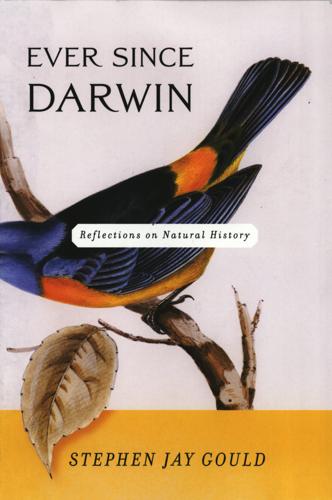
Ever Since Darwin: Reflections in Natural History
by
Stephen Jay Gould
Published 1 Jan 1977
I sat in the first row, bathed in yellow dust, as the paper cracked and crumbled every time he turned a page. It is a blessing that he never had to lecture on human evolution. New and significant prehuman fossils have been unearthed with such unrelenting frequency in recent years that the fate of any lecture notes can only be described with the watchword of a fundamentally irrational economy—planned obsolescence. Each year, when the topic comes up in my courses, I simply open my old folder and dump the contents into the nearest circular file. And here we go again. A front-page headline in the New York Times for October 31, 1975, read: “Man traced 3.75 million years by fossils found in Tanzania.” Dr.
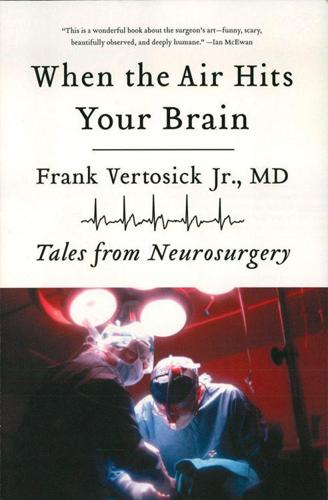
When the Air Hits Your Brain: Tales From Neurosurgery
by
Frank Vertosick
Published 1 Jan 1996
Even dementing brain illnesses, such as Alzheimer’s disease, stem from neoplastic overgrowth of brain cells called astrocytes. As our cellular society grows senescent, neoplastic behavior becomes rampant until our bodies fall, like ancient Rome, into anarchy and ruin. Ubiquitous in the elderly, neoplasia is more a form of planned obsolescence than a disease. To understand cancer’s role in evolution, we must remember that we are built to die. Just as automobiles roll off the assembly line with a predetermined lifespan, the fertilized ovum programs us to decay and perish in an immutable sequence. The long-term viability of multicellular creatures on this planet demands that each generation enjoy its finite day in the sun and then be thrown from life’s stage to make way for a new cast of players.
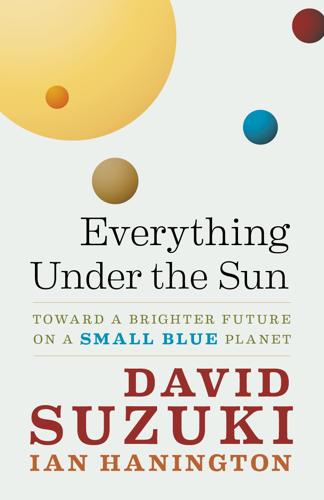
Everything Under the Sun: Toward a Brighter Future on a Small Blue Planet
by
Ian Hanington
Published 13 May 2012
Not only does it mean we send less waste to the landfill, it also means we use fewer resources and less energy—as it takes energy to produce and transport packaging and disposable items. Every day, more people, stores, and cities are finding ways to cut down on use of disposable plastic bags, but we still create a lot of unnecessary packaging and products. Planned obsolescence—the absurd practice of producing goods that won’t last so that the consumer cycle can continue—is still very much with us. We can all avoid buying products that are overpackaged or that are “disposable”—and encourage producers to be more responsible. When we consumers take the time to let stores, businesses, and governments know that we want less packaging and that we want goods that last, we will make a difference.
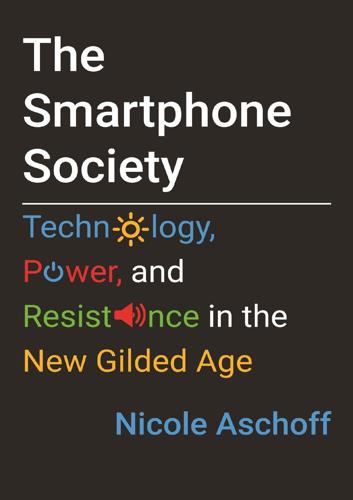
The Smartphone Society
by
Nicole Aschoff
But as environmental justice activists emphasize, our norms and behavior do need to change. Even if we switch to green energy—and we absolutely must do this—we still need to take a hard look at the global resource drain that Western consumers perpetuate. Our consumption patterns, fueled by myriad factors, from planned obsolescence and Apple’s refusal of “right to repair” to the psychological crutch of impulse shopping are not sustainable. Even as the supply chains that produce the high-tech wonders of modern capitalism become ever more hidden they are no less destructive and extractive. Poor communities, primarily in the Global South, foot the ecological bill for this despoiling.

How Much Is Enough?: Money and the Good Life
by
Robert Skidelsky
and
Edward Skidelsky
Published 18 Jun 2012
Deviations are consigned to psychiatrists. The point is that this is a happy world, one of what Marcuse calls “repressive de-sublimation,” repressive “precisely to the degree to which it promotes the satisfaction of needs which require continuing the rat race of catching up with one’s peers and with planned obsolescence …”52 Liberation is no longer sought, because it has been delivered in beautiful gift wrappings. War goes on but only “outside”—in underdeveloped countries. In the world of happy consciousness, the social basis for change has disappeared. The working class has become a prop of the established order; absolute refusal is “politically impotent.”
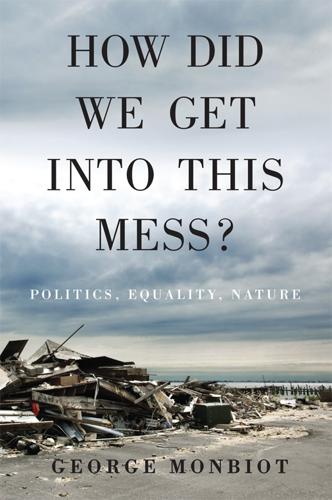
How Did We Get Into This Mess?: Politics, Equality, Nature
by
George Monbiot
Published 14 Apr 2016
For thirty seconds of dubious entertainment, or a hedonic stimulus that lasts no longer than a nicotine hit, we commission the use of materials whose impacts will ramify for generations. Researching her film The Story of Stuff, Annie Leonard discovered that of the materials flowing through the consumer economy, only 1 per cent remain in use six months after sale.1 Even the goods we might have expected to hold onto are soon condemned to destruction through either planned obsolescence (breaking quickly) or perceived obsolescence (becoming unfashionable). But many of the products we buy, especially for Christmas, cannot become obsolescent. The term implies a loss of utility, but they had no utility in the first place. An electronic drum-machine T-shirt; a Darth Vader talking piggy bank; an ear-shaped iPhone case; an individual beer can chiller; an electronic wine breather; a sonic screwdriver remote control; bacon toothpaste; a dancing dog: no one is expected to use them, or even look at them, after Christmas Day.
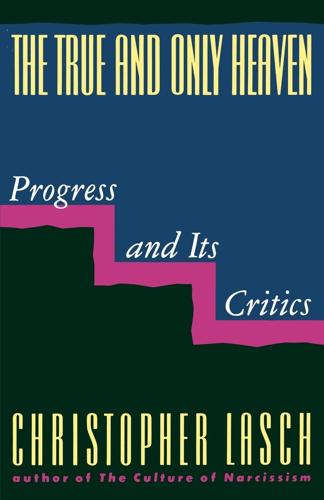
The True and Only Heaven: Progress and Its Critics
by
Christopher Lasch
Published 16 Sep 1991
Faith in the civilizing power of women made it possible for the nineteenth century to believe that enlightened self-interest would find its characteristic expression not in a ruthless pursuit of the main chance, much less in "luxury" and fashionable dissipation, but in family feeling—in the determination of conscientious parents to provide their children with opportunities unavailable to themselves. Henry George on Progress and Poverty In the long run, of course, it was a lost cause, this attempt to build up the family as a counterweight to the acquisitive spirit. The more closely capitalism came to be identified with immediate gratification and planned obsolescence, the more relentlessly it wore away the moral foundations of family life. The rising divorce rate, already a source of alarm in the last quarter of the nineteenth century, seemed to reflect a growing impatience with the constraints imposed by long-term responsibilities and commitments. The passion to get ahead had begun to imply the right to make a fresh start whenever earlier commitments became unduly burdensome.
…
Dallas is itself an advertisement of the good life, like almost everything that comes over the media—for the good life, that is, conceived as endless novelty, change, and excitement, as the titillation of the senses by every available stimulant, as unlimited possibility. "Make it new" is the message not just of modern art (the "adversary culture" deplored by neoconservatives) but of modern consumerism. The modern capitalist economy rests on the techniques of mass production pioneered by Henry Ford but also, no less solidly, on the principle of planned obsolescence introduced by Alfred Sloane when he instituted the annual model change. Relentless "improvement" of the product and upgrading of consumer tastes are the heart of mass merchandising, and these imperatives are built into the mass media at every level. Even the reporting of news has to be understood not as propaganda for any particular ideology, liberal or conservative, but as propaganda for commodities—for the replacement of things by commodities, use values by exchange values, and events by images.
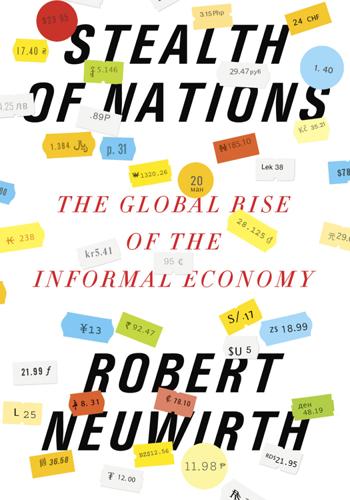
Stealth of Nations
by
Robert Neuwirth
Published 18 Oct 2011
Take the business of high fashion. In a series of spirited essays, law professors Kal Raustiala and Christopher Sprigman have argued that piracy actually helps the fashion houses, because it spurs demand for new styles. The fashion industry, they note, is governed by a speeded-up version of planned obsolescence—which the professors have labeled “induced obsolescence.” For the industry to make money, today’s must-have designer item must become tomorrow’s stale has-been. Piracy helps this process, they note, because nothing stays cutting-edge once it becomes ubiquitous. So, just as Walker’s penny-a-play war with Tonson fueled demand for Shakespeare, the mass production of counterfeits helps fuel consumer demand, which forces designers to innovate and bring out new patterns and styles.

Let them eat junk: how capitalism creates hunger and obesity
by
Robert Albritton
Published 31 Mar 2009
See Albritton (2007a) for a much fuller discussion of the importance of “commodification” to economic theory. Marx (1976: chapters 26–33). Marx (1976: 254). At the time of writing this is all too real. For example, until they faced strong international competition that forced them to change, the American auto industry was criticized for “planned obsolescence”. The poor quality of some American cars was finally exposed by books like Nader’s Unsafe at Any Speed (1965). Marx (1976: 358). Read any good history of trade union organizing for many examples. Many of the welfare state gains and gains of trade unions in the 1950s and 1960s were later rolled back.
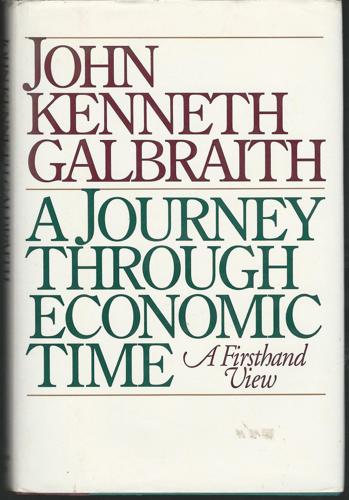
World Economy Since the Wars: A Personal View
by
John Kenneth Galbraith
Published 14 May 1994
Much of this achievement will impress us only so long as we do not inquire how the demand for the products so developed is contrived and sustained. If we do, we are bound to observe that much of the research effort—as in the automobile industry—is devoted to discovering changes that can be advertised. The research program will be built around the need to devise "selling points" and "advertising pegs" or to accelerate "planned obsolescence." All this suggests that the incentive will be to allocate research resources to what, in some sense, are the least important things. The quantity is more impressive than the way it is allocated. Still, one would not wish to suggest that the American economy is delinquent in the attention it devotes to change and improvement in consumers' goods.

The Age of Stagnation: Why Perpetual Growth Is Unattainable and the Global Economy Is in Peril
by
Satyajit Das
Published 9 Feb 2016
His 1957 book The Hidden Persuaders detailed the use of (often subliminal) psychological techniques, especially hedonism, fashion, status, and fear of its loss, to manipulate expectations and induce desire for products. Advertising converted shopping and consumption into an essential part of leisure. Planned obsolescence and disposability also increased demand. Instead of allowing for replacement based on failure or innovation, products were designed with a limited useful life so as to increase consumption. With the US car market approaching saturation, GM chairman Alfred Sloan initiated annual design changes to encourage drivers to replace their vehicles frequently.
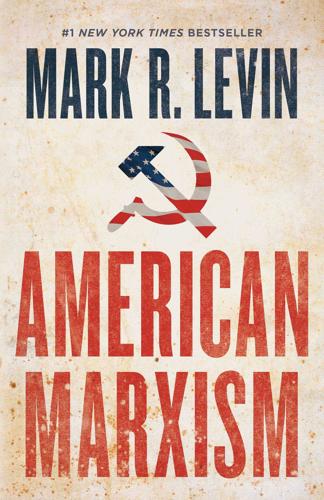
American Marxism
by
Mark R. Levin
Published 12 Jul 2021
The toleration of the systematic moronization of children and adults alike by publicity and propaganda, the release of destructiveness in aggressive driving, the recruitment for and training of special forces, the impotent and benevolent tolerance toward outright deception in merchandising, waste, and planned obsolescence are not distortions and aberrations: they are the essence of a system which fosters tolerance as a means for perpetuating the struggle for existence and suppressing the alternatives. The authorities in education, morals, and psychology are vociferous against the increase in juvenile delinquency; they are less vociferous against the proud presentation, in word and deed and pictures, of ever more powerful missiles, rockets, bombs—the mature delinquency of a whole civilization.”5 In other words, America as a land of opportunity and freedom is a fiction, and the citizen-majority that accepts this fiction is made up of mindless zombies, unable to think for themselves—unwitting servants of their own persecutors, who themselves are undermining the cause of economic and political liberation.

Hijacking the Runway: How Celebrities Are Stealing the Spotlight From Fashion Designers
by
Teri Agins
Published 8 Oct 2014
Accessories, which used to be the trimmings—in the shadows of all those trendy dresses and sportswear ensembles—were now the stars in fashion. It was a flip of the switch, a game-changing development that was grounded in fashion economics. Fashion houses needed a new strategy that could effectively revive the industry’s rule of planned obsolescence—the revolving door of trends that compels women to update their wardrobes and, not coincidentally, keeps the multibillion-dollar global apparel industry thriving. Dress-Down Nation had robbed fashion of the novelties it needed to keep introducing. Accessories would thus become high fashion’s lifeline—the antidote to Dress-Down Nation, which had democratized fashion, homogenizing it to the point that the receptionist, the office manager, and the managing partner of the advertising agency—everybody—was reduced to looking the same in their casual clothes.

Empire of Things: How We Became a World of Consumers, From the Fifteenth Century to the Twenty-First
by
Frank Trentmann
Published 1 Dec 2015
Men were urged to take off their grey suits and express their individuality through more fashionable and colourful clothes; by the late 1960s, menswear in America was growing almost as fast as women’s fashion.134 Opting for a VW showed that you were not a member of the herd but a critical, responsible driver who was not fooled by changing tail-fins and other gimmicks of planned obsolescence. Anti-advertising converted a bad conscience about ‘consumerism’ into a reason for buying more. Self-expression also provided a bridge between the arts and commerce. Actors, like intellectuals, had had a deep suspicion of advertising. By 1959, serious artists like Vittorio Gassman and Anna Maria Ferrero were appearing in a promotional sketch for Baci chocolates on the Italian show Carosello, mocking precisely such high cultural pretensions.135 Older critics such as Marcuse (born 1898), Adorno (1903) and Galbraith (1908), were overtaken by a new generation of public intellectuals who adopted a more balanced tone towards the world of goods.
…
A disposable lifestyle was taking over, defined by plastic, one-way bottles, tins and convenience meals. Cars were no longer prized for their working engine but for their fashionable looks, dumped for a new one the minute styles changed. Packard did not have a problem with change as such, as long as it was related to functional improvements. His target was planned obsolescence dictated by fashion and the pursuit of change for change’s sake. Packard touched a nerve. Things no longer seemed to last as long as they used to. They were made to break. Today, concern about waste is mainly about environmental pollution. Then, it was about national decline and moral decay.
…
At the same time, it creates space for a shiny replacement. In addition, selling used cars and similar goods where money can be made gives owners the cash to buy a new model. Their purchase presumes that such goods can be resold later. The changing life span of things matters here. Packard, in The Waste Makers, singled out planned obsolescence and warned of ever faster product cycles. The introduction, in the 1950s, of ‘printed circuits’, for example, made transistor radios all but unrepairable. Since then, the ‘death-dating’ of components has added sophistication to the art of ‘made to break’.86 Consumers have been strangely divided in their attitudes to durability.

Heart of the Machine: Our Future in a World of Artificial Emotional Intelligence
by
Richard Yonck
Published 7 Mar 2017
We are suffering for the mistakes they made because when the end comes, all that will be left is us. That’s why they hate us.4 There may certainly be truth to Joe’s insight as we enter the era of emotionally intelligent machines. Especially early on, they will no doubt suffer the realities of consumer society, regularly discarded and replaced as the result of planned obsolescence. But in time, if our machines do eventually attain human levels of emotional behavior, even if this is not truly internalized and experienced by the devices themselves, this is likely to change. Ever hopeful and unswaying in his quest, David finally experiences this acceptance at the movie’s end: MONICA Such a beautiful day.
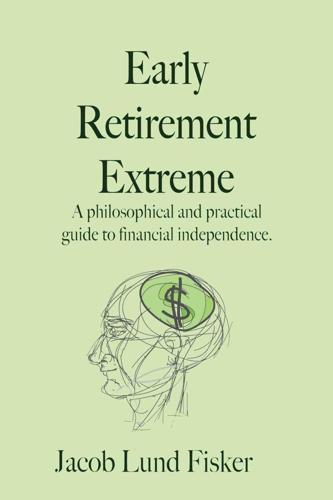
Early Retirement Extreme
by
Jacob Lund Fisker
Published 30 Sep 2010
Government strategies, driven by the political currency of popular votes, comprise inflation-inducing monetary policies, which cause people to spend their money now rather than save it for later, and fiscal policies, which promote government projects ranging from military expenditures and wars to job-creating projects, such as building bridges to nowhere, to direct stimulus packages for the consumers--formerly known as citizens. Many profit-driven corporate strategies are based on fashion, planned obsolescence, unneeded upgrades, and masterful emotional manipulation --marketing--causing people to continuously replace goods which are still in good working order. Although these strategies seem to fail tactically in an almost predictable fashion, with booms and busts, recessions and depressions, or simply chronic mismanagement, when centrally regulated and directed, the strategies have proven immensely powerful on secular time scales.
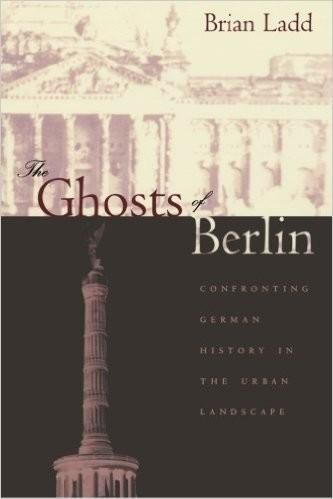
The Ghosts of Berlin: Confronting German History in the Urban Landscape
by
Brian Ladd
Published 1 Jan 1997
And even before the Allied bombers came, Berlin, like New York, had a reputation as a city that quickly consumed its own past, a city of great buildings that no longer exist. Europeans believenot without reasonthat U.S. < previous page page_37 file:///Volumes/My%20Book/arg/ladd-Ghosts_Berlin/files/page_37.html [24/03/2011 13:47:37] next page > page_38 < previous page page_38 next page > Page 38 cities are showcases of the American practice of planned obsolescence. But whereas New York supposedly casts off the shackles of the past in order to forget them and to live in a dynamic present, Berlin since World War II has ceased to be a city that forgets. For half a century, Berlin has struggled in vain to purge itself of the ghost of Hitler. At times the will to forget has manifested itself in acts of destruction: when the Soviet authorities quickly leveled Hitler's chancellery after the war, for example, and when the West Berlin government razed SS and Gestapo headquarters.

A New History of the Future in 100 Objects: A Fiction
by
Adrian Hon
Published 5 Oct 2020
Others, such as the amplified teams and the hive minds, were so fast they looked like they were cheating. These winners were unaccountable, transnational, transplanetary. Hard to understand. Hardly human. But even they weren’t invulnerable, their fear belied by their desperate grip on the last vestiges of an unfree market. They wielded patents, copyrights, monopolies, planned obsolescence, addiction, locked-in ecosystems, regulatory capture, political corruption, advertising, and lobbying. They guzzled social contributions, such as open-source software and crowdsourcing and incoming personal data, and gave nothing back other than free-if-you-don’t-look-closely services. Anything to maintain their position in a vanishing capitalist system.

Cheap: The High Cost of Discount Culture
by
Ellen Ruppel Shell
Published 2 Jul 2009
We tend to invest less in their purchase, care, and maintenance, and that’s part of what makes them so attractive. Cheap clothing lines—sold at discounters such as Target and H & M—are like IKEA emblems of the “cheap chic” where style fills in for whatever quality goes lacking. There is nothing sinister in this, no deliberate planned obsolescence. These objects are not designed to fall apart, nor are they crafted not to fall apart. In many cases we know this and accept it, and have entered into a sort of compact. Perhaps we don’t even want the object to last forever. Such voluntary obsolescence makes craftsmanship beside the point.

Living in a Material World: The Commodity Connection
by
Kevin Morrison
Published 15 Jul 2008
The 1990s brought more slimline mobile phones to a wider audience along with personal computers, digital cameras, DVDs, TV set-top boxes for satellite and cable TV, games consoles and – for the elderly – pacemakers. The 2000s is the era of MP3 players, the iPod, plasma TV, digital TV and digital radio. Innovative design or planned obsolescence means that computers are being updated every couple of years. A teenager’s bedroom in the developed world is full of many more electronic gadgets than the stereo I boasted about having when I was a teenager. Now the average teenager has a personal computer and a laptop, an MP3 player, CD player and television.
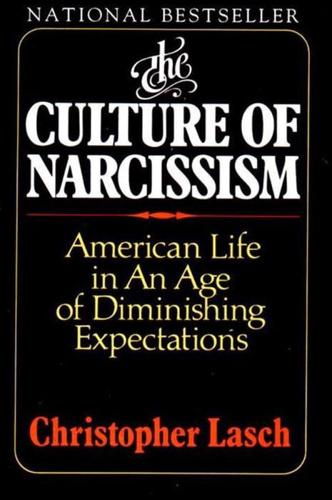
The Culture of Narcissism: American Life in an Age of Diminishing Expectations
by
Christopher Lasch
Published 1 Jan 1978
Psychologkal Repercussions of the "Transfer of Functions" 170 Narcissism and the "Absent Father" 172 The Abdication ofAuthority and the Transformation of the Superego The Family's Relation to Other Agencies of Social 176 Control 180 Paternalism Without Father The New Rich and the Old The Managerial and Professional Elite as a Ruling Class 182 VIII 218 s Progressivism and the Rise ofthe New Paternalism Human Relations on the Job: The Factory as a Family X 169 Narcissism, Schizophrenia, and the Family xi Liberal Criticism ofthe Welfare State 222 224 Bureaucratic Dependence and Narcissism The Conservative Critique ofBureaucracy 232 Afterword: The Culture of Narcissism Revisited 237 228 (j Notes The Flight from Feeling: Sociopsychology of the Sex War 251 Index 275 The Trivialization ofPersonal Relations The Battle of the Sexes: Its Social History 187 189 The Sexual "Revolution" 191 Togetherness Feminism and the Intensification ofSexual Warfare 194 196 Strategies ofAccommodation The Castrating Woman ofMale Fantasy The Soul of Man and Woman under Socialism 198 201 205 IX The Shattered Faith in the Regeneration of Life TheDrtadofOldAge Narcissism and Old Age The Social Theory ofAging: " Growth" as Planned Obsolescence Prolongevity: The Biological Theory ofAging 207 209 211 214 Preface Hardly more than a quarter-century after Henry Luce prothe American century American confidence has fallen to a low ebb. Those who recently dreamed of world power now despair of governing the city of New York. Defeat in Vietnam economic stagnation, and the impending exhaustion of natural resources have produced a mood of pessimism in higher circles which spreads through the rest of society as people lose faith in their leaders.
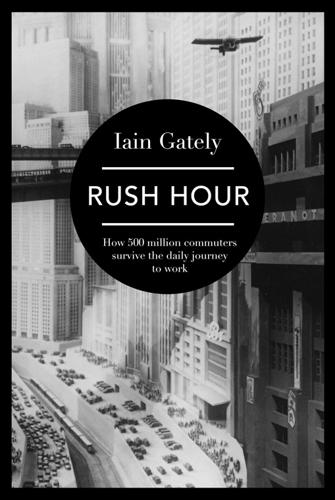
Rush Hour: How 500 Million Commuters Survive the Daily Journey to Work
by
Iain Gately
Published 6 Nov 2014
The real-life commuter who wished to buy a new car was faced with a dizzying variety of choices. Car design and advertising became increasingly splendid during the 1950s and 1960s. Styling favoured form over function and adverts focused on novelty in support of a general strategy within the industry of ‘planned obsolescence’. Although the phrase is taken to mean that manufacturers built their products with limited lifespans, it actually referred to cars made to fall out of fashion rather than to fall apart. It first appeared in the 1920s, when all the principal automakers started producing new models every calendar year.
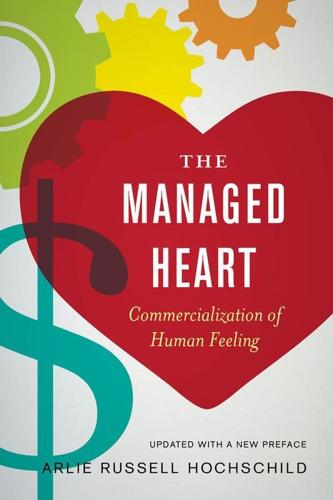
The Managed Heart: Commercialization of Human Feeling
by
Arlie Russell Hochschild
Published 1 Nov 1983
Lakoff, Robin 1975 Language and Woman's Place. New York: Harper & Row. 302 Bibliography Langer, Suzanne 1951 Philosophy in a New Key. Cambridge, Mass.: Harvard University Press. 1967 Mind: An Essay on Human Feeling, Vol. 1. Baltimore: Johns Hopkins University Press. Lasch, Christopher 1976a "Planned obsolescence." New York Review of Books 23 (October 28): 7. 1976b "The narcissist society." New York Review of Books 23 (September 30): 5 -13. 1978 The Culture of Narcissism. New York: Norton. Laslett, Peter 1968 The World We Have Lost. London: Methuen. Latane, Bibb, andJohn Darby 1970 The Unresponsive Bystander.

The Divide: A Brief Guide to Global Inequality and Its Solutions
by
Jason Hickel
Published 3 May 2017
Or you could outright ban particularly unnecessary and destructive products, like bottled water, as some cities in Australia and the United States have done. Other simple ways to curb consumption might include regulating credit cards, raising taxes on luxury products and outlawing the use of ‘planned obsolescence’ by manufacturers who seek to increase turnover by building shoddy, throwaway products. But what about jobs? If we scale back production and consumption, won’t that trigger a crisis of unemployment? It’s a good question, and one we must take seriously. After all, our politicians are always calling for more economic growth because they want to get the employment figures up – that’s what gets them votes.

Who’s Raising the Kids?: Big Tech, Big Business, and the Lives of Children
by
Susan Linn
Published 12 Sep 2022
The hot holiday toys in 2021 included “My Little Pony: A New Generation Sing ‘N Skate Sunny Starscout Interactive 9-Inch Remote Control Toy with 50 Reactions, and Lights” ($52.99 at Target).9 Then there’s the “Magic Mixies Magical Misting Cauldron with Interactive 8-Inch Blue Plush Toy and 50+ Sounds and Reactions, Multicolor” ($69.99 on Amazon). And, from the popular YouTube show for preschoolers, “CoComelon Official Deluxe Interactive JJ Doll with Sounds” ($59.88 at Walmart).10 Electronic wizardry makes for great advertising campaigns. The toys look fun. But they are created with a kind of planned obsolescence. They are not typically designed to engage children for years, or even weeks. They are designed to sell. If interest wanes, so much the better—another version will soon be on the market. These toys are great for profits. But great for children? Not so much. The more a toy or app drives the form and content of children’s play and the more the characters or the toys kids play with are linked to popular media properties and franchises, the less children get to exercise curiosity, initiative, creativity, flexible problemsolving, and imagination.

A Hunter-Gatherer's Guide to the 21st Century: Evolution and the Challenges of Modern Life
by
Heather Heying
and
Bret Weinstein
Published 14 Sep 2021
Would it be good if people spent more time producing art, music, and insight and less time coveting, purchasing, and flaunting trendy goods? Of course. All of these things would be major upgrades to our way of life. But our growth-obsessed economic mindset would report exactly the opposite. Our throughput society depends on insecurity, gluttony, and planned obsolescence. It’s how we keep the lights on. Our obsession with growth has thus been a mixed bag. It brought us this far, at the cost of a great deal of suffering and misery. Nevertheless, with more than seven billion people on the planet, consumption cannot remain our measure of well-being. If we are to persist, sustainability must displace growth as the indicator of success.

What’s Your Type?
by
Merve Emre
Published 16 Aug 2018
His inventory seemed endless, all the better to please corporate clients like General Electric and Standard Oil, each of whom had pledged its loyalty to the test they were certain was better than all the rest at predicting job performance. That loyalty was unwavering—at least until the next new test came along, as Hay knew it would. His success depended on the planned obsolescence of his products. He lived with his wife and six children in the suburbs of Swarthmore, Pennsylvania, and it was there that he met Isabel Briggs Myers, whom he initially knew only as the involved mother of one of his son’s classmates. She wrote to him in January 1942, the same week that Soviet troops pushed the German army back from Moscow, the same month Hitler threatened the Jews of the world with total annihilation.

The Future Is Faster Than You Think: How Converging Technologies Are Transforming Business, Industries, and Our Lives
by
Peter H. Diamandis
and
Steven Kotler
Published 28 Jan 2020
“It is a programmed process. Evolution probably had an investment in having the lifespan of a particular species not go on forever. You’ve got to get the old folks out of the way so the young ones have a chance at the resources.” To get the old folks out of the way, evolution devised a fail-safe: planned obsolescence, otherwise known as aging. It’s a redundant plan. Scientists now believe there are nine main “causes” of our decline, the nine horsemen of an internal apocalypse. We’re going to spend the rest of this chapter investigating the strategies being deployed to defeat this decline. Yet, before we do that, we first need to meet these horsemen, and explore the fundamental question they answer: What, exactly, is killing us?
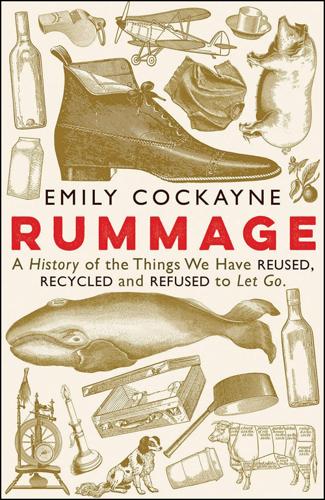
Rummage: A History of the Things We Have Reused, Recycled and Refused To Let Go
by
Emily Cockayne
Published 15 Aug 2020
See, for example, Thomas Tusser, A Hundreth Good Pointes of Husbandry (London, 1570), fol. 33v. 22. Strasser, Waste and Want. 23. Talbot, Millions from Waste, pp. 221–2. 24. ‘Charitable Agencies and Poor Relief’, Times, 2 December 1869, p. 5. 25. Bernard London, ‘Ending the Depression through Planned Obsolescence’, self-published pamphlet, 1932. 26. See various examples on the AvE YouTube Channel, for example, ‘BOLTR: KitchenAid Mixer. SURPRISE!’, https://www.youtube.com/watch?v=0qKp-0h9P18; https://www.youtube.com/watch?v=0qKp-0h9P18&feature=youtu.be&t=2282 27. James Strachan, The Recovery and Re-Manufacture of Waste Paper (Aberdeen, 1918), preface, pp. v–vi, see also pp. 3–8, 17, 40–41. 28.
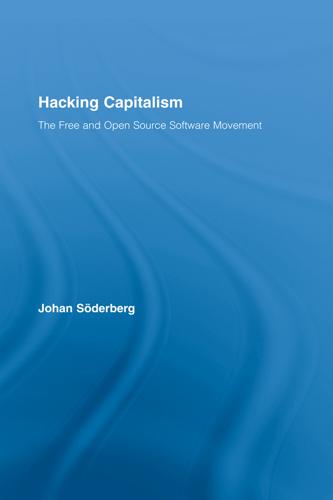
Hacking Capitalism
by
Söderberg, Johan; Söderberg, Johan;
Fred Hirsch concludes that mass consumer goods must fail to satisfy the expectation of individual consumers.6 We would, however, be erroneous to deduce from Hirsch’s argument that the consumer market is running into a definitive obstacle because of this. On the contrary, a permanent erosion of the use value of individual consumer goods, paired with the delusion that buying more goods is a remedy to social ills, is instrumental in the workings of planned obsolescence. Consumption turns into an endless tail-chase to escape crowding. The market value of gated communities, remote beaches, and sport utility vehicles derives directly from the economy of crowding. Crowding is one example of how specific, individual forms of need satisfaction are being saturated when consumption is pushed beyond the scope of use for the sake of exchange.
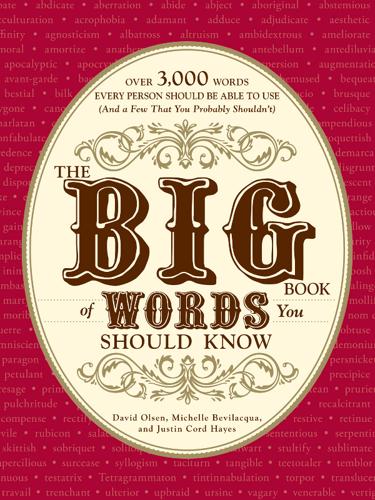
The Big Book of Words You Should Know: Over 3,000 Words Every Person Should Be Able to Use (And a Few That You Probably Shouldn't)
by
David Olsen
,
Michelle Bevilacqua
and
Justin Cord Hayes
Published 28 Jan 2009
obfuscate (OB-fuss-kate), verb To muddy or confuse an issue. Someone who obfuscates makes every effort to muddle facts important to someone else’s judgment or decision. The defense has put up with enough of these attempts to OBFUSCATE, Your Honor. obsolescence (ob-suh-LESS-unce), noun The state or condition of becoming outdated. Planned obsolescence is the deliberate “underdesigning” of products or systems; the items are meant to wear out sooner than they might in order to make way for new items to fulfill essentially the same function. The farm machinery’s OBSOLESCENCE was now hard for even Grandpa to deny. oeuvre (OO-vruh), noun From the French meaning “work,” an oeuvre is an artist’s, writer’s, or composer’s body of work, treated as a whole.

User Friendly: How the Hidden Rules of Design Are Changing the Way We Live, Work & Play
by
Cliff Kuang
and
Robert Fabricant
Published 7 Nov 2019
After you’ve designed the Facebook Like button, how do you deal with the fact that in a mere ten years a new system of feedback loops rewired how information was spread? If you’ve designed the iPhone, how do you make peace with its marketing, which every year strives to convince us that our old phones aren’t good enough anymore—thus enshrining planned obsolescence not merely as the cost of doing business, but as the ideal state of technology’s progress? Perhaps one way is to make something entirely different. Justin Rosenstein, the software genius who had helped invent the Like button, now dedicates his time to a new company, Asana, whose name references the yogic state of being both utterly alert and profoundly calm.

The Ten Million Dollar Getaway: The Inside Story of the Lufthansa Heist
by
Doug Feiden
Published 1 Sep 2014
No one would ever be dismissed from it; three of those four contract workers would be homicide statistics very soon, and the fourth would be a jailbird. For they were expendable. It was the one thing no one had bothered to tell them about now that the job was over—that they were headed for planned obsolescence. (Farming out contract work is a common mob practice on big jobs. Instead of taking home a percentage of the take, your average thief is paid an agreed-on amount of cash up front, a very small fraction of the total profits. It seems, at first glance, a raw deal for the man who does most of the work and takes most of the risks, but most thieves prefer such an arrangement.

Frostbite: How Refrigeration Changed Our Food, Our Planet, and Ourselves
by
Nicola Twilley
Published 24 Jun 2024
* * * — The basic mechanism behind the domestic refrigerator hasn’t changed much since the triumph of the electric fridge in the 1930s, and as Kipp Bradford assured me, it’s simple enough to be extremely sturdy. This presents something of a challenge to manufacturers. In 1932, advertising executive Earnest Elmo Calkins wrote the introduction to a book outlining a concept he called “consumer engineering,” which relied on a combination of planned obsolescence and effective design to induce demand. “Goods fall into two classes: those that we use, such as motor cars or safety razors, and those that we use up, such as toothpaste or soda biscuits,” he wrote. “Consumer engineering must see to it that we use up the kind of goods we now merely use. Why would you want last year’s hand bag when this year’s hand bag is so much more attractive?”
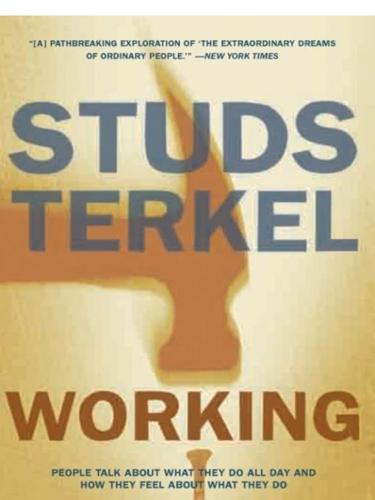
Working: People Talk About What They Do All Day and How They Feel About What They Do
by
Studs Terkel
Published 1 Jan 1974
Though I had a bank account, though my children’s tuition was paid, though I had a salary and a job waiting for me back in Haverford, I was demoralized. I had an inkling of how professionals my age feel when they lose their job and their confidence begins to sink.”4 Dr. Coleman is 51. Perhaps it is this specter that most haunts working men and women: the planned obsolescence of people that is of a piece with the planned obsolescence of the things they make. Or sell. It is perhaps this fear of no longer being needed in a world of needless things that most clearly spells out the unnaturalness, the surreality of much that is called work today. “Since Dr. Coleman happens to be chairman of the Federal Reserve Bank of Philadelphia, he quit his ditchdigging job to preside over the bank’s monthly meeting.

The Rise and Fall of the Third Chimpanzee
by
Jared Diamond
Published 2 Jan 1991
The classic paper in which George Williams presented an evolutionary theory of aging is 'Pleiotropy, natural selection, and the evolution of senescence', Evolution 11, pp. 398–411 (1957). Other papers that have employed evolutionary approaches are by G. Bell, 'Evolutionary and non-evolutionary theories of senescence', American Naturalist 124, pp. 600-3 (1984); E. Beutler, 'Planned obsolescence in humans and in other biosystems', Perspectives in Biology and Medicine 29, pp. 175-79 (1986); R.J. Goss, 'Why mammals don't regenerate—or do they? , News in Physiological Sciences 2, 112-15 (1987); L.D. Mueller, 'Evolution of accelerated senescence in laboratory populations of Drosophila, Proceedings of the National Academy of Sciences 84, pp. 1974-77 (1987); and T.B.

Life Inc.: How the World Became a Corporation and How to Take It Back
by
Douglas Rushkoff
Published 1 Jun 2009
Now that more products were being produced than people actually needed, manufacturers and their marketers needed to create desire in people whose basic needs were already being met. Many companies learned how to do this in a purely mechanistic fashion. Car companies developed schemes for “planned obsolescence,” through which car parts were manufactured to fail a few years after the car was purchased. By the late 1970s, that technique became too obvious—especially in light of the fact that it wasn’t practiced by Japan and Germany, whose cars tended to last much longer than American models. So automobile manufacturers instead developed time lines through which new features could be rolled out in successive years of a particular model.
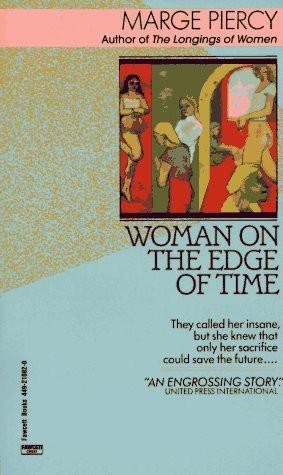
Woman On The Edge Of Time
by
Piercy, Marge
Published 1 Jan 1976
Some were games with things, like soft collapsible swords, pillows that spilled light bubbles when they broke. People were gliding on big wings off the hill by the river, and every so often someone fell in, settling into the water and then swimming to shore as the wings dissolved. “You make a lot of things that fall apart quickly. They did that in my time also. Called it planned obsolescence.” “Playthings, flimsies, some pretty things we make for a moment. They’re called butterflies. But objects we make for daily use, we make to last. It would be a pity to use up scarce copper or steel on a machine that worked poorly.” “Ummmm. Luxury items are made for once only and the necessities to last?”

Wall Street: How It Works And for Whom
by
Doug Henwood
Published 30 Aug 1998
Veblen noted that many transactions are undertaken not for effi- GOVERNANCE ciency, but for reasons of power — to undermine competitors or secure monopoly position. He emphasized that businesses wanted to make money, not run the best industrial system imaginable. The difference in emphasis is important, because the Coasian view sees the corporation's role as maximizing efficiency, not profit, which is another matter entirely. Advertising, planned obsolescence, predatory pricing, and spurious innovation are partly or wholly socially useless, even malignant, activities, but they are profit-maximizing. Veblen also argued that an industrial system run for social efficiency rather than maximum profit might see more internalized and fewer market transactions.

Moby-Duck: The True Story of 28,800 Bath Toys Lost at Sea and of the Beachcombers, Oceanographers, Environmentalists, and Fools, Including the Author, Who Went in Search of Them
by
Donovan Hohn
Published 1 Jan 2010
And as Pallister learned at Gore Point, the cleaning bill may be greater than we can afford. In Charlie Moore’s opinion, the solution may require more radical sacrifices, sacrifices that the citizens, governments, and corporations of the world are reluctant to make. Eventually we will have to abandon planned obsolescence, he believes, and instead manufacture products that are durable, easily recyclable, or both. In short, we’ll have to abandon the American way of life. Such eco-utopianism sounds to my ears far-fetched, but there are other smaller, more practical actions we could, in theory, take. In 1999, the Natural Resources Defense Council successfully sued the U.S.

Becoming Steve Jobs: The Evolution of a Reckless Upstart Into a Visionary Leader
by
Brent Schlender
and
Rick Tetzeli
Published 24 Mar 2015
The son of a silversmith who taught at the local college in the London suburb of Chingford, Ive gravitated toward industrial design at an early age, and went on to study at what is now called Northumbria University in Newcastle. There he became an admirer of Dieter Rams, the legendary onetime chief of design for Braun, the German small appliance maker, who in the 1970s was one of the pioneers of what is now called sustainable design, and who railed against the industrial practice of planned obsolescence. Rams, who still designs furniture for a Danish company called Vitsœ, had become known for his “Ten Principles of Good Design.” According to Rams, Good Design is: 1. innovative 2. what makes a product useful 3. aesthetic 4. what makes a product understandable 5. unobtrusive 6. honest 7. long-lasting 8. thorough down to the last detail 9. environmentally friendly 10. as little design as possible During Amelio’s short tenure I had visited Jony in his workspace, called the Design Lab.
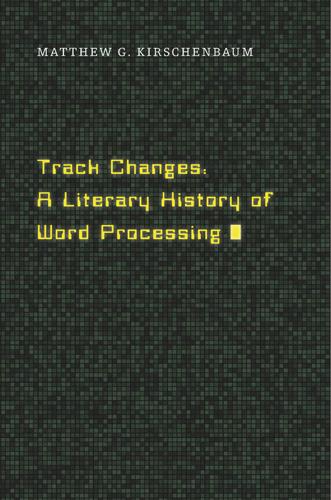
Track Changes
by
Matthew G. Kirschenbaum
Published 1 May 2016
But another way to read Brathwaite is as a poet who has learned the language of Prospero only to speak it in the deliberate manner of Caliban—not just in the phrasings and voicings of the islands, but according to alternative timelines and temporalities, a slow time outside of Western techno-history, admitting neither consumer novelty nor planned obsolescence, but answering instead to the work—the words—of the moment. Although most authors are content to leave issues of layout and design to their publishers, notable literary work at the boundaries between word processing and desktop publishing has continued to flourish.75 Mark Z. Danielewski drafted the original manuscript for his breakthrough novel House of Leaves (2000) in longhand, then revised it with a word processor.
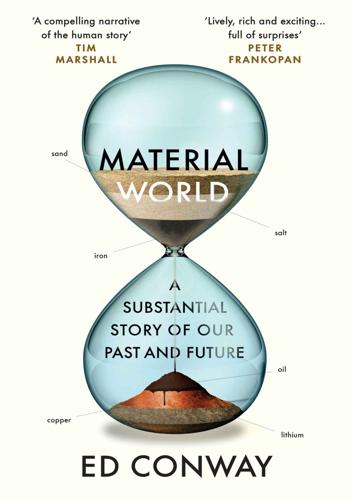
Material World: A Substantial Story of Our Past and Future
by
Ed Conway
Published 15 Jun 2023
For aluminium the rate is 42–70 per cent; for cobalt 68 per cent; for copper 43–53 per cent. For lithium it is less than 1 per cent.5 The concept of the ‘circular economy’ holds that we should try increasingly to treat waste as a kind of resource in and of itself. If the twentieth century was the era of planned obsolescence, where first motorists and then consumers of all stripes were encouraged to upgrade their products as often as possible, the coming era is, we are told, one where the priority is to dispense with disposal. Recycling goes from being a sideshow to the main show. Everything becomes about closing loops.
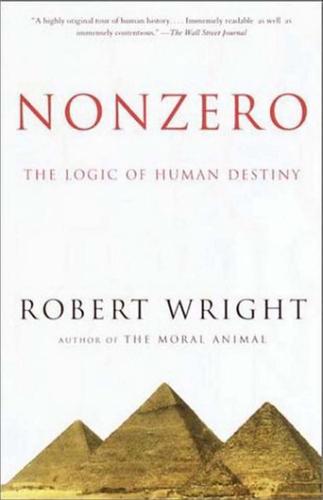
The Moral Animal: Evolutionary Psychology and Everyday Life
by
Robert Wright
Published 1 Jan 1994
(And this was before nuclear weapons.) War has contained the seeds of its own demise all along. This primal form of zero-sum energy, through the very logic of history that it helped impel, was bound to grow more and more negative-sum until finally its downside was too glaring to ignore. In retrospect, it looks almost like planned obsolescence. If war can indeed be turned into a relic, then the virtue of greed will recede further. From a given society’s standpoint, one big upside of wanton material acquisition has traditionally been the way it drives technological progress—which, after all, helps keep societies strong. In the nineteenth century, Russia and Germany had little choice about modernizing; in those days stasis invited conquest.

The Climate Book: The Facts and the Solutions
by
Greta Thunberg
Published 14 Feb 2023
Instead of assuming that every sector of the economy must grow, all the time, regardless of whether or not we actually need it, we should decide which sectors of the economy we actually need to improve (for example renewable energy, public transportation and health-care), and which are clearly destructive and should be scaled down (SUVs, air travel, fast fashion, industrial beef, advertising, finance, the practice of planned obsolescence, the military industrial complex, and so on). There are huge chunks of the economy that are organized mostly around corporate power and elite consumption, and we would all be better off without them. Most people would regard this as sensible, except for one thing: what about jobs? Fortunately, there is a simple solution: as the economy requires less labour, we can shorten the working week and share necessary work more evenly.
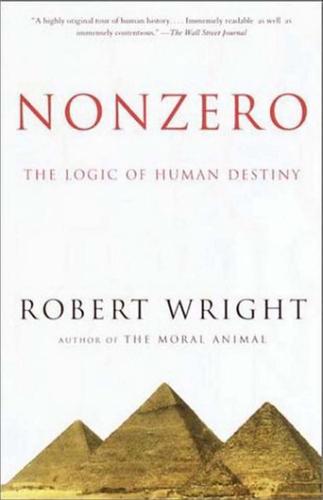
Nonzero: The Logic of Human Destiny
by
Robert Wright
Published 28 Dec 2010
(And this was before nuclear weapons.) War has contained the seeds of its own demise all along. This primal form of zero-sum energy, through the very logic of history that it helped impel, was bound to grow more and more negative-sum until finally its downside was too glaring to ignore. In retrospect, it looks almost like planned obsolescence. If war can indeed be turned into a relic, then the virtue of greed will recede further. From a given society’s standpoint, one big upside of wanton material acquisition has traditionally been the way it drives technological progress—which, after all, helps keep societies strong. In the nineteenth century, Russia and Germany had little choice about modernizing; in those days stasis invited conquest.

Aerotropolis
by
John D. Kasarda
and
Greg Lindsay
Published 2 Jan 2009
What eyeballs and cancer drugs have in common with laptops and assembly lines is that they are all just-in-time. The aerotropolis is a machine designed to process the perishable in any form, and in the need-it-right-this-second economy, that might be this year’s model iPhone a month before its planned obsolescence, or a tailored wonder drug unraveling one molecule at a time. Anyone selling anything with a sell-by date can save time and money by moving here, because the reigning presumption in the hubs is that they are one and the same. Corridors of white boxes line all the highways of America, but what sets these hubs apart is the possibility that behind the loading bay doors is Willie Wonka’s factory full of surreal and precious merchandise—like a lifetime supply of morphine and OxyContin.

For the Win
by
Cory Doctorow
Published 11 May 2010
“It’s like tailfins—they were cool in the Tailfin Cretaceous, but wouldn’t it have been better if they could have disappeared from view when they became aesthetically obsolete, when the space age withered up and blew away? Oh, not really, obviously, because it’s nice to see a well-maintained land-yacht on the highway every now and again, if only for variety’s sake, but if you’re going to design something that is meant to be au fait then presumably you should have some planned obsolescence in there, some end-of-lifing strategy for the aesthetic crash that follows any couture movement. Here, check this out.” He handed her a white brick, the size of a deck of cards. It took her a moment to recognize it as an iPod. “Christ, it’s huge,” she said. “Yeah, isn’t it just. Remember how small and shiny this thing was when it shipped?

The Gene: An Intimate History
by
Siddhartha Mukherjee
Published 16 May 2016
Genes that were truly valuable for survival were likely shuffled to other parts of the genome where they could be stored securely; genes with limited value were made obsolete, retired, or replaced. As information was lost, the Y chromosome itself shrank—whittled down piece by piece by the mirthless cycle of mutation and gene loss. That the Y chromosome is the smallest of all chromosomes is not a coincidence: it is a victim of planned obsolescence, destined to a male-only convalescence home where it can vanish, puffing its last cigar, into oblivion. In genetic terms, this suggests a peculiar paradox. Sex, one of the most complex of human traits, is unlikely to be encoded by multiple genes. Rather, a single gene, buried rather precariously in the Y chromosome, must be the master regulator of maleness.I Male readers of that last paragraph should take notice: we barely made it.
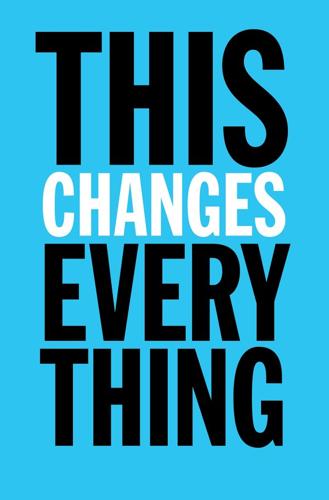
This Changes Everything: Capitalism vs. The Climate
by
Naomi Klein
Published 15 Sep 2014
Boone, 237–38, 252 Pickens Plan, 237 Pierre River Mine, 379–80, 383 Piketty, Thomas, 113, 154–55 Pinatubo eruption (1991), 258–59 weather effects of, 259, 270, 271–72, 274 Pinatubo Option, 258, 259–62, 274 famine and drought as consequences of, 270, 279, 287 solar power generation affected by, 259 termination problem in, 260 weather patterns affected by, 260, 268, 270–71 Pine Ridge Reservation, 393, 396 pipelines, 141, 157, 349, 352, 362, 413, 446 as common threat, 315–16 Indigenous peoples and, 315, 319, 344–45 public value of renewable energy projects vs., 400 see also specific pipeline projects Pittsburgh, Pa., rights of nature ordinance in, 444 place, love of, in Blockadia movement, 337–66 planetary exodus, 288–89 planned obsolescence, 91 planning, long-range, see long-range planning Point Carbon, 225 Point Hope, Alaska, 375 Poland, 75, 144, 200, 225 polar bears, 435 Policy Implications of Greenhouse Warming, 282 Polis, Jared, 314 politicians, responsibility evaded by, 12, 119 politics, elite control over, 18, 119 polluter pays principle, 110–19, 202–3 pollution regulations, 39 polychlorinated biphenyls (PCBs), 203, 429 polycyclic aromatic hydrocarbons (PAHs), 426 Pooley, Eric, 207, 208 Pope, Alexander, 446 Pope, Carl, 237, 356, 357n population, 14, 114n populism, 117 postindustrialized nations, 79, 132, 177, 387, 460 poverty, 7, 19, 61, 85, 110, 115, 119, 134–36, 157, 177, 343, 455, 458 consumption and, 91 in developing world, 40, 55, 88n, 179–82, 409, 416, 418 extractive industries and, 181–82, 416 lack of protection and, 49 renewable energy and, 391, 399 Powder River Basin, coal mines in, 320, 323, 343–44, 395 power, corporate, 25 Power Past Coal, 349 power plants, coal-fired, see coal-fired power plants precautionary principle, 335–36 Premier Gold Mines, 382 Presidential Oil Spill Commission, 330 President’s Science Advisory Committee, climate change report of, 261 price controls, 125 PricewaterhouseCoopers, 15 Princeton Environmental Institute, 113 Princeton University, Carbon Mitigation Initiative of, 113–14 Prince William Sound, impact of Exxon Valdez oil spill in, 337–39, 426 privatization, 8, 9, 39, 72 diminished services under, 128 of disaster response, 51–52 of former Soviet economies, 19 and infrastructure investments, 108–9 as license to steal, 154 of public sphere, 19–20 reversals of, 39, 95, 96–103 Prize, The (Yergin), 311 Proceedings of the National Academy of Sciences, 79, 217, 328n “proof of harmlessness,” 271, 272 propane, 328 Prosperity Without Growth (Jackson), 93 protectionism, 64–65, 84 Public Accountability Initiative, 216 Public Citizen, 80, 213 Global Trade Watch of, 359–60 public health systems, 10, 109 public infrastructure, 19, 20 public sector, 95 crumbling institutions, 158 green energy and, 97–103, 406–7 and infrastructure investments, 108–9 spending cuts in, 19, 72, 110 public services, zero-carbon, 19–20 public transit, 7, 40, 92, 93, 108, 121, 124, 126, 127 in Brazil, 157 cheap, 91 in France, 109 in wartime, 16–17 public works, 39 Pungesti, Romania, anti-fracking movement in, 298–99, 303, 347, 404 quantitative easing, 110 Quebec: anti-fracking movement in, 303–4, 313, 348, 358–59 fracking moratorium in, 71 opposition movements in, 9, 464 Queensland, 27, 301 racism: environmental, 205, 429 sacrifice zones and, 310–11, 314 railways, 91, 108, 122, 133 coal transport by, 234, 362, 389, 397 high-speed, 126 oil transport by, 311–12, 325, 332, 333 Rainforest Action Network, 197, 296, 356 “Rainforest Chernobyl,” 309, 378 Rakotomanga, Cressant, 221–22 Rand, Ayn, 44 Rasch, Phil, 264 rationing, wartime, 115–16 Raytheon, 9 Read, Joe, 53n Reagan, Ronald, 39, 117, 203–5, 229 real estate: disaster infrastructure and, 51 in wake of Superstorm Sandy, 9, 235n re-communalization, 96–103 Red Cloud, Henry, 24, 393–97 Red Cloud Renewable Energy Center, 396 REDD-Monitor, 223 RedGE, 78 Red Hook, Brooklyn, 105n, 405 Reilly, John, 11 reinsurance, 9, 234 religion, and dominion over nature, 41, 74, 177 re-municipalization, 96–103 renewable energy, 16, 18, 67, 90, 93, 127, 131, 218, 253, 283 Asia and, 349–50 buy-local programs for, 77 cheap natural gas as undercutting, 128–29 community ownership of, 398–99 Gates’ dismissal of, 236–37 in Germany, 97–98, 130–31 incentives for, 138–39 investment in, see green technology, investment in major oil companies and, 111–12 maturing technology for, 213–14 misleading cautions on, 199–200, 394–95 noncorporate providers of, 131 100 percent, 101, 102, 137, 214–15 private sector and, 100–101 public ownership and, 97–103 public sector and, 97–103, 406–7 public value of, extractive projects vs., 400 in Spain, 110 transition to, 89, 97–103, 115, 214–15, 364 and variability of natural systems, 394–95 as viable alternative to fossil fuels, 349, 398, 399, 400–401, 403, 413–18 WTO’s slowing of, 71–72 reparations, 414–15 see also climate debt REPOWERBalcombe, 403–4 Republican party, 35, 118, 125, 141, 204 climate change denial and, 34, 36, 46, 407 Republic Windows and Doors, 123n resilience, 419, 442 Resisting Environmental Destruction on Indigenous Lands (REDOIL), 375–76 resources, depletion of, 450 Responsible Endowments Coalition, 401 Reyes, Oscar, 224 Richmond, Calif., 321, 402 right wing: as barrier to progress, 31–63, 75, 124 on climate change as left-wing plot, 31, 32, 156, 411 Rignot, Eric, 14 Rio Earth Summit of 1992, 55, 76, 77, 83, 85, 150, 200, 293, 363 Risky Business project, 49 Roberts, David, 364–65 Robertsbridge Group, 249n Robertson, Julian, 208 Robock, Alan, 264, 270, 273–74 Rockaways, 103–6 Rodríguez, Heriberto, 222 Rogers, Jim, 196 Romania: fracking in, 298–99, 303, 344 government repression of environmental protest in, 298–99, 303 Romm, Joe, 54 Roosevelt, Franklin Delano, 121 Roosevelt, Theodore, 211 Rosebud Sioux, 375 Rothschild, Richard, 31, 34 rotifers, BP oil spill and, 432 Rousseff, Dilma, 179 Rowe, Stan, 444 Royal Canadian Mounted Police, 299 Royal Society, 152, 266 Chicheley Hall geoengineering conference of, 256–61, 263–67, 280–81, 284–85, 451 royalties, on oil, gas, and coal extraction, 112–13 Roy, Arundhati, 291 Ruffalo, Mark, 317 Russia: Greenpeace activists arrested by, 300 oil and gas companies in, 178–79 see also Soviet Union Sacramento, Calif., 99 sacrifice zones, 172–73, 310–15 Safe Drinking Water Act, 328 Safety and Environmental Enforcement Bureau, U.S., 332 Sahel, 270, 274, 275–76 Sainsbury, 116 St.
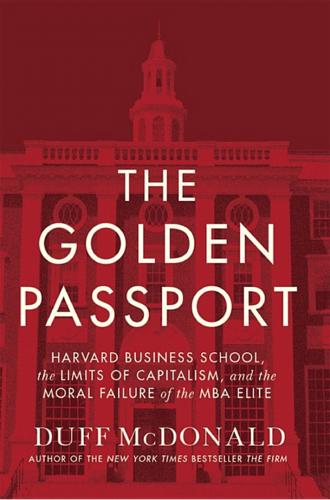
The Golden Passport: Harvard Business School, the Limits of Capitalism, and the Moral Failure of the MBA Elite
by
Duff McDonald
Published 24 Apr 2017
“The lack of focus on product quality would eventually become a major liability for U.S. manufacturers but that was hard to see in the general prosperity of the 1950s and 1960s as corporate profits continued to rise.”18 Hard to see for business school professors, perhaps. But for everybody else? U.S. manufacturing, which by that point had come to specialize in planned obsolescence, plastic, synthetics, and other assorted crap, certainly knew that they were stinting on quality in favor of profits. Consider the television hit Mad Men, which, while fictional, did a fantastic job of revealing the alienation and ruthlessness underlying America’s high-gloss exterior at the time.
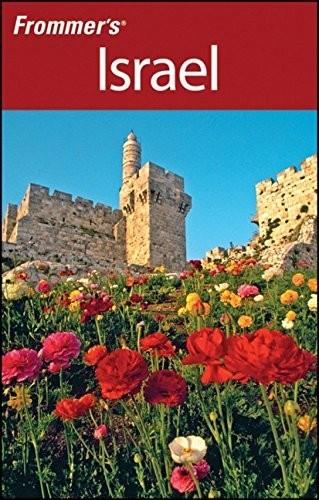
Frommer's Israel
by
Robert Ullian
Published 31 Mar 1998
Brand-new rooms are designed to look like sleek, efficient offices; they’re equipped with DSL Internet connections, interactive TVs, and a keyboard that enables surfing via the TV screen. Rooms are compact but contain a good-size work desk and a safe that’s roomy enough to accommodate a laptop. Despite the ultramodern aura of planned obsolescence, there’s a rooftop sun deck, a friendly bar/lounge, and the beckoning beach just half a block away, all of which make the Sea.Net a pleasant choice for tourists as well as business travelers. 6 Nes Ziona St., Tel Aviv. & 03/517-1655. Fax 03/517-1655. www.seanethotel.co.il. 70 units. $100–$170 (£50–£85).
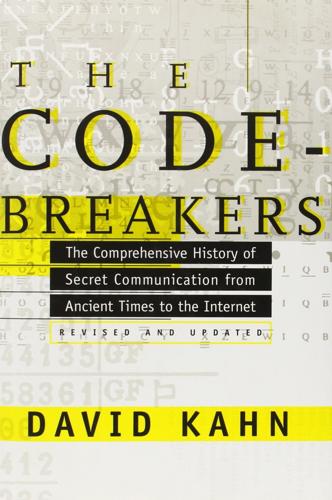
The Codebreakers: The Comprehensive History of Secret Communication From Ancient Times to the Internet
by
David Kahn
Published 1 Feb 1963
The 2,000 (later 4,000) plaintext expressions of the Satzbuch were represented by thoroughly mixed three-letter codewords. It provided numerous homophones (anschluss fehlt, [“link-up missed”] = KXL, ROQ, UDZ) and many Blinde Signale, or nulls. Unlike the code chiffré, it was not superenciphered; it relied instead on planned obsolescence for security. At first a new codebook was issued about every month, but the interval was gradually cut down to about 15 days. This multiplicity of codes in time was matched by one in space. Where at first the entire front shared a single code, soon army groups and then individual armies had their own Satzbucher.